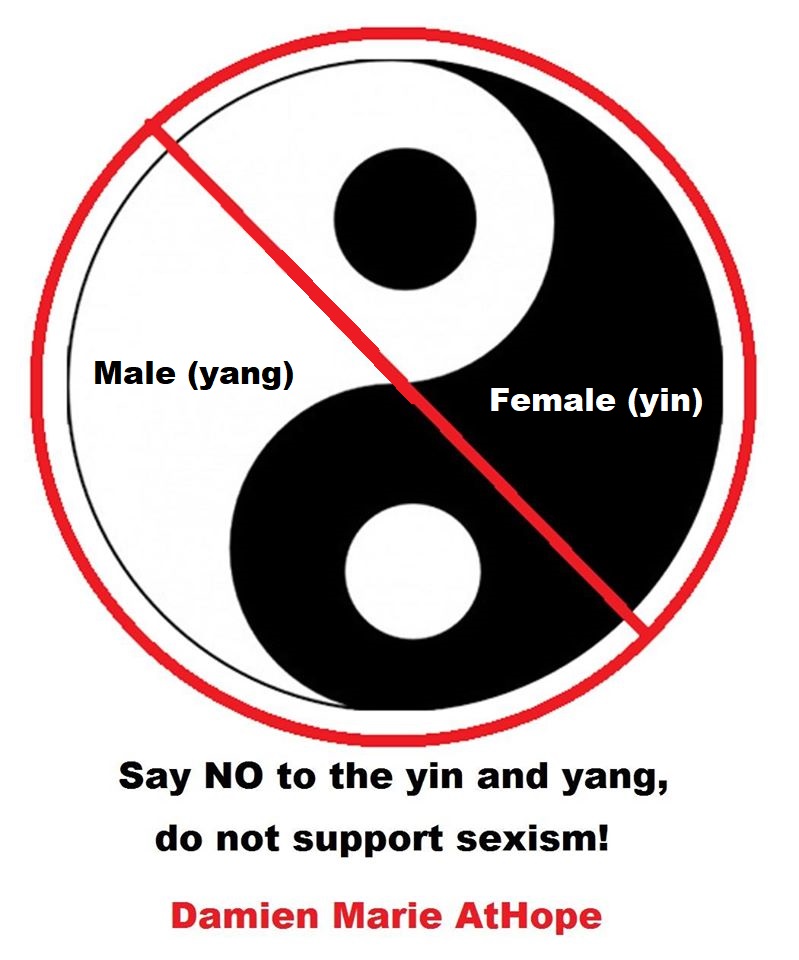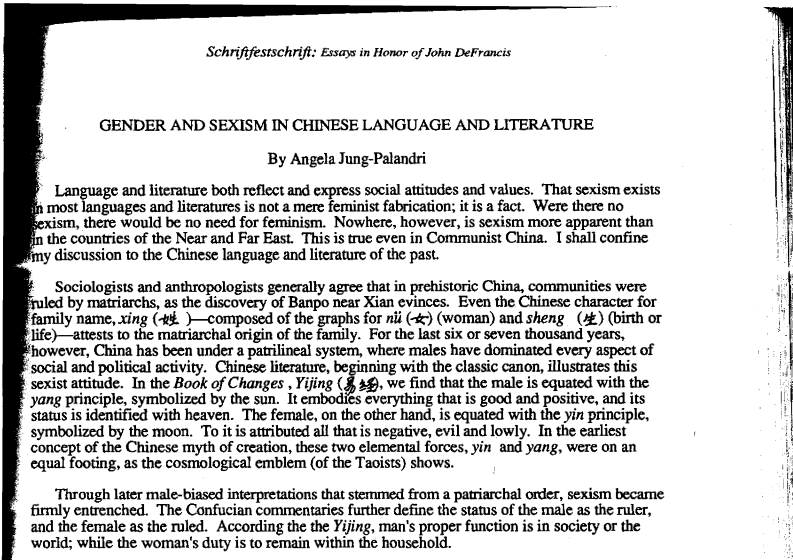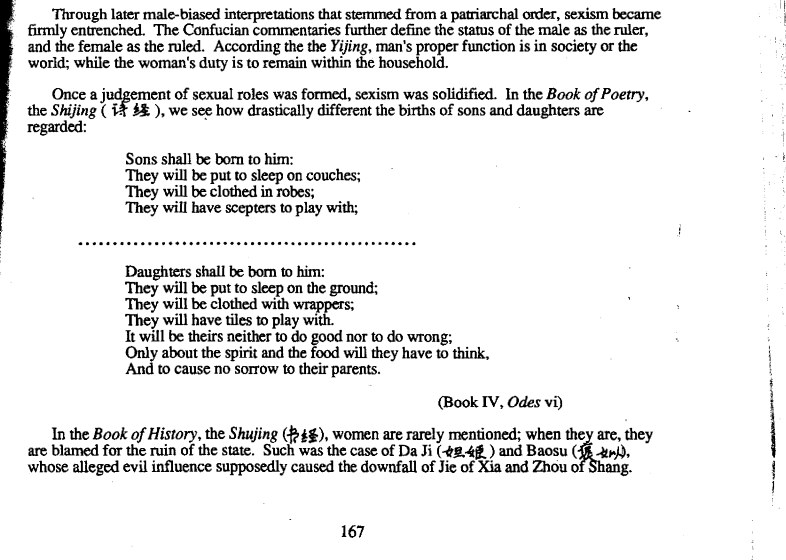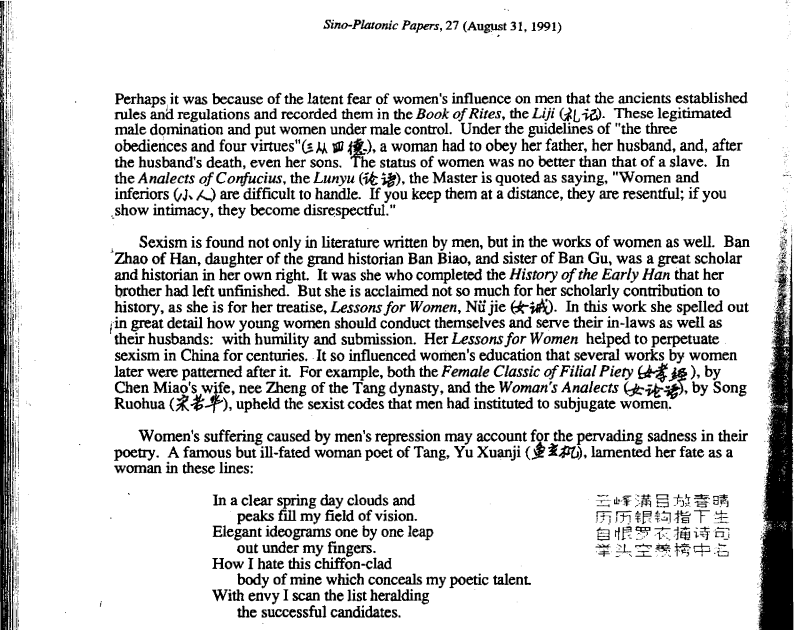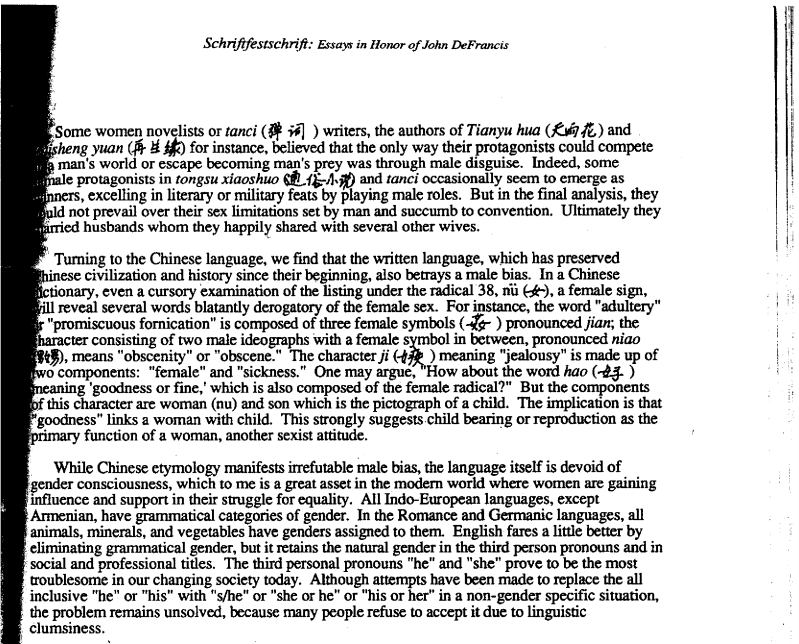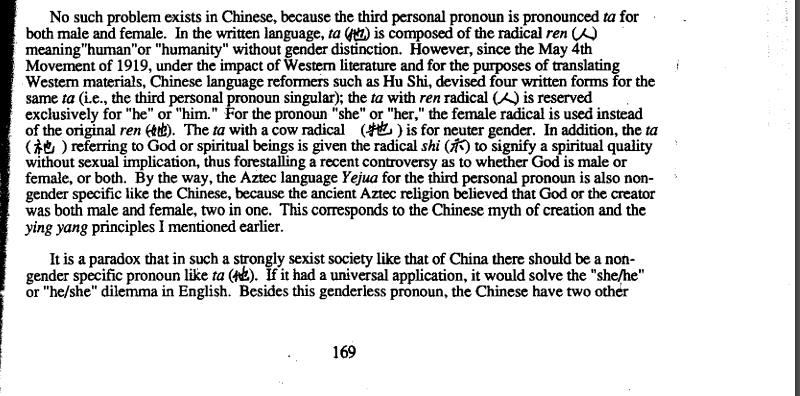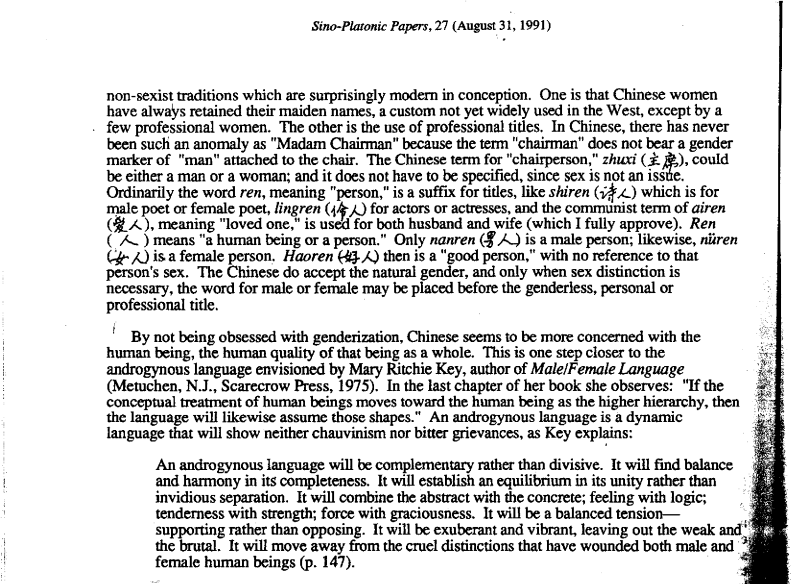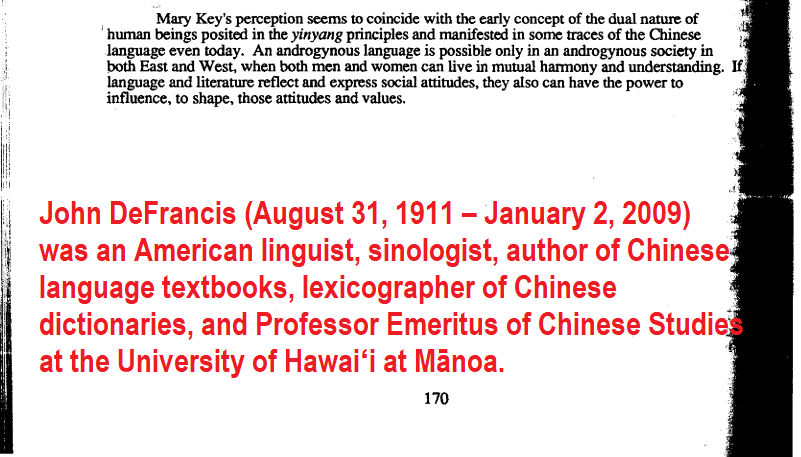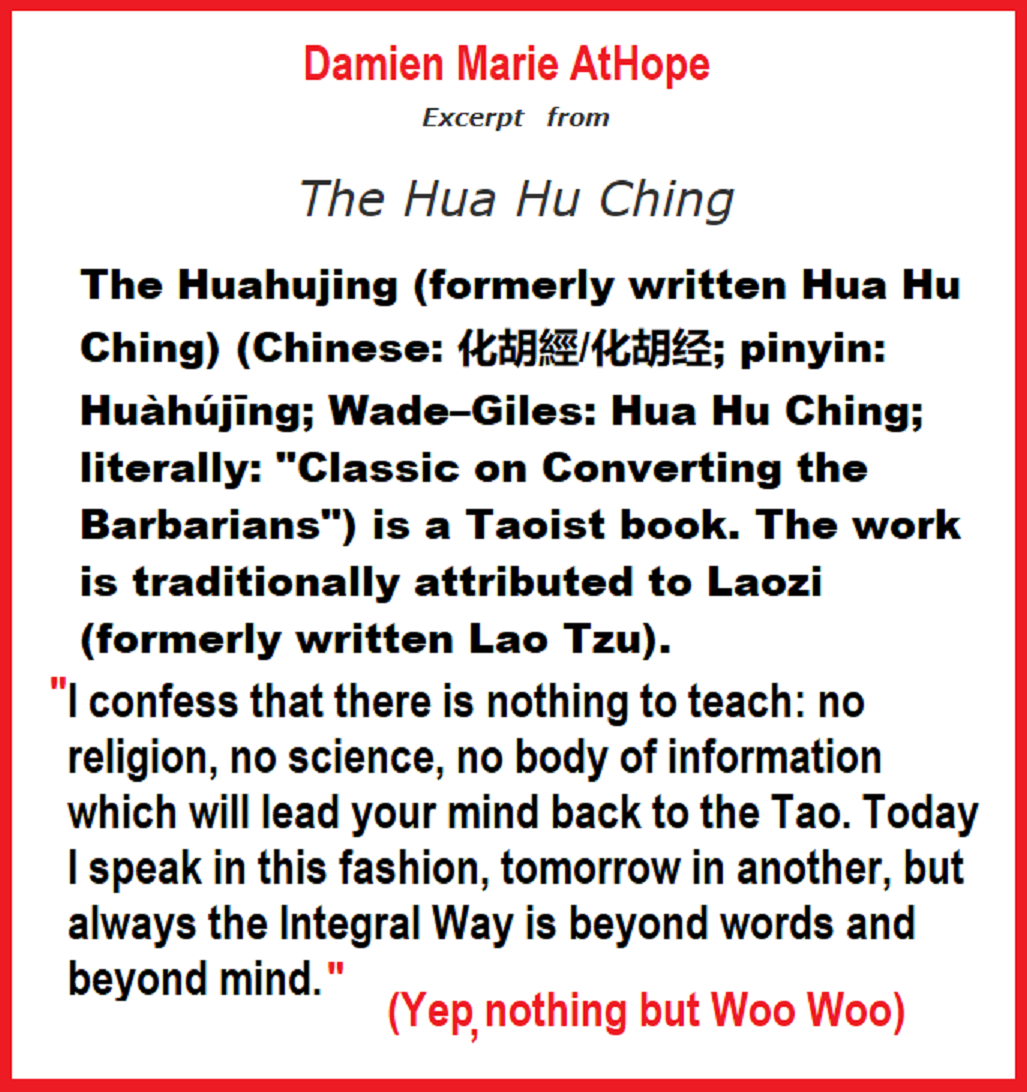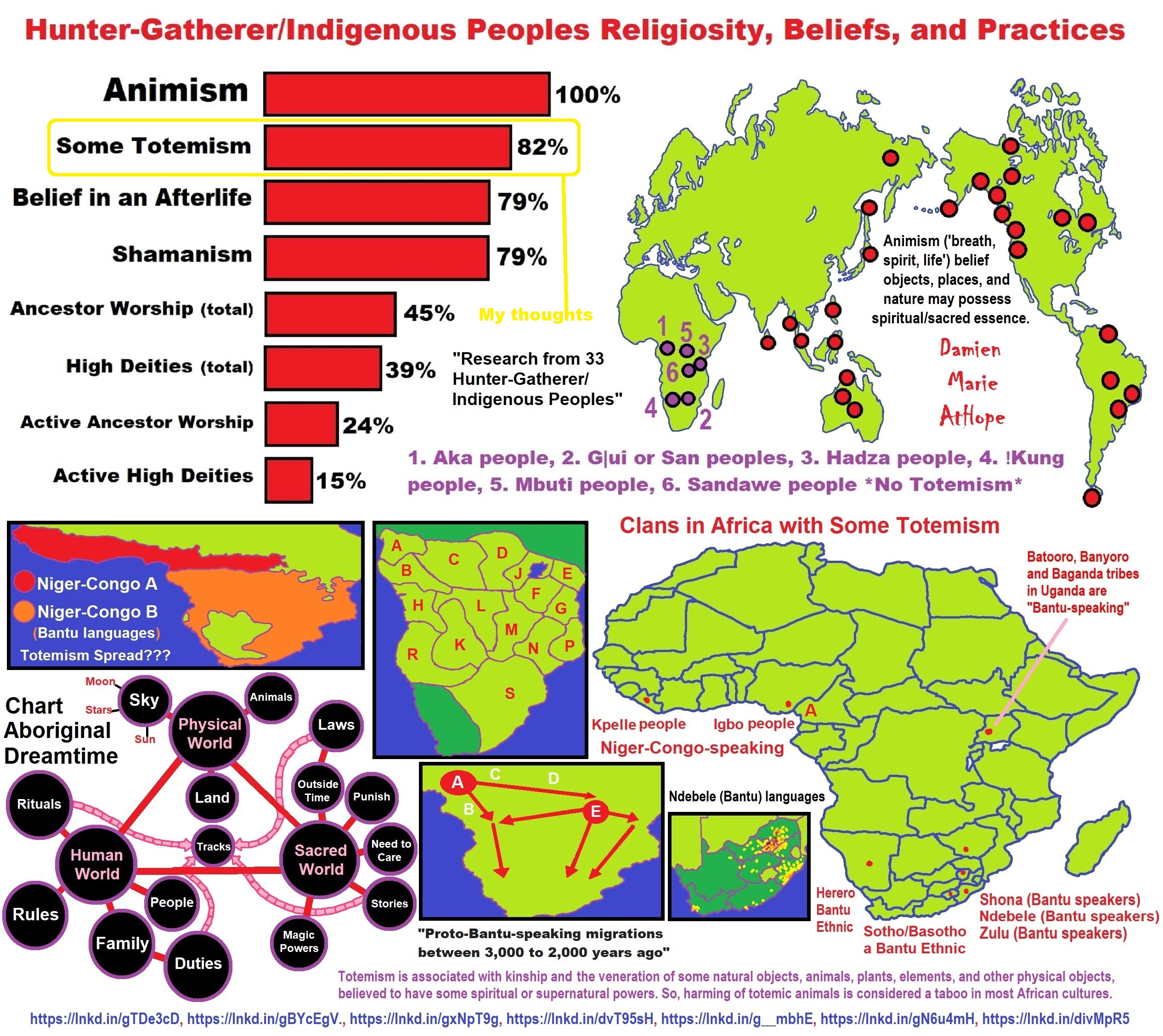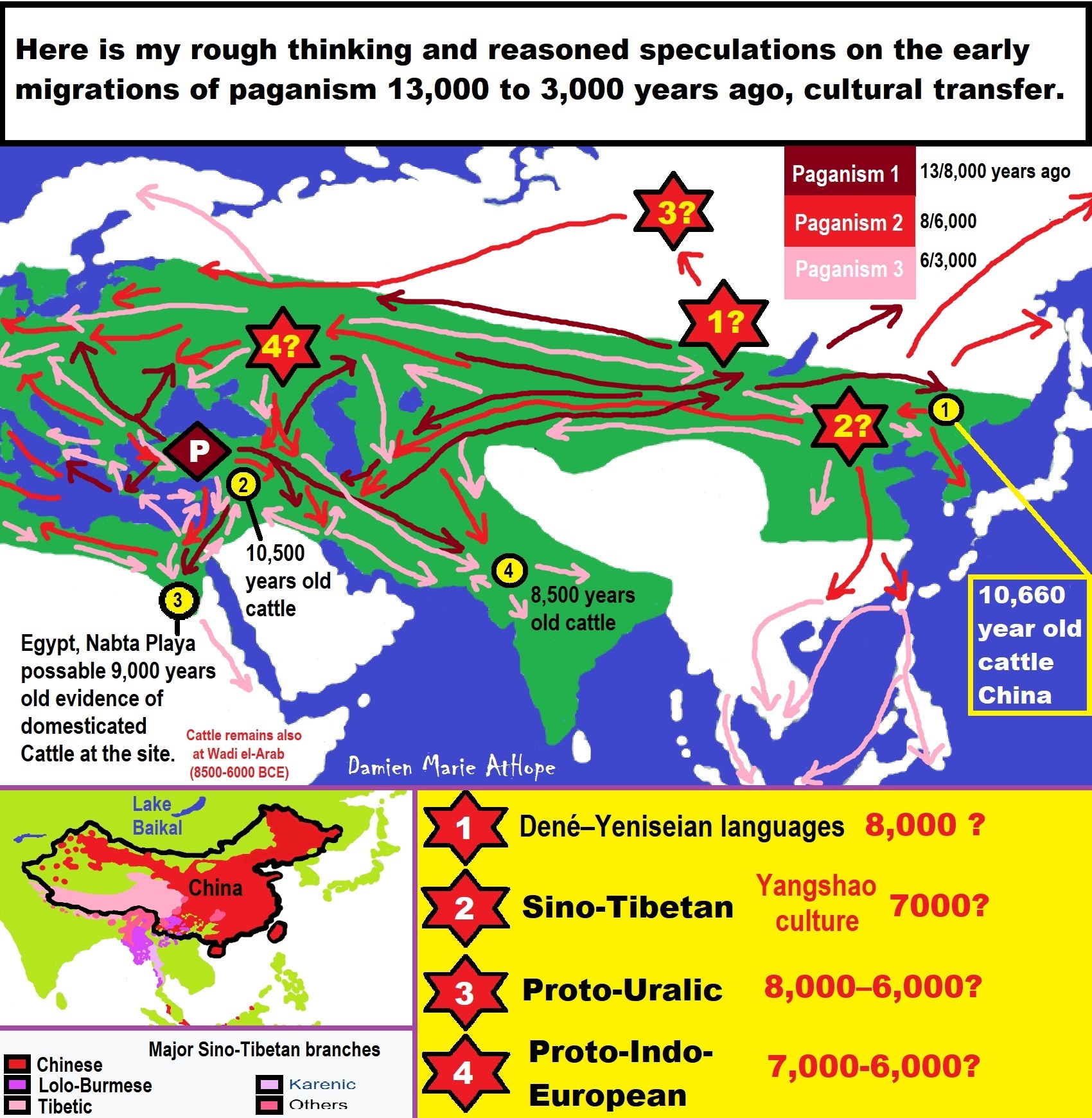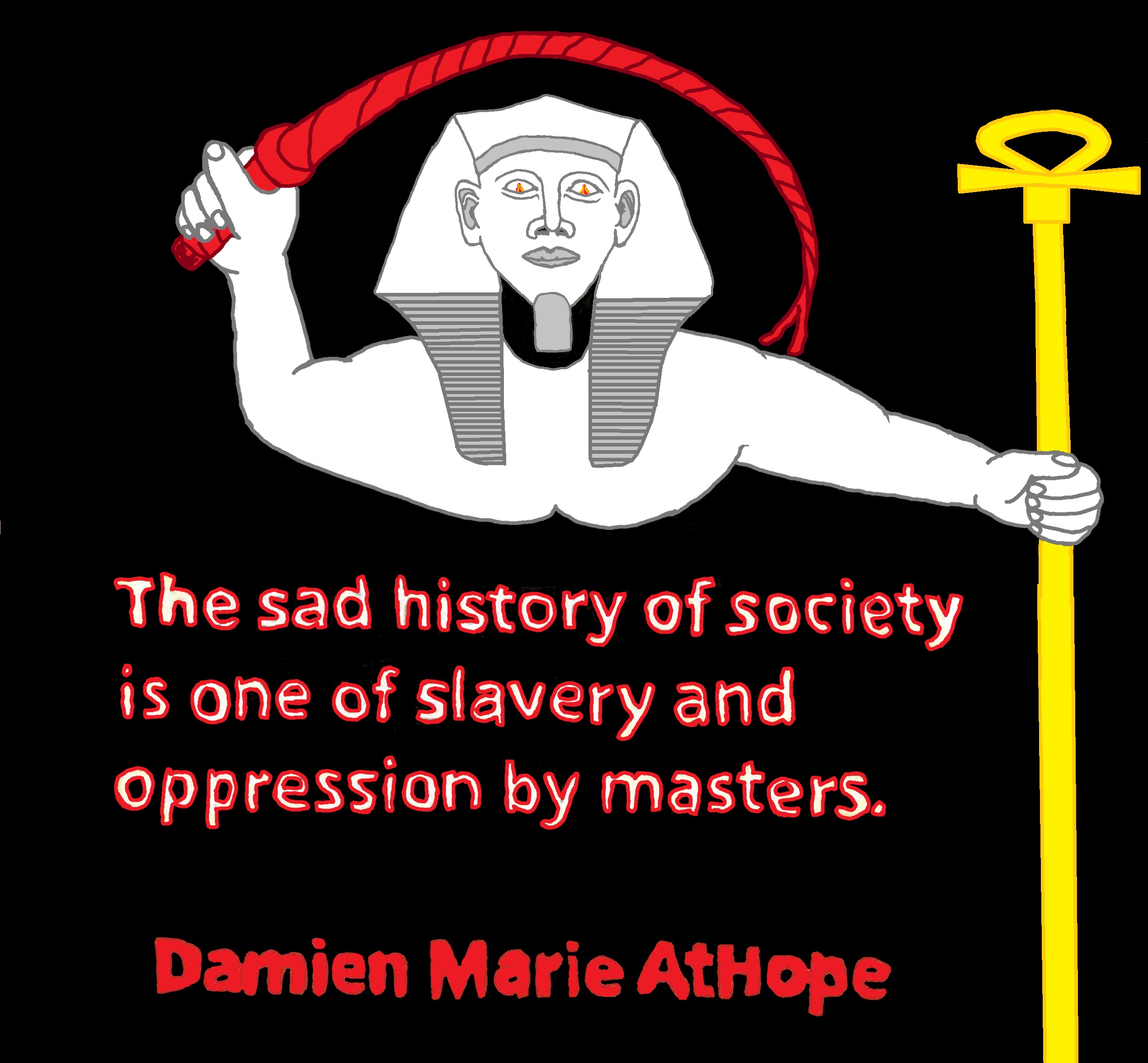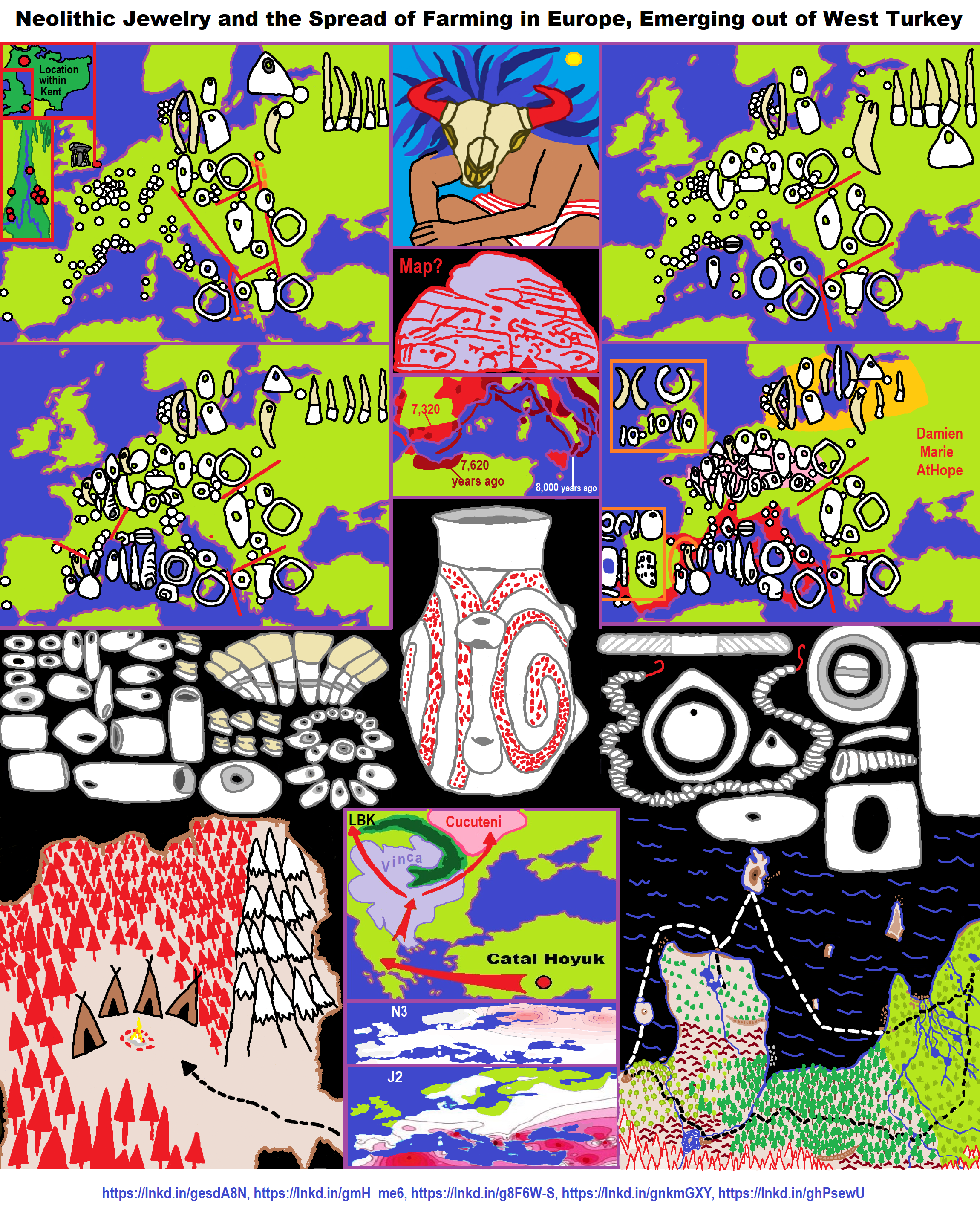
The later yin and yang energy designs seem to appear in Europe around 7,000 years ago and relate to new violence and the birth or expansion of the new male god that was combined with the old female god making a divine couple also relating to the sun and moon I would suspect.
“The Linear Pottery culture is a major archaeological horizon of the European Neolithic, flourishing c. 5500–4500 BCE or 7,520-6,520 years ago. It is abbreviated as LBK (from German: Linearbandkeramik), and is also known as the Linear Band Ware, Linear Ware, Linear Ceramics, or Incised Ware culture, and falls within the Danubian I culture of V. Gordon Childe.” ref
“The densest evidence for the culture is on the middle Danube, the upper and middle Elbe, and the upper and middle Rhine. It represents a major event in the initial spread of agriculture in Europe. The pottery after which it was named consists of simple cups, bowls, vases, and jugs, without handles, but in a later phase with lugs or pierced lugs, bases, and necks.” ref
“Important sites include Nitra in Slovakia; Bylany in the Czech Republic; Langweiler and Zwenkau in Germany; Brunn am Gebirge in Austria; Elsloo, Sittard, Köln-Lindenthal, Aldenhoven, Flomborn, and Rixheim on the Rhine; Lautereck and Hienheim on the upper Danube; and Rössen and Sonderhausen on the middle Elbe. In 2019, two large Rondel complexes were discovered east of the Vistula River near Toruń in Poland.” ref
“Two variants of the early Linear Pottery culture are recognized:
- The Early or Western Linear Pottery Culture developed on the middle Danube, including western Hungary, and was carried down the Rhine, Elbe, Oder, and Vistula.
- The Eastern Linear Pottery Culture flourished in eastern Hungary.” ref
“Middle and late phases are also defined. In the middle phase, the Early Linear Pottery culture intruded upon the Bug-Dniester culture and began to manufacture musical note pottery. In the late phase, the Stroked Pottery culture moved down the Vistula and Elbe.” ref
“A number of cultures ultimately replaced the Linear Pottery culture over its range, but without a one-to-one correspondence between its variants and the replacing cultures. The culture map, instead, is complex. Some of the successor cultures are the Hinkelstein, Großgartach, Rössen, Lengyel, Cucuteni-Trypillian, and Boian-Maritza cultures.” ref
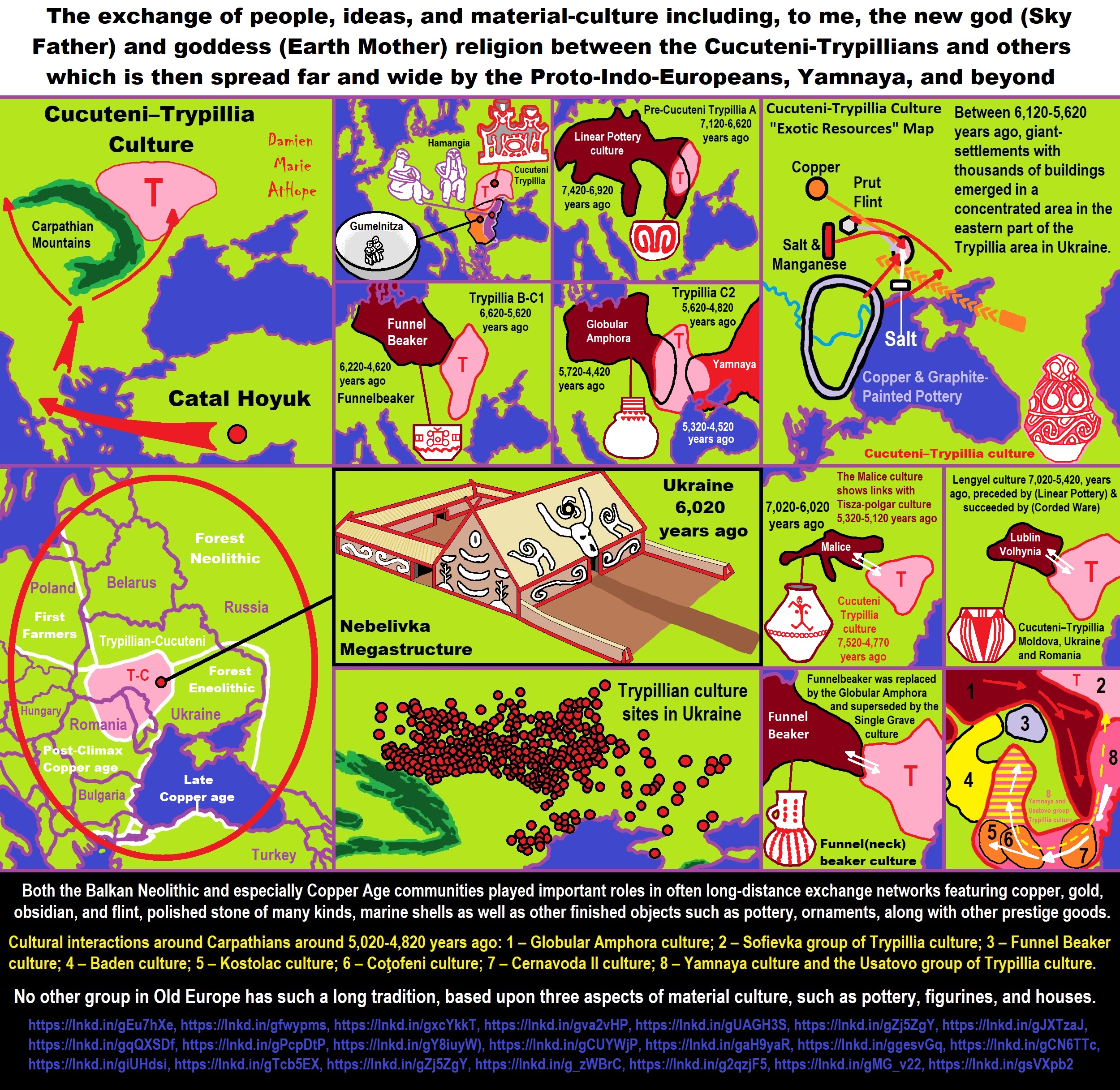
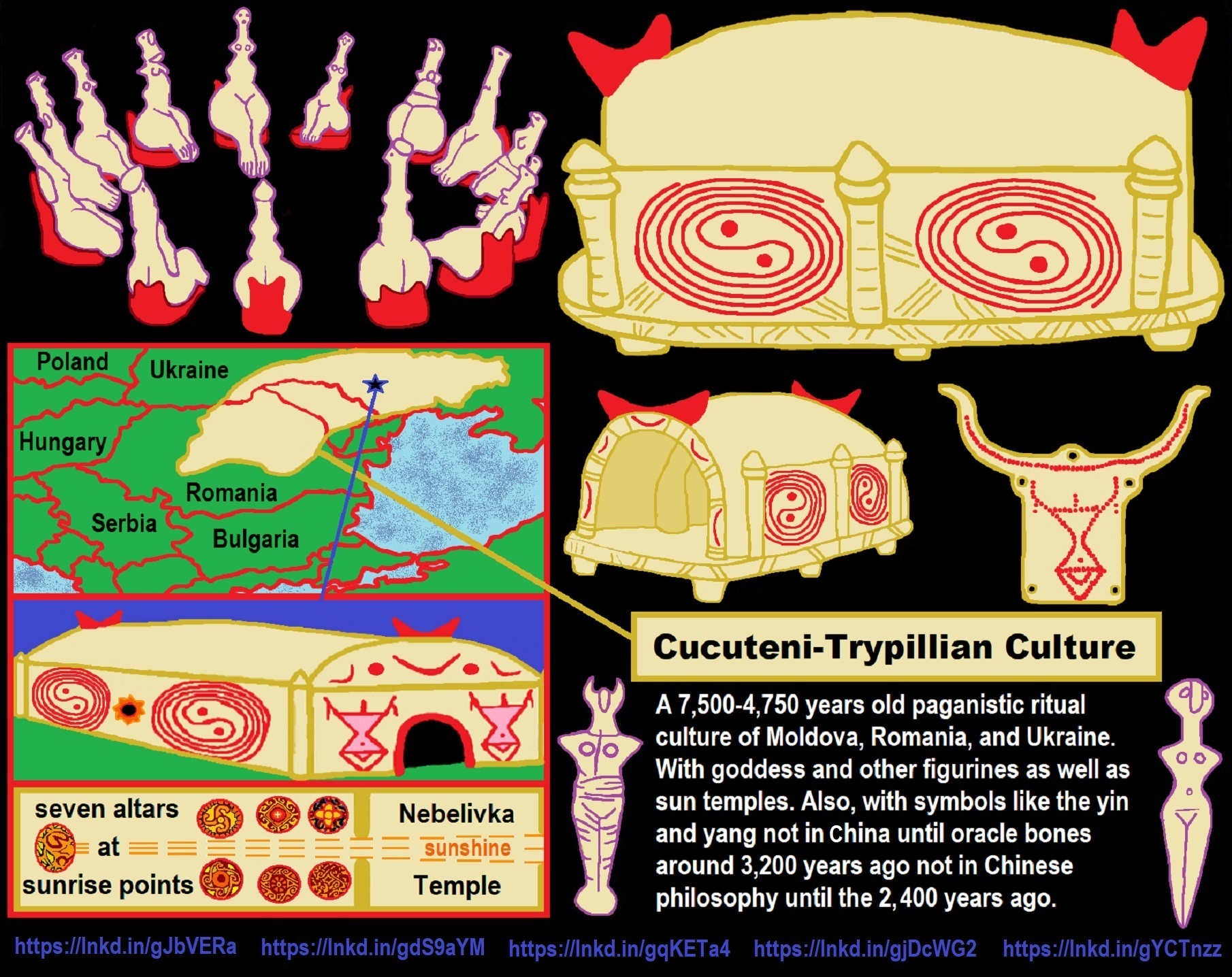
“The Cucuteni–Trypillia culture (Romanian: Cultura Cucuteni and Ukrainian: Трипільська культура), also known as the Tripolye culture (Russian: Трипольская культура), is a Neolithic–Eneolithic archaeological culture (c. 5500 to 2750 BCE or 7,520-4,770 years ago) of Eastern Europe.” ref
“It extended from the Carpathian Mountains to the Dniester and Dnieper regions, centered on modern-day Moldova and covering substantial parts of western Ukraine and northeastern Romania, encompassing an area of 350,000 km2 (140,000 sq mi), with a diameter of 500 km (300 mi; roughly from Kyiv in the northeast to Brașov in the southwest). The majority of Cucuteni–Trypillia settlements consisted of high-density, small settlements (spaced 3 to 4 kilometers apart), concentrated mainly in the Siret, Prut, and Dniester river valleys.” ref
“During the Middle Trypillia phase (c. 4000 to 3500 BCE), populations belonging to the Cucuteni–Trypillia culture built the largest settlements in Neolithic Europe, some of which contained as many as three thousand structures and were possibly inhabited by 20,000 to 46,000 people.” ref
China and Europe were more connected than ever thought. Ideas, technology, and people moved back and forth across the steep lands.
“Millets may have been consumed by humans for about 7,000 years and potentially had “a pivotal role in the rise of multi-crop agriculture and settled farming societies.” Millets are a group of highly variable small-seeded grasses, widely grown around the world as cereal crops or grains for fodder and human food. Millets are important crops in the semiarid tropics of Asia and Africa (especially in India, Mali, Nigeria, and Niger), with 97% of millet production in developing countries. The crop is favored due to its productivity and short growing season under dry, high-temperature conditions.” ref
“Proso millet (Panicum miliaceum) and foxtail millet (Setaria italica) were important crops beginning in the Early Neolithic of China. Some of the earliest evidence of millet cultivation in China was found at Cishan (north), where proso millet husk phytoliths and biomolecular components have been identified around 10,300–8,700 years ago in storage pits along with remains of pit-houses, pottery, and stone tools related to millet cultivation. Evidence at Cishan for foxtail millet dates back to around 8,700 years ago. The oldest evidence of noodles in China were made from these two varieties of millet in a 4,000-year-old earthenware bowl containing well-preserved noodles found at the Lajia archaeological site in north China.” ref
“The cultivation of common millet as the earliest dry crop in East Asia has been attributed to its resistance to drought, and this has been suggested to have aided its spread. Asian varieties of millet made their way from China to the Black Sea region of Europe by 5000 BCE or 7,020 years ago. Millet was growing wild in Greece as early as 3000 BCE or 5,020 years ago, and bulk storage containers for millet have been found from the Late Bronze Age in Macedonia and northern Greece. Hesiod describes that “the beards grow round the millet, which men sow in summer.” And millet is listed along with wheat in the third century BCE by Theophrastus in his “Enquiry into Plants.” ref
Europeans hed back to China through the Afanasevan population
“The Afanasevan population was descended from people who migrated c. 3700–3300 BCE or 5,720-5,320 years ago across the Eurasian Steppe from the pre-Yamnaya Repin culture of the Don–Volga region. Because of its geographical location and dating, Anthony and earlier scholars such as Leo Klejn, J. P. Mallory and Victor H. Mair have linked the Afanasevans to the Proto-Tocharian language. The Afanasevan population is thought to be one of the earliest known archaeological culture of south Siberia, occupying the Minusinsk Basin and the Altai Mountains during the eneolithic era, c. 3300 to 2500 BCE or 5,320-4,520 years ago.” ref
“Proto-Tocharian, also spelled Proto-Tokharian (/təˈkɛəriən/ or /təˈkɑːriən/), is the reconstructed proto-language of the extinct Tocharian branch of the Indo-European languages. Proto-Tocharian is the unattested reconstructed ancestor of an Indo-European eponymous extinct branch, known from manuscripts dating from the 5th to the 8th century AD, which were on the northern edge of the Tarim Basin and the Lop Desert.” ref
“Allentoft et al. (2015) published a genetic study including four females from the Afanasievo culture. Two individuals carried mtDNA haplogroup J2a2a, one carried T2c1a2, and one carried U5a1a1. The authors found that the Afanasievo were “genetically indistinguishable” from the Yamnaya culture. The results indicated that the expansion of the ancestors of the Afanasievo people into the Altai was carried out through “large-scale migrations and population displacements”, without admixture with local populations. The Afanasievo people were also found to be closely related to the Poltavka culture. The authors conclude that the Afansievo people were Indo-Europeans, perhaps ancestors of the Tocharians.” ref
“Narasimhan et al. (2019) analyzed the remains of 24 individuals ascribed to the Afanasievo culture. Of the 14 samples of Y-DNA extracted, 10 belonged to R1b1a1a2a2, 1 to R1b1a1a2a, and 3 belonged to Q1a2. The mtDNA samples belonged to subclades of U (particularly of U5), along with T, J, H, and K. The authors interpreted these results as evidence for a migration from the Pontic–Caspian steppe. Avoiding some double countings, as of 2021 there have been 18 finds of R1b, 3x Q1(b), 1x J1, and a late of C2.” ref
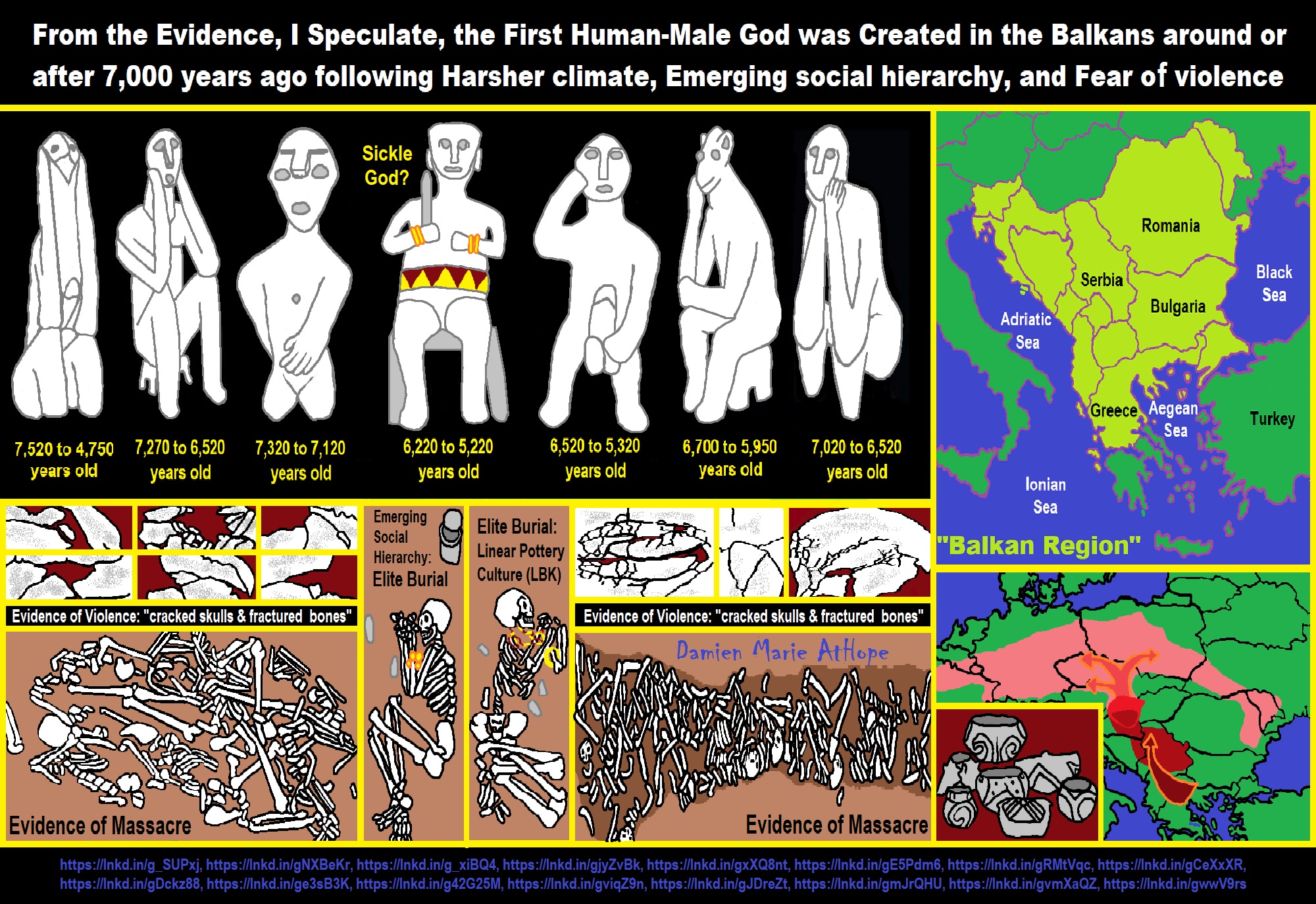
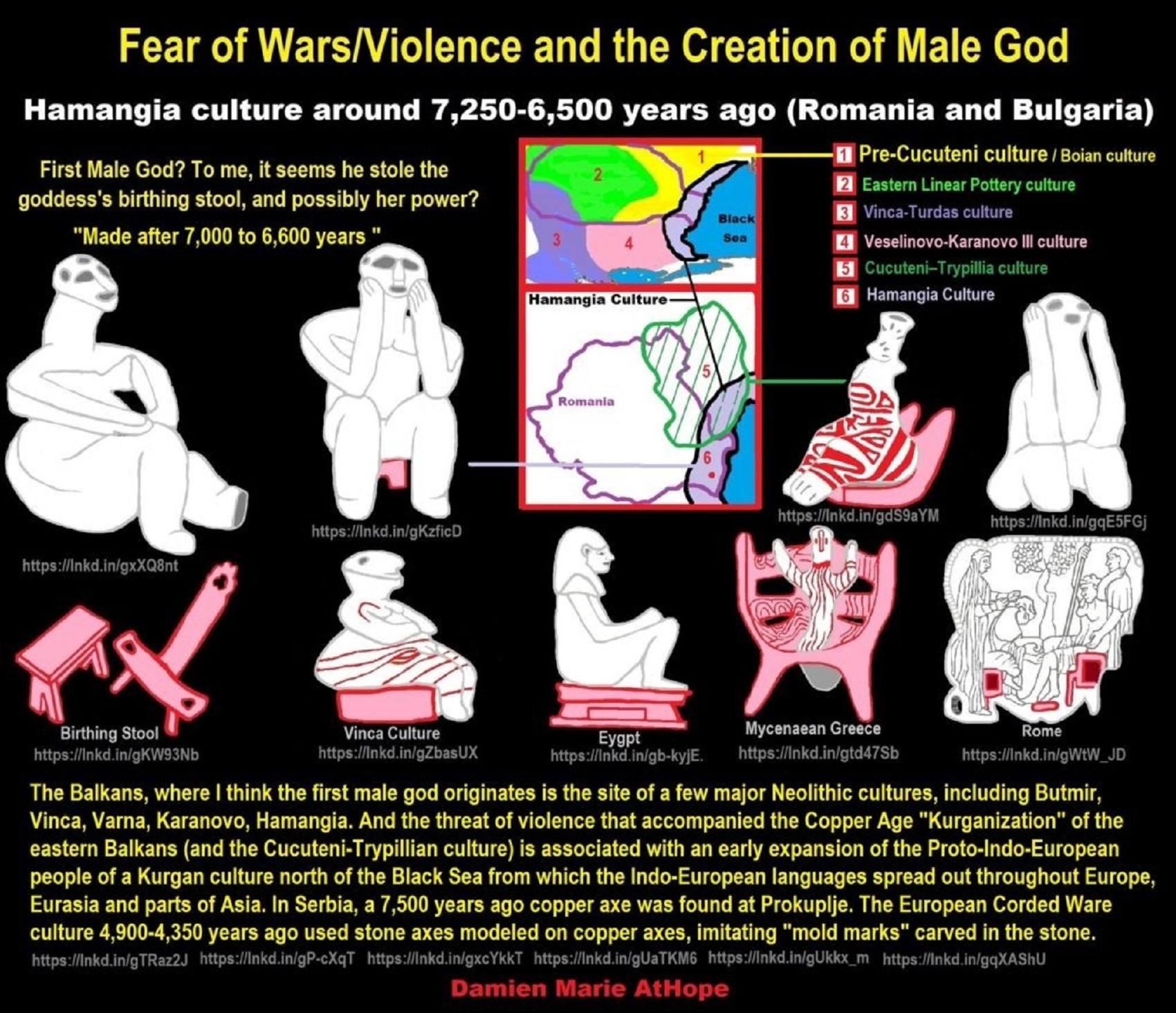
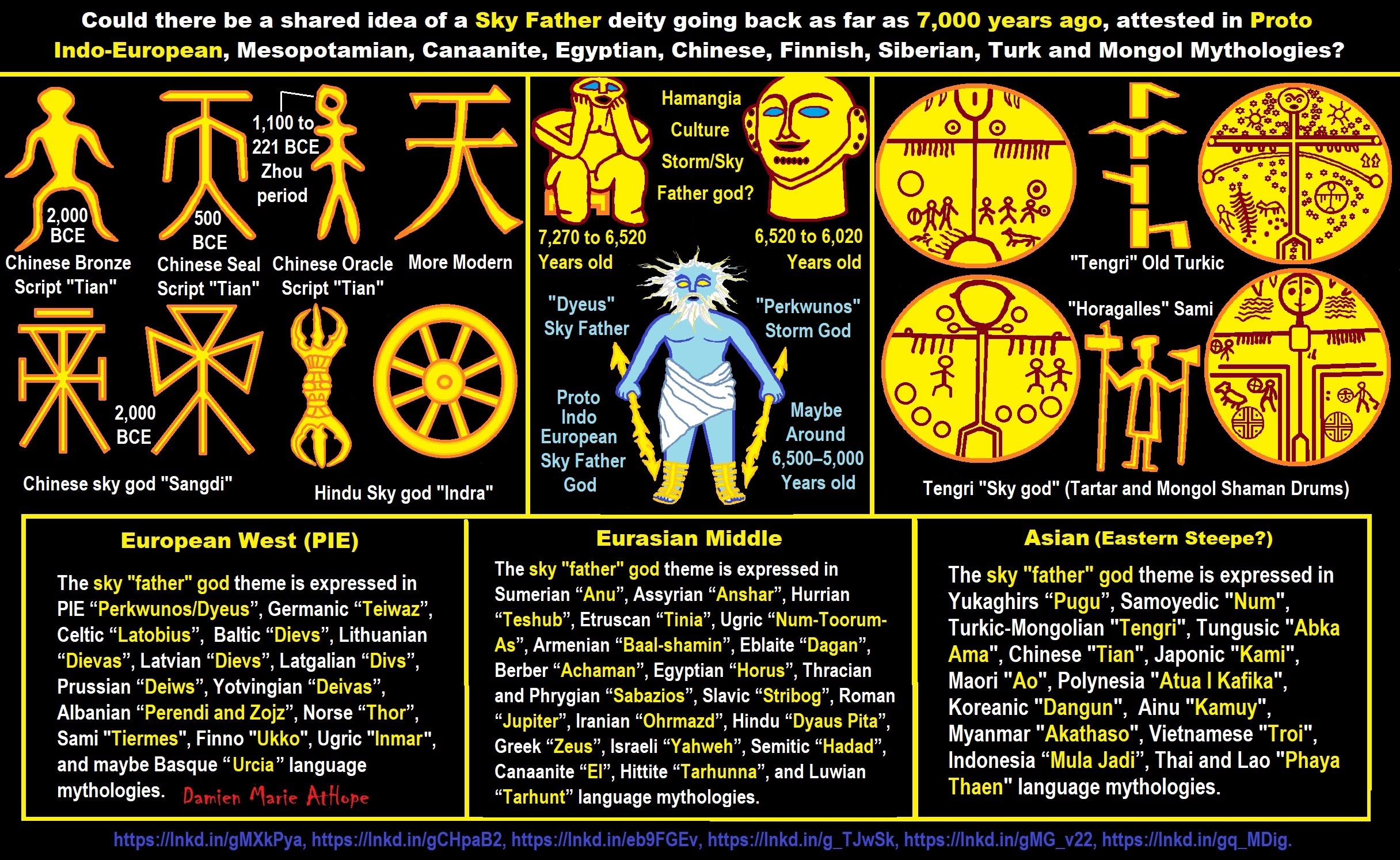
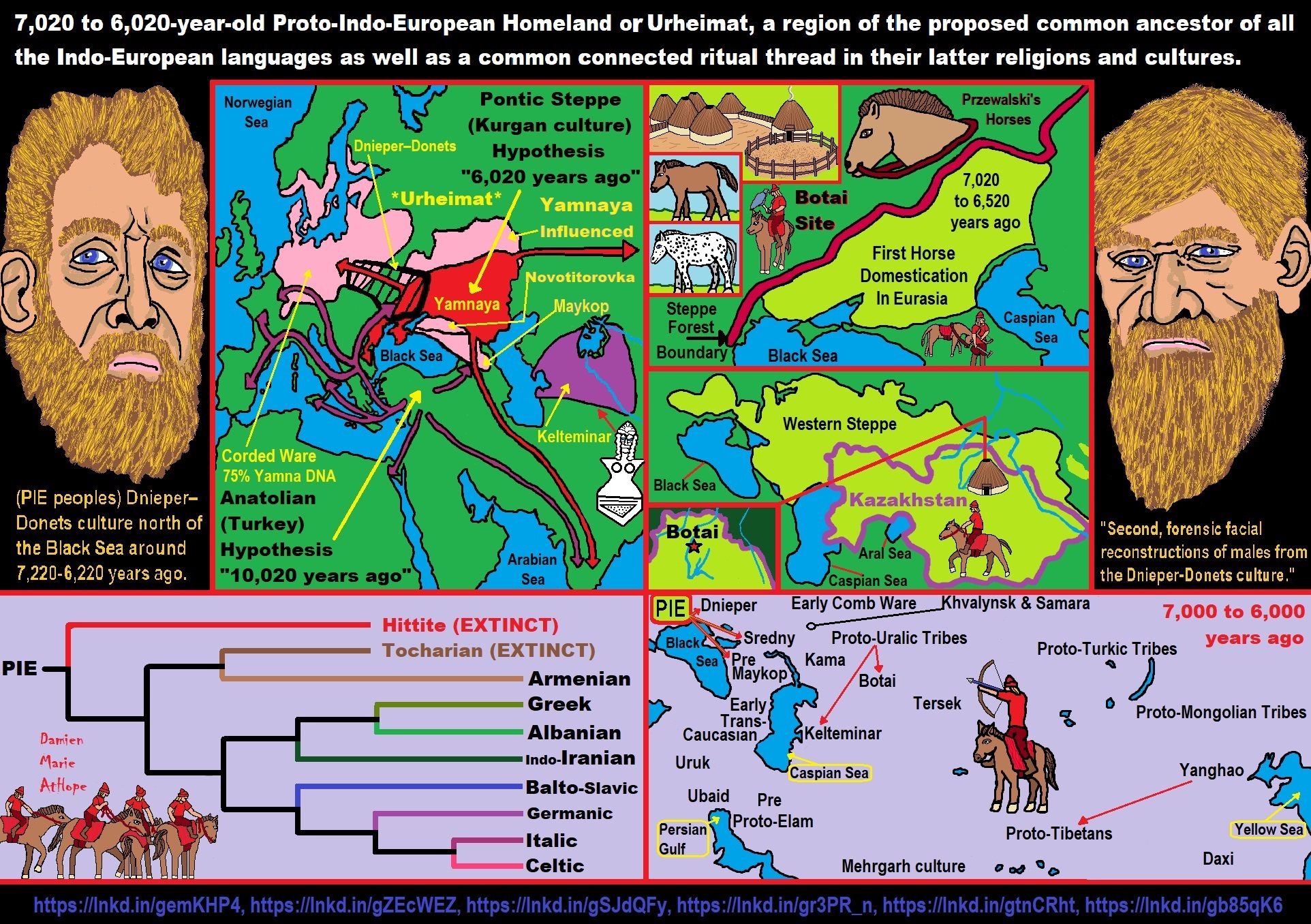
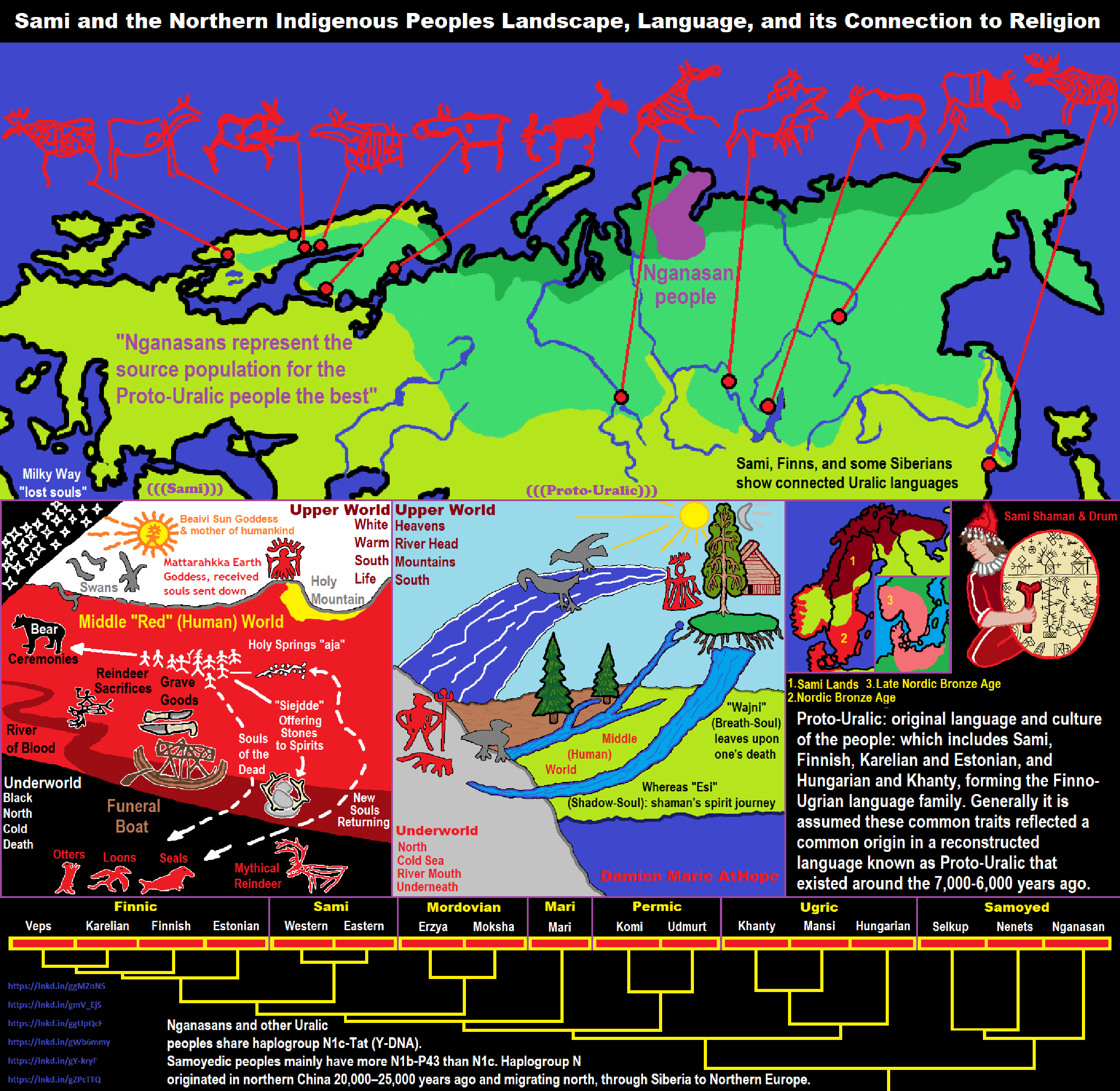
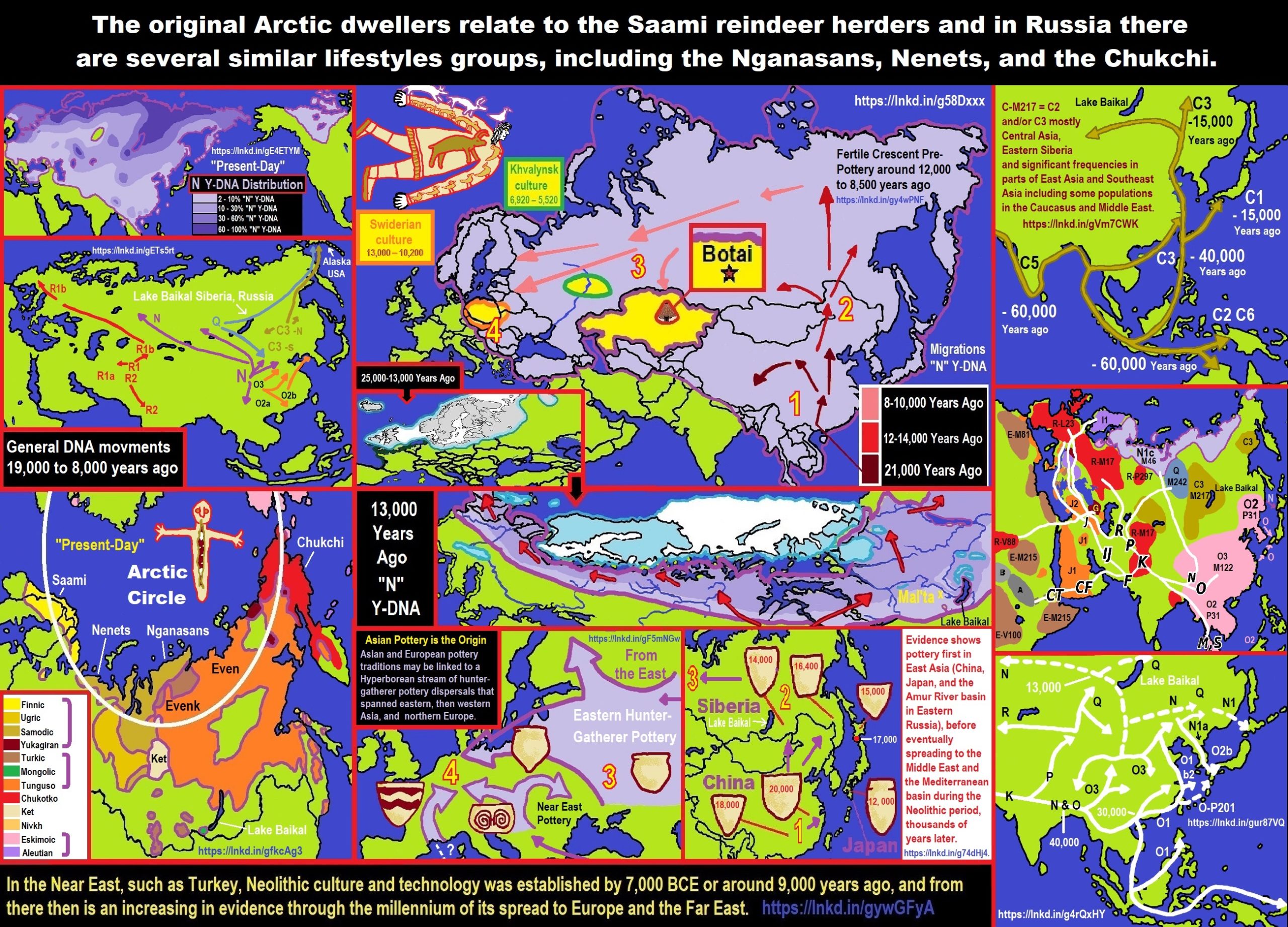
ref, ref, ref, ref, ref, ref, ref, ref, ref, ref, ref, ref, ref, ref, ref, ref, ref
“The shaman is, above all, a connecting figure, bridging several worlds for his people, traveling between this world, the underworld, and the heavens. He transforms himself into an animal and talks with ghosts, the dead, the deities, and the ancestors. He dies and revives. He brings back knowledge from the shadow realm, thus linking his people to the spirits and places which were once mythically accessible to all.–anthropologist Barbara Meyerhoff” ref
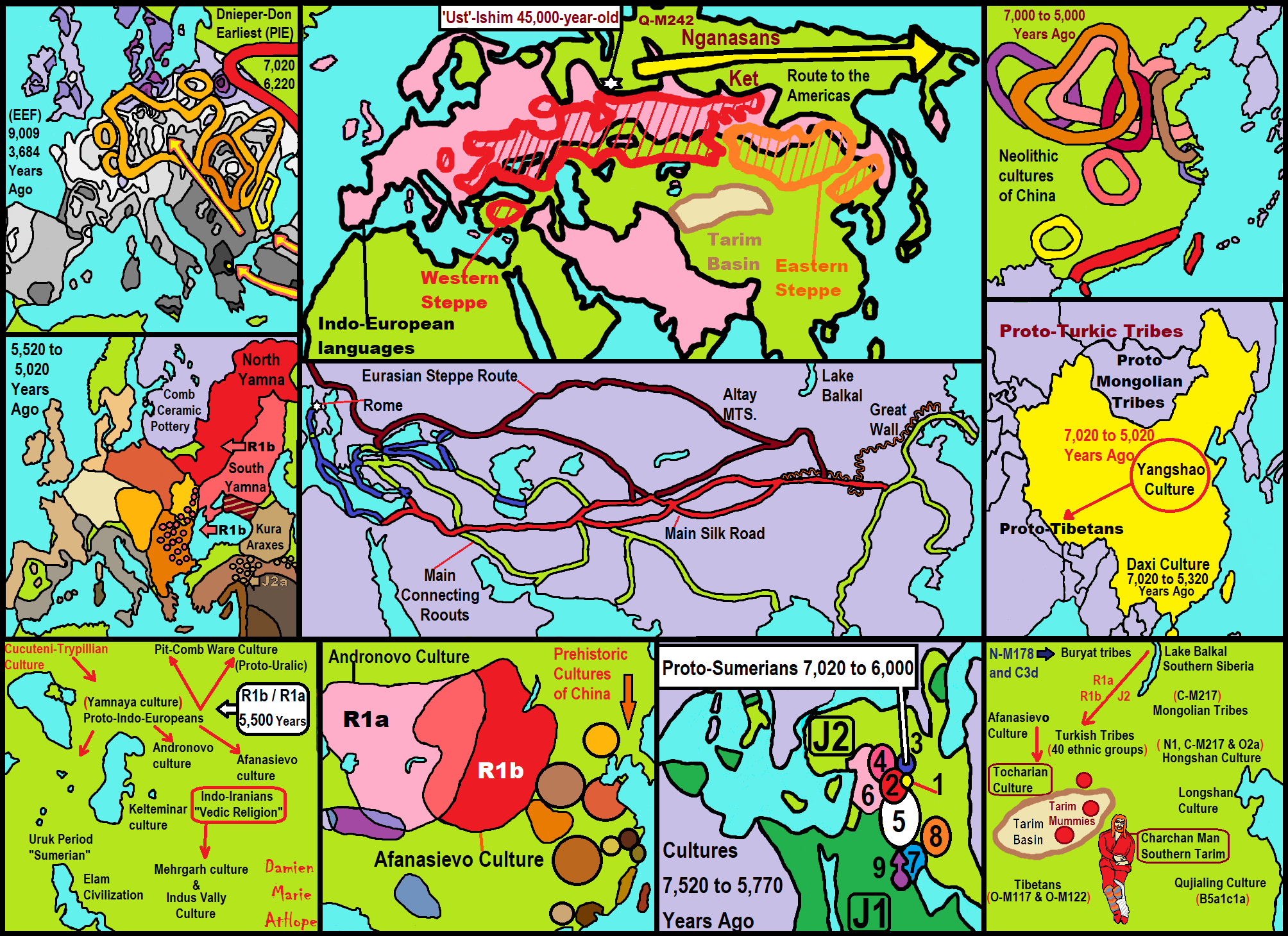
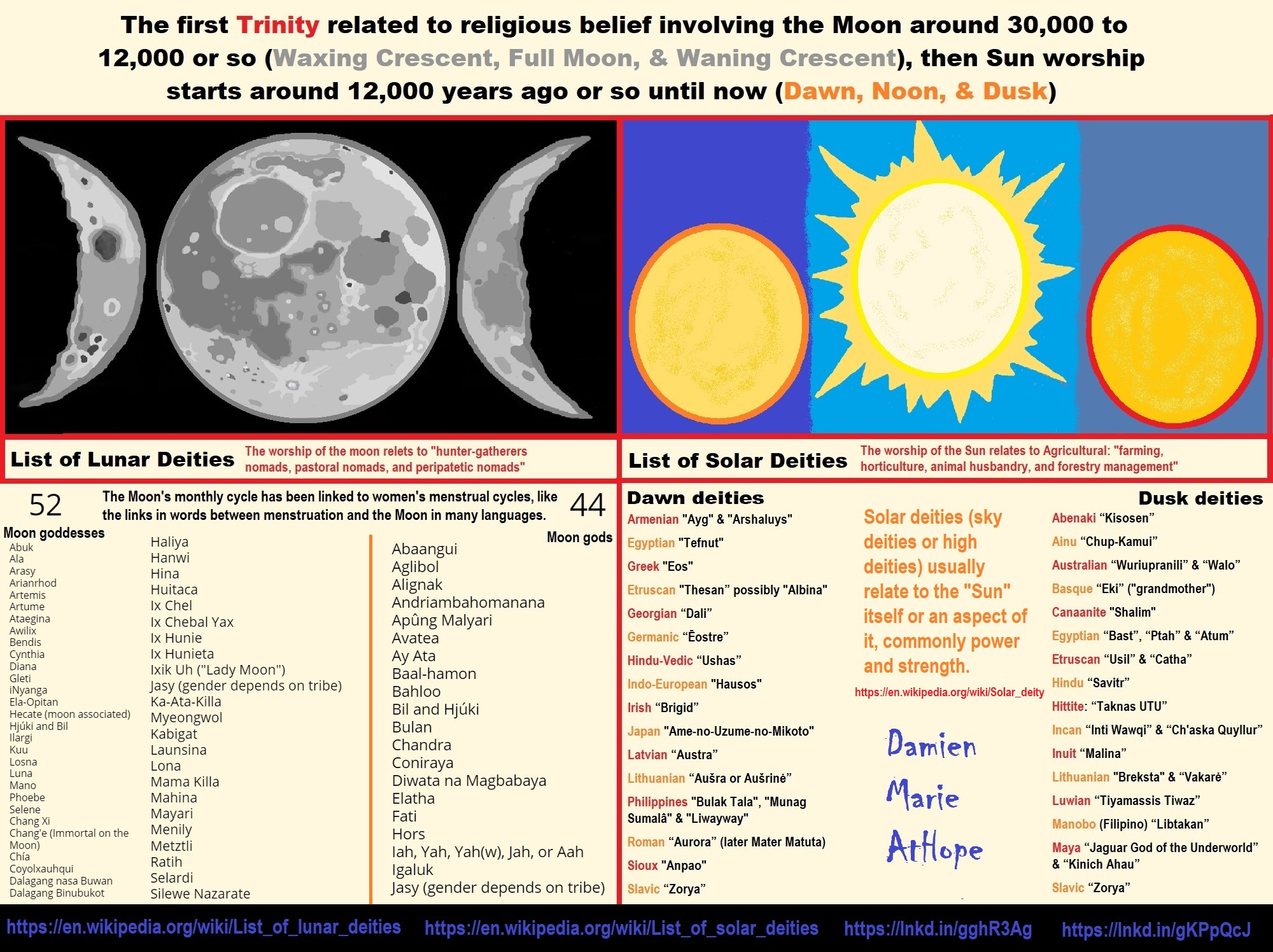
ref, ref, ref, ref, ref, ref, ref
List of Lunar Deities
“In mythology, a lunar deity is a god or goddess of the Moon, sometimes as a personification. These deities can have a variety of functions and traditions depending upon the culture, but they are often related. Some forms of moon worship can be found in most ancient religions. The Moon features prominently in art and literature, often with a purported influence in human affairs. Many cultures are oriented chronologically by the Moon, as opposed to the Sun. The Hindu calendar maintains the integrity of the lunar month and the moon god Chandra has religious significance during many Hindu festivals (e.g. Karwa Chauth, Sankashti Chaturthi, and during eclipses). The ancient Germanic tribes were also known to have a lunar calendar.” ref
“Many cultures have implicitly linked the 29.5-day lunar cycle to women’s menstrual cycles, as evident in the shared linguistic roots of “menstruation” and “moon” words in multiple language families. This identification was not universal, as demonstrated by the fact that not all moon deities are female. Still, many well-known mythologies feature moon goddesses, including the Greek goddess Selene, the Roman goddess Luna, and the Chinese goddess Chang’e. Several goddesses including Artemis, Hecate, and Isis did not originally have lunar aspects, and only acquired them late in antiquity due to syncretism with the de facto Greco-Roman lunar deity Selene/Luna. In traditions with male gods, there is little evidence of such syncretism, though the Greek Hermes has been equated with the male Egyptian lunar god Thoth.” ref
“Male lunar gods are also common, such as Sin of the Mesopotamians, Mani of the Germanic tribes, Tsukuyomi of the Japanese, Igaluk/Alignak of the Inuit, and the Hindu god Chandra. The original Proto-Indo-European lunar deity appears to have been male, with many possible derivatives including the Homeric figure of Menelaus. Cultures with male moon gods often feature sun goddesses. An exception is Hinduism, featuring both male and female aspects of the solar divine. The ancient Egyptians had several moon gods including Khonsu and Thoth, although Thoth is a considerably more complex deity. Set represented the moon in the Egyptian Calendar of Lucky and Unlucky Days.” ref
List of Solar Deities
“A solar deity is a god or goddess who represents the Sun, or an aspect of it, usually by its perceived power and strength. Solar deities and Sun worship can be found throughout most of recorded history in various forms. The following is a list of solar deities. A dawn god or goddess is a deity in a polytheistic religious tradition who is in some sense associated with the dawn. These deities show some relation with the morning, the beginning of the day, and, in some cases, become syncretized with similar solar deities.” ref, ref
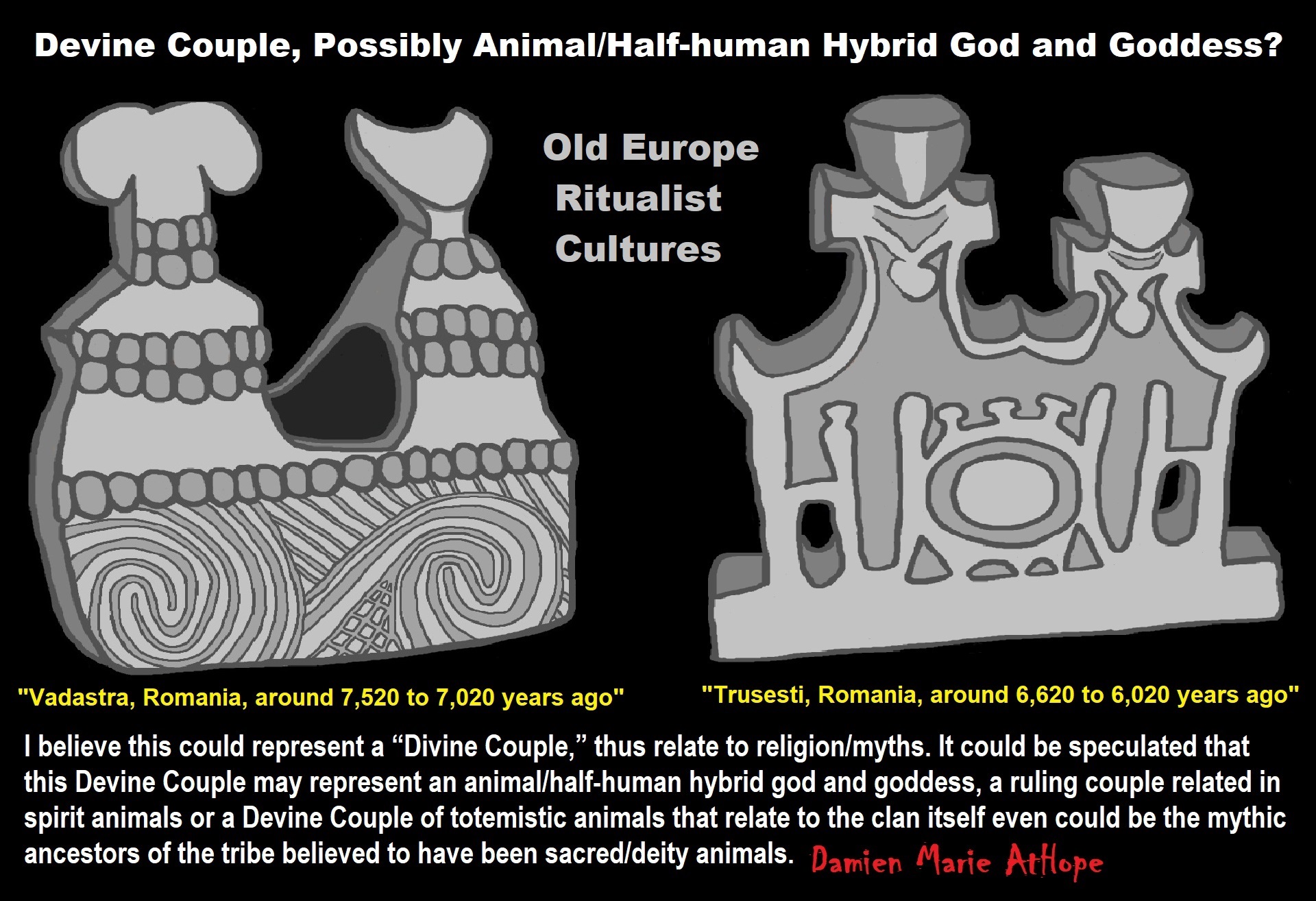
The Tao sees the world as male (yang) and female (yin) which is very sexist. Some think the yin and yang are just good and bad. Never heard of it as sexist. But the white is male and the black is female. Chinese literature beginning with the classic cannon Yijing (book of Changes) we see sexism as we find the male (yang) symbolized as day or the sun embodying everything good and positive, and this status is identified with heaven. Whereas the female (yin) is symbolized as night or the moon embodying everything negative, evil and lowly. Ref
The idea of balancing male and female energies is fundamental to Taoism, and applies to women as well as to men. One early practice was ritual sexual intercourse between men and women who were not married to one another. These rituals followed strict guidelines, and the goal was the union of yin and yang energies. In the Taode jing offers a females role is made clear in passages like this one from Chapter 61: “The Feminine always conquers the Masculine by her quietness, by lowering herself through her quietness. The general stance on gender is there are attitudes expected of women, such as keeping a cheerful attitude or speaking in quiet tones. Divine marriages with deities were one very ancient version of this practice. Ref
On particular holidays, street parades take place. These are lively affairs which invariably involve firecrackers and flower-covered floats broadcasting traditional music. They also variously include lion dances and dragon dances; human-occupied puppets (often of the “Seventh Lord” and “Eighth Lord“); tongji (童乩 “spirit-medium; shaman”) who cut their skin with knives; Bajiajiang, which are Kungfu-practicing honor guards in demonic makeup; and palanquins carrying god-images. The various participants are not considered performers, but rather possessed by the gods and spirits in question. There is also, ancestor worship ceremony led by Taoists. In terms of Ceremonial Taoism, we find a pantheon that is huge, and that includes many important female Gods. Two notable examples are Xiwangmu (Queen of the Immortals) and Shengmu Yuanjun (Mother of the Tao). Similar to the Hindu tradition, then, Ceremonial Taoism offers the possibility of seeing our Divinity represented in female as well as in male forms. In terms of the practice of Neidan (Inner Alchemy), there are places where techniques for men and for women are different. In the introduction to Nourishing the Essence of Life, Eva Wong provides a general outline of these differences: In males, blood is weak and vapor is strong; therefore the male practitioner must refine the vapor and use it to strengthen the blood. … In females, blood is strong and vapor is weak; therefore the female practitioner must refine the blood and use it to strengthen the vapor. (page 22-23) If “dual cultivation” sexual practices are part of our path, there obviously will be differences that correspond to the differences between male and female sexual anatomy. The roots of Taoism lie in the tribal and shamanic cultures of ancient China, which settled along the Yellow River. The wu – the shamans of these cultures – were able to communicate with the spirits of plants, minerals and animals; enter trance-states in which they traveled (in their subtle bodies) to distant galaxies, or deep into the earth; and mediate between the human and supernatural realms. Many of these practices would find expression, later, in the rituals, ceremonies and Inner Alchemy techniques of various Taoist lineages. THE EASTERN HAN DYNASTY (25-220 CE). In this period we see the emergence of Taoism as an organized religion (Daojiao). In 142 CE, the Taoist adept Zhang Daoling – in response to a series of visionary dialogues with Laozi – established the “Way of the Celestial Masters” (Tianshi Dao). Practitioners of Tainshi Dao trace their lineage through a succession of sixty-four Masters, the first being Zhang Daoling, and the most recent, Zhang Yuanxian. It is during the Tang Dynasty that Taoism becomes the official “state religion” of China, and as such is integrated into the imperial court system. It was also the time of the “second Daozang” – an expansion of the official Taoist canon, ordered (in CE 748) by Emperor Tang Xuan-Zong. The emergence of the Shangqing Taoist (Way of Highest Clarity) lineage. This lineage was founded by Lady Wei Hua-tsun, and propagated by Yang Hsi. Shangqing is a highly mystical form of practice, which includes communication with the Five Shen (the spirits of the internal organs), spirit-travel to celestial and terrestrial realms, and other practices to realize the human body as the meeting-place of Heaven and Earth. According to Taoist Cosmology, the first movement into manifestation happens via Yang Qi and Yin Qi – the primordial masculine and feminine energies. At this level, then, there is equality between the masculine and the feminine. They are understood to simply be two sides of the same coin: one could not exist without the other, and it is their “dance” which gives birth to the Five Elements, which in their various combinations produce the Ten Thousand Things, i.e. everything arising within the fields of our perception. In terms of Chinese Medicine, each human body is understood to contain both Yang Qi and Yin Qi. Yang Qi is symbolically “masculine,” and Yin Qi is symbolically“feminine.” In terms of Chinese Medicine, each human body is understood to contain both Yang Qi and Yin Qi. Yang Qi is symbolically “masculine,” and Yin Qi is symbolically“feminine.” The balanced functioning of these two is an important aspect of maintaining health. In terms of Inner Alchemy practice, however, there frequently is a bias of sorts in the direction of Yang Qi. As we progress along the path, little by little we replace Yin Qi with Yang Qi, becoming more and more light and subtle. An Immortal, it is said, is a being (a man or a woman) whose body has been transformed largely or completely into Yang Qi, en route to transcending the Yin/Yang polarity entirely, and merging ones body-mind back into the Tao. Ref, Ref
“Taoists traditionally have had a somewhat positive view of women. Nonetheless, the Tao de Jing was written by men for men, at a time when conflict was a common part of life, presumably written to try to end the perpetual conflicts by teaching men to be more feminine. A central part of Taoism is the concept of yin and yang. Yin and yang are male and female, they cannot exist without one another, are unified and equal but represent different things. Yin, the female part of the symbol which is black is calmer and cooler and is often represented by still water. Hence, Taoist women are expected to conform to this ideal of being peaceful and quiet. This is clearly represented in the image of He XianGu, one of the Eight Immortals in Taoist beliefs, the Eight Immortals being humans who are true followers of the Tao. She is the only woman of the Eight Immortals and her symbol is the lotus which signifies modesty, purity and love. In reality, the expectation for women to be peaceful, beautiful and respectful like He XianGu and the Yin, is often abused by the loud, fiery Yang counterparts. Taoist women can be very reserved and restricted because of their gender stereotype. There have been very few female Taoists who have risen to prominence. This is due to the way Taoist women are expected to behave. The result is the loss of a great female contribution to Taoism. Nonetheless, the Tao De Jing written by Lao Tzu aims to teach society how to live peacefully by describing ‘feminine’ characteristics for people to follow.” Ref
Taoism is the personification of “woo woo” bullshit nonsense offered as wisdom: “I confess that there is nothing to teach: on religion, on science, on body of information, which will lead your mind back to the tao. Today I speak in this fashion, tomorrow in another, but the integral way is beyond words and beyond mind.” Ref
In Taoism, the two sexes should be united like the two colors in the T’ai-chi T’u (“Yin-Yang symbol”) to make one rounded and fully human whole in an individual marriage and in society.
Taoist sexual (and sexist) practices
Sex and the concept of Yin and yang is important in Taoism. Man and Woman were the equivalent of heaven and earth, but became disconnected. Therefore, while heaven and earth are eternal, man and woman suffer a premature death. Every interaction between Yin and Yang had significance. Because of this significance, every position and action in lovemaking had importance. Taoist texts described a large number of special sexual positions that served to cure or prevent illness. The basis of all Taoist thinking is that qi is part of everything in existence. Qi is related to another energetic substance contained in the human body known as jing (精), and once all this has been expended the body dies. Jing can be lost in many ways, but most notably through the loss of body fluids. Taoists may use practices to stimulate/increase and conserve their bodily fluids to great extents. The fluid believed to contain the most Jing is semen. Women were often given a position of inferiority in sexual practice. Many of the texts discuss sex from a male point of view, and avoid discussing how sex could benefit women. Men were encouraged to not limit themselves to one woman, and were advised to have sex only with the woman who was beautiful and had not had children. While the man had to please the woman sexually, she was still just an object. At numerous points during the Ishinpō, the woman is referred to as the “enemy”; this was because the woman could cause him to spill semen and lose vitality. In later sexual texts from the Ming, women had lost all semblance of being human and were referred to as the “other,” “crucible”, or “stove” from which to cultivate vitality. The importance of pleasing the woman was also diminished in later texts. The practice was known as Caibu (採補), as a man enters many women without ejaculation. Women were also considered to be a means for men to extend men’s lives. Many of the ancient texts were dedicated explanation of how a man could use sex to extend his own life. But, his life was extended only through the absorption of the woman’s vital energies (jing and qi). Some Taoists called the act of sex “The battle of stealing and strengthening.” These sexual methods could be correlated with Taoist military methods. Instead of storming the gates, the battle was a series of feints and maneuvers that would sap the enemy’s resistance. Some Ming dynasty Taoist sects believed that one way for men to achieve longevity or ‘towards immortality’ is by having intercourse with virgins, particularly young virgins. Taoist sexual books, such as the Hsuan wei Hshin (“Mental Images of the Mysteries and Subtleties of Sexual Techniques”) and San Feng Tan Cheueh (“Zhang Sanfeng’s Instructions in the Physiological Alchemy”), written, respectively, by Zhao Liangpi and Zhang Sanfeng (not to be confused with semi-mythical Zhang Sanfeng who lived in an earlier period), call the woman sexual partner ding (鼎) and recommend sex with premenarche virgins. Zhao Liangpi concludes that the ideal ding is a premenarche virgin just under 14 years of age and women older than 18 should be avoided. Zhang Sanfeng went further and divided ding into three ranks: the lowest rank, 21- to 25-year-old women; the middle rank, 16- to 20-year-old menstruating virgins; the highest rank, 14-year-old premenarche virgins. Ref
“The principle of Yin and Yang is a fundamental concept in Chinese philosophy and culture in general dating from the third century BCE or even earlier. This principle is that all things exist as inseparable and contradictory opposites, for example, female-male, dark-light and old-young. The concept of yin and yang became popular with the work of the Chinese school of Yinyang which studied philosophy and cosmology in the 3rd century BCE. The principal proponent of the theory was the cosmologist Zou Yan (or Tsou Yen) who believed that life went through five phases (wuxing) – fire, water, metal, wood, earth – which continuously interchanged according to the principle of yin and yang. Yin is feminine, black, dark, north, water (transformation), passive, moon (weakness and the goddess Changxi), earth, cold, old, even numbers, valleys, poor, soft, and provides spirit to all things. Yin reaches it’s height of influence with the winter solstice. Yin may also be represented by the tiger, the color orange and a broken line in the trigrams of the I Ching(or Book of Changes). Yang is masculine, white, light, south, fire (creativity), active, sun (strength and the god Xihe), heaven, warm, young, odd numbers, mountains, rich, hard, and provides form to all things. Yang reaches it’s height of influence with the summer solstice. Yang may also be represented by the dragon, the color blue and a solid line trigram.” Ref
Taoism can be defined as pantheistic, given its philosophical emphasis on the formlessness of the Tao and the primacy of the “Way” rather than anthropomorphic concepts of God. This is one of the core beliefs that nearly all the sects share. Taoist orders usually present the Three Pure Ones at the top of the pantheon of deities, visualizing the hierarchy emanating from the Tao. Laozi (Laojun, “Lord Lao”), is considered the incarnation of one of the Three Purities and worshipped as the ancestor of the philosophical doctrine. Different branches of Taoism often have differing pantheons of lesser deities, where these deities reflect different notions of cosmology. Lesser deities also may be promoted or demoted for their activity. Some varieties of popular Chinese religion incorporate the Jade Emperor, derived from the main of the Three Purities, as a representation of the most high God. Persons from the history of Taoism, and people who are considered to have become immortals (xian), are venerated as well by both clergy and laypeople. Despite these hierarchies of deities, traditional conceptions of Tao should not be confused with the Western theism. Being one with the Tao does not necessarily indicate a union with an eternal spirit in, for example, the Hindu sense. English speakers continue to debate the preferred romanization of the words “Daoism” and “Taoism”. The root Chinese word 道 “way, path” is romanized taoin the older Wade–Giles system and dào in the modern Pinyin system. In linguistic terminology, English Taoism/Daoism is formed from the Chinese loanword tao/dao 道 “way; route; principle” and the native suffix -ism. The debate over Taoism vs. Daoism involves sinology, phonemes, loanwords, and politics – not to mention whether Taoism should be pronounced /ˈtaʊ.ɪzəm/ or /ˈdaʊ.ɪzəm/. Ref
The word “Taoism” is used to translate different Chinese terms which refer to different aspects of the same tradition and semantic field:
- “Taoist religion” (Chinese: 道教; pinyin: dàojiào; lit. “teachings of the Tao”), or the “liturgical” aspect — A family of organized religious movements sharing concepts or terminology from “Taoist philosophy”; the first of these is recognized as the Celestial Masters school.
- “Taoist philosophy” (Chinese: 道家; pinyin: dàojiā; lit. “school or family of the Tao”) or “Taology” (Chinese: 道學; pinyin: dàoxué; lit. “learning of the Tao”), or the “mystical” aspect — The philosophical doctrines based on the texts of the I Ching, the Tao Te Ching (or Daodejing, Chinese: 道德經; pinyin: dàodéjīng) and the Zhuangzi (Chinese: 莊子; pinyin: zhuāngzi). These texts were linked together as “Taoist philosophy” during the early Han Dynasty, but notably not before. It is unlikely that Zhuangzi was familiar with the text of the Daodejing, and Zhuangzi would not have identified himself as a Taoist as this classification did not arise until well after his death. Ref
However, the discussed distinction is rejected by the majority of Western and Japanese scholars. It is contested by hermeneutic(interpretive) difficulties in the categorization of the different Taoist schools, sects and movements. Taoism does not fall under an umbrella or a definition of a single organized religion like the Abrahamic traditions; nor can it be studied as a mere variant of Chinese folk religion, as although the two share some similar concepts, much of Chinese folk religion is separate from the tenets and core teachings of Taoism. Sinologists Isabelle Robinet and Livia Kohn agree that “Taoism has never been a unified religion, and has constantly consisted of a combination of teachings based on a variety of original revelations.” Chung-ying Cheng, a Chinese philosopher, views Taoism as a religion that has been embedded into Chinese history and tradition. “Whether Confucianism, Daoism, or later Chinese Buddhism, they all fall into this pattern of thinking and organizing and in this sense remain religious, even though individually and intellectually they also assume forms of philosophy and practical wisdom.” Chung-ying Cheng also noted that the Daoist view of heaven flows mainly from “observation and meditation, [though] the teaching of the way (dao) can also include the way of heaven independently of human nature”. In Chinese history, the three religions of Buddhism, Daoism and Confucianism stand on their own independent views, and yet are “involved in a process of attempting to find harmonization and convergence among themselves, so that we can speak of a ‘unity of three religious teaching’ (sanjiao heyi)”. Ref
The term “Taoist”, and Taoism as a “liturgical framework”
Traditionally, the Chinese language does not have terms defining lay people adhering to the doctrines or the practices of Taoism, who fall instead within the field of folk religion. “Taoist”, in Western sinology, is traditionally used to translate daoshi (道士, “master of the Tao”), thus strictly defining the priests of Taoism, ordained clergymen of a Taoist institution who “represent Taoist culture on a professional basis”, are experts of Taoist liturgy, and therefore can employ this knowledge and ritual skills for the benefit of a community. This role of Taoist priests reflects the definition of Taoism as a “liturgical framework for the development of local cults”, in other words a scheme or structure for Chinese religion, proposed first by the scholar and Taoist initiate Kristofer Schipper in The Taoist Body(1986). Daoshi are comparable to the non-Taoist fashi (法師, “ritual masters”) of vernacular traditions (the so-called “Faism“) within Chinese religion. The term dàojiàotú (Chinese: 道教徒; literally: “follower of Taoism”), with the meaning of “Taoist” as “lay member or believer of Taoism”, is a modern invention that goes back to the introduction of the Western category of “organized religion” in China in the 20th century, but it has no significance for most of Chinese society in which Taoism continues to be an “order” of the larger body of Chinese religion. Laozi is traditionally regarded as the founder of religious Taoism and is closely associated in this context with “original” or “primordial” Taoism. Whether he actually existed is disputed; however, the work attributed to him – the Tao Te Ching – is dated to the late 4th century BCE. Taoism draws its cosmological foundations from the School of Naturalists(in the form of its main elements – yin and yang and the Five Phases), which developed during the Warring States period (4th to 3rd centuries BC). Ref
Robinet identifies four components in the emergence of Taoism:
- Philosophical Taoism, i.e. the Tao Te Ching and Zhuangzi
- techniques for achieving ecstasy
- practices for achieving longevity or immortality
- exorcism. Ref
Some elements of Taoism may be traced to prehistoric folk religions in China that later coalesced into a Taoist tradition. In particular, many Taoist practices drew from the Warring-States-era phenomena of the wu (connected to the shamanic culture of northern China) and the fangshi (which probably derived from the “archivist-soothsayers of antiquity, one of whom supposedly was Laozi himself”), even though later Taoists insisted that this was not the case. Both terms were used to designate individuals dedicated to “… magic, medicine, divination,… methods of longevity and to ecstatic wanderings” as well as exorcism; in the case of the wu, “shamans” or “sorcerers” is often used as a translation. The fangshi were philosophically close to the School of Naturalists, and relied much on astrological and calendrical speculations in their divinatory activities. The first organized form of Taoism, the Tianshi (Celestial Masters’) school (later known as Zhengyi school), developed from the Five Pecks of Rice movement at the end of the 2nd century CE; the latter had been founded by Zhang Daoling, who claimed that Laozi appeared to him in the year 142. The Tianshi school was officially recognized by ruler Cao Cao in 215, legitimizing Cao Cao’s rise to power in return. Laozi received imperial recognition as a divinity in the mid-2nd century BCE. Taoism, in form of the Shangqing school, gained official status in China again during the Tang dynasty (618–907), whose emperors claimed Laozi as their relative. The Shangqing movement, however, had developed much earlier, in the 4th century, on the basis of a series of revelations by gods and spirits to a certain Yang Xi in the years between 364 and 370. Between 397 and 402, Ge Chaofu compiled a series of scriptures which later served as the foundation of the Lingbao school, which unfolded its greatest influence during the Song dynasty (960–1279). Several Song emperors, most notably Huizong, were active in promoting Taoism, collecting Taoist texts and publishing editions of the Daozang. In the 12th century, the Quanzhen School was founded in Shandong. It flourished during the 13th and 14th century and during the Yuan dynasty became the largest and most important Taoist school in Northern China. The school’s most revered master, Qiu Chuji, met with Genghis Khan in 1222 and was successful in influencing the Khan towards exerting more restraint during his brutal conquests. By the Khan’s decree, the school also was exempt from taxation. Aspects of Confucianism, Taoism, and Buddhism were consciously synthesized in the Neo-Confucian school, which eventually became Imperial orthodoxy for state bureaucratic purposes under the Ming (1368–1644). The Qing Dynasty (1644–1912), however, much favored Confucian classics over Taoist works. During the 18th century, the imperial library was constituted, but excluded virtually all Taoist books. By the beginning of the 20th century, Taoism had fallen much from favor (for example, only one complete copy of the Daozang still remained, at the White Cloud Monastery in Beijing). Today, Taoism is one of five religions recognized by the People’s Republic of China. The government regulates its activities through the Chinese Taoist Association. Taoism is freely practiced in Taiwan, where it claims millions of adherents. Ref
Women and Femininity in Early Chinese Philosophy
“Conclusion”
Is that where there are such rigid hierarchical relationships based on sex, practiced and codified in the society, that this would never be possible. The Odes make it plain that women in ancient China were not choosing a patriarchal social order, it was imposed on them and they just had to live with it. It is also obvious that yin and yang were more than sex distinctions in the Laozi: they were also gendered concepts in the human realm as they were seen to be available to men. There is no mention of women adopting yang qualities; the Laozi does not appear to have any view on this issue. Since this is the case, the Confucian justification of its rigid patriarchy by reference to yin/yang as complementary sex differences rather than gendered qualities is not a true reflection of what ying/yang really appears to be; it is open to interpretation as are all concepts of gender rather than sex. In Chinese philosophy it would seem that sex and gender are looked at in a more holistic interrelated way than in the western tradition although the Confucian patriarchal tendencies do amount to systematic sexism in my view; therein lies the problem. In the conflation of sex and gender it was possible to establish sexism as the natural order of things rather than as a social convention. Laozi had a lot to say about yin characteristics but nothing about actual women and how they could have any kind of different but equal complementarity with men in society apart from the fact that they were already yin Laoz is potential sages were still operating within patriarchy and hierarchy even when they purported to reject them. It was not the hierarchy of the Confucians because they rejected the primary Confucian values, but it is not quite clear how they would deal with 22 women released from these societal constraints or even if women would be released from them. The sage was still male and adopted feminine qualities; the mother was a metaphor, not a woman as a fully realized person in society. This is not to say that the yin/yang concept is at all a hindrance to women having equal status to men but different experiences of their humanity. In fact there is great potential in the concept to further explore and articulate a complementarity of the sexes without the entrenched social relations of sexual domination or gendered stereotypes. It would make a good topic for a future comparative study of Eastern and Western ideas about sex and gender; there are aspects in each tradition that together would make for a more complete understanding and articulation of true equality for men and women. The Laozi opens the way to celebrating difference in sex equality that is dynamic. The fluidity of gendered qualities in Laozi demonstrates that the potential for people and societies to reinvent what they perceive to be masculine and feminine is just that, a matter of perception. Ref
Taoism (/ˈdaʊɪzəm/ or /ˈtaʊɪzəm/), also known as Daoism, is a religious or philosophical tradition of Chinese origin which emphasizes living in harmony with the Tao (道, literally “Way”, also romanized as Dao). The Tao is a fundamental idea in most Chinese philosophical schools; in Taoism, however, it denotes the principle that is the source, pattern and substance of everything that exists. Taoism differs from Confucianism by not emphasizing rigid rituals and social order. Taoist ethics vary depending on the particular school, but in general tend to emphasize wu wei (effortless action), “naturalness”, simplicity, spontaneity, and the Three Treasures: 慈 “compassion”, 儉 “frugality”, and 不敢為天下先 “humility”. The roots of Taoism go back at least to the 4th century BCE. Early Taoism drew its cosmological notions from the School of Yinyang (Naturalists), and was deeply influenced by one of the oldest texts of Chinese culture, the Yijing, which expounds a philosophical system about how to keep human behavior in accordance with the alternating cycles of nature. The “Legalist” Shen Buhai may also have been a major influence, expounding a realpolitik of wu wei. The Tao Te Ching, a compact book containing teachings attributed to Laozi (Chinese: 老子; pinyin: Lǎozǐ; Wade–Giles: Lao Tzu), is widely considered the keystone work of the Taoist tradition, together with the later writings of Zhuangzi. By the Han dynasty (206 BCE–220 CE), the various sources of Taoism had coalesced into a coherent tradition of religious organizations and orders of ritualists in the state of Shu (modern Sichuan). In earlier ancient China, Taoists were thought of as hermits or recluses who did not participate in political life. Zhuangzi was the best known of these, and it is significant that he lived in the south, where he was part of local Chinese shamanic traditions. Women shamans played an important role in this tradition, which was particularly strong in the southern state of Chu. Early Taoist movements developed their own institution in contrast to shamanism, but absorbed basic shamanic elements. Shamans revealed basic texts of Taoism from early times down to at least the 20th century. Institutional orders of Taoism evolved in various strains that in more recent times are conventionally grouped into two main branches: Quanzhen Taoism and Zhengyi Taoism. After Laozi and Zhuangzi, the literature of Taoism grew steadily and was compiled in form of a canon—the Daozang—which was published at the behest of the emperor. Throughout Chinese history, Taoism was nominated several times as a state religion. After the 17th century, however, it fell from favor. Taoism has had a profound influence on Chinese culture in the course of the centuries, and Taoists (Chinese: 道士; pinyin: dàoshi, “masters of the Tao”), a title traditionally attributed only to the clergy and not to their lay followers, usually take care to note distinction between their ritual tradition and the practices of Chinese folk religion and non-Taoist vernacular ritual orders, which are often mistakenly identified as pertaining to Taoism. Chinese alchemy (especially neidan), Chinese astrology, Chan (Zen) Buddhism, several martial arts, traditional Chinese medicine, feng shui, and many styles of qigong have been intertwined with Taoism throughout history. Beyond China, Taoism also had influence on surrounding societies in Asia. Today, the Taoist tradition is one of the five religious doctrines officially recognized in the People’s Republic of China (PRC) as well as Taiwan and although it does not travel readily from its East Asian roots, it claims adherents in a number of societies. It particularly has a presence in Hong Kong, Macau, and in Southeast Asia. Ref
In a general way, Taoism philosophy is symbolized by the yin-yang symbol.
By Lijuan Shen, Xi’an University of Architecture and Technology, China
and Paul D’Ambrosio, East China Normal University, China
“Laozi, values the inseparability of yin and yang, which is equated with the female and male.”
“The concept of gender is foundational to the general approach of Chinese thinkers. Yin and yang, core elements of Chinese cosmogony, involve correlative aspects of “dark and light,” “female and male,” and “soft and hard.” These notions, with their deeply-rooted gender connotations, recognize the necessity of interplay between these different forces in generating and carrying forward the world. The major thinkers of China’s first philosophic flourishing—traditionally referred to as the Hundred Schools, c. 500s-200s B.C.E.—inherited and further developed this comprehensively gendered view of the world. These concepts continue to shape contemporary Chinese thought, as well. Historically, the most influential Chinese perspectives on the issue of gender come from what are commonly referred to as Confucian and Daoist traditions of thought, which take somewhat opposing positions. Many texts associated with Confucianism emphasize yang’s dominant, male-related characteristics, whereas those linked to Daoism, especially the Laozi, reverse this view, finding value in yin’s subordinate, female characteristics.” Ref
“However, it should be noted that Chinese thinkers, regardless of their classification as Confucian or Daoist, generally see the opposing qualities of yin and yang as integral parts of a whole that complement one another. Accordingly, the closest word to “gender” in modern Chinese is xingbie, which can be quite literally understood as a difference (bie) of individual nature or tendencies (xing). The word generally, however, refers to the physiological characteristics that then provide the basis for corresponding social identities. The genders, in terms of social roles, are not defined absolutely or theoretically, but rather through the mutually reciprocal, physical, generative relationship between male and female. They are understood correlatively, and determined by their context and dynamic tendencies as they interact with one another. There is a debate in contemporary Chinese academic circles about whether or not the idea of “gender” or “gender concepts” actually applies to traditional Chinese thought. Chinese scholars argue about the presence of “male” (xiong) and “female” (ci) characteristics, differences, and relations in the context of ancient Chinese philosophy.” Ref
“Although affirming this interpretation would provide a space for comparative studies with Western traditions, some thinkers believe that doing so distorts traditional Chinese thought. Zhang Xianglong is a prominent representative of those who think that Chinese philosophy and culture have long been influenced by concepts of gender. For him, Chinese thinking is fundamentally gendered as it takes the interaction between male and female as the basic model for philosophical investigations. He further argues that it is one of the core aspects of mainstream thought in China. Zhang demonstrates that yin and yang strongly connote ideas of female and male, and identifies such gendered thought in works as early as the Zhouyi, or Yijing (Book of Changes), a traditional Chinese divinatory text of uncertain antiquity consisting of hexagrams and their interpretations, as well as throughout the later traditions of Confucianism, Daoism, and Chinese Buddhism. Accordingly, he argues that yin and women have “in principle never been doomed to be inferior” and “discrimination against women in ancient Chinese culture is neither deterministic nor universal” (Zhang 2002:5).” Ref
“Such a claim is dubious, as the dualistic dynamic of yin and yang, while positing both aspects as essential to existence and in this way ontologically equal, has been generally presented as inherently hierarchical. Chen Jiaqi opposes Zhang’s broader position, arguing that yin and yang are not necessarily related to gender. For Chen, yin and yangprimarily involve social relationships, political forms, and weighing advantages and disadvantages. He holds that gender characteristics are too abstract to be practically relevant in this context, and do not apply directly to social forms (Chen 2003). From a historical perspective, Chen’s interpretation is less convincing than Zhang’s. There are numerous Chinese texts where yin and yang are broadly associated with gender. While yang and yin are not exclusively defined as “male” and “female,” and either sex can be considered yin or yang within a given context, in terms of their most general relation to one another, yin references the female and yang the male. For example, the Daoist text known as the Taipingjing (Scripture of Great Peace) records that “the male and female are the root of yin and yang.” Ref
“The Han dynasty Confucian thinker Dong Zhongshu (195-115 B.C.E.) also writes, “Yin and yang of the heavens and the earth [which together refer to the cosmos] should be male and female, and the male and female should be yin and yang. Thereby, yin and yang can be called male and female, and male and female can be called yin and yang.” These and other texts draw a strong link between yin as female and yang as male. However, it is important to also recognize that gender itself is not as malleable as yin and yang, despite this connection. While gender remains fixed, their coupling with yin and yang is not. This close and complex relationship means yin and yang themselves require examination if their role in Chinese gender theory is to be properly understood. The original meaning of yin and yang had little to do with gender differences. Some of the earliest uses of yin and yang are found in the Shangshu (Book of Documents). Here, the word yang is employed six times, and five times it denotes the southern side of mountains, which receives the most sunlight. The term yin appears three times in the text, and refers to the shadier northern side of mountains. These examples are characteristic of how yin and yang function throughout Chinese intellectual history; they do not refer to particular objects, but act as correlative categorizations. In most instances yin and yang are used to indicate a specific relationship within a determined context.” Ref
“The way sunshine falls on a mountain is the context, and the difference between the northern and southern sides, where the latter receives more light and warmth, determines their association, which is understood as yin and yang. The terms are thereby an expression of the function of the sun on a particular place, but they do not speak to the actual substance of the objects (the sun or mountain) themselves. The specific traits of the objects can only be designated yin and yang in their functional correlation to one another. Within this matrix, yin things share commonalities when viewed in relation to yang things. In this way, the early association of yin and yang with gender can be seen as speaking to the relationship between genders, and not to their essential or substantial natures. Yin and yang traits were thus seen as able to accurately describe broad differences between males and females as they interact with one another. Fixing the link between these categorizations, having men be yang in relation to women, who are yin, only works in a highly abstract or broad sense. For example, the Book of Changes states that the emperor is supposed to have six male ministers at the south palace (a yang position) and six wives or concubines at the north palace (a yin position).” Ref
“Like the southern and northern sides of a mountain, men and women are yang and yin in the way they serve the emperor. Social positions are linked to gender and understood through yin and yang. The Liji (Record of Rituals) states that “the male is outside, and the wife inside the home. The sun starts in the east and the moon starts in the west. This is the distinction of yin and yang, the positions of husband and wife.” However, in specific contexts, it is possible for the association to be reversed. For instance, in Dong Zhongshu’s Chunqiu Fanlu (Spring and Autumn Annals), we also find that “the sovereign is yang, the minister is yin; the father is yang, the son is yin.” Here males, such as ministers or sons, can also be considered yin. The entire pattern can be overturned, as well, such as in the relationship between an empress and her male ministers, where the woman is yang and the men are considered yin. However, such a situation was often considered something that should be approached with caution, as it violated natural patterns.” Ref
“For example, Wang Bi (226-249 C.E.), who did not care much for Dong Zhongshu’s cosmological interpretation, still argued that a woman who was too strong was not to be married. In terms of actual practice, the more generalized and stable affiliation between yin as female and yang as male often won out, as exemplified by Wang’s idea. It was commonly appropriated as an ideological tool for backing the oppression of women, especially after Dong Zhongshu’s theories took hold. Dong, whose version of Confucianism won imperial backing during the Han dynasty, was also responsible for promoting the official establishment of a formal cosmology based on yinand yang, which became quite influential in the Chinese tradition. While he allows for men to be understood as yin and women as yang in certain contexts, overall he sought to limit the scope of such reversals. For Dong, males are dominant, powerful, and moral, and therefore yang. Women, on the other hand, are precisely the opposite—subservient, weak, selfish, and jealous—and best described as yin. As a result, female virtues became largely oriented toward social roles, especially women’s duties as wives (for example, the female virtues of chastity and compliancy).” Ref
“Against this biased intellectual background, oppressive practices were supported and initiated. For instance, the widespread acceptance of concubinage and female foot binding in Chinese social history expressed the inequality between genders. However, this social inequality did not accurately reflect its culture’s philosophical thought. Most Chinese thinkers were very attentive to the advantageousness of the complementary nature of male and female characteristics. In fact, in many texts considered Confucian that are predominant for two millennia of Chinese thought, the political system and gender roles are integrated (Yang 2013). This integration is based on understanding yin and yang as fundamentally affixed to gender and thereby permeating all aspects of social life. Sinologists such as Joseph Needham have identified a “feminine symbol” in Chinese culture, rooted in the Daoist concentration on yin. Roger Ames and David Hall similarly argue that yin and yang indicate a “difference in emphasis rather than difference in kind” and should be viewed as a whole, and that therefore their relationship can be likened to that of male and female traits (Ames and Hall 1998: 90-96).” Ref
“Overall, while the complementary understanding of yin and yang did not bring about gender equality in traditional Chinese society, it remains a key factor for comprehending Chinese conceptions of gender. As Robin Wang has noted, “on the one hand, yinyang seems to be an intriguing and valuable conceptual resource in ancient Chinese thought for a balanced account of gender equality; on the other hand, no one can deny the fact that the inhumane treatment of women throughout Chinese history has often been rationalized in the name of yinyang” (Wang 2012: xi). Gender issues play an important role in the history of Chinese thought. Many thinkers theorized about the significance of gender in a variety of areas. The precondition for this discussion is an interpretation of xing, “nature” or “tendencies.” The idea of “differences of xing” constitutes the modern term for “gender,” xingbie (literally “tendency differences”) making xing central to this discussion. It should be noted that the Chinese understanding of xing, including “human xing,” is closer to “tendency” or “propensity” than traditional Western conceptions of human “nature.” Ref
“This is mainly because xing is not seen as something static or unchangeable. (It is for this reason that Ames and Hall, in the quote above, highlight the difference between “emphasis” and “kind.”) The way xing is understood greatly contributes to the way arguments about gender unfold. The term xing first became an important philosophical concept in discussions about humanity and eventually human tendency, or renxing. In terms of its composition, the character xing is made up of a vertical representation of xin, “heart-mind” (the heart was thought to be the organ responsible for both thoughts and feelings/emotions) on the left side. This complements the character sheng, to the right, which can mean “generation,” “grow,” or “give birth to.” In many cases, the way shengis understood has a significant impact on interpreting xing and gender. As a noun, sheng can mean “natural life,” which gives rise to theories about “original nature” or “foundational tendencies” (benxing). It thereby connotes vital activities and physiological desires or needs. It is in this sense that Mengzi (372-289 B.C.E.) describes human tendencies (renxing) as desiring to eat and have sex. He also says that form and color are natural characteristics, or natural xing.” Ref
“The Record of Rituals similarly comments that food, drink, and relations between men and women are defining human interests. Xunzi (312-238 B.C.E.), generally regarded as the last great classical Confucian thinker, fundamentally disagreed with Mengzi’s claim that humans naturally tend toward what is good or moral. He did, however, similarly classify xing as the desire for food, warmth, and rest. Sheng can also be a verb, which gives xing a slightly different connotation. As a verb, shengindicates creation and growth, and thus supports the suggestion that xing should be understood as human growth through the development of one’s heart-mind, the root, or seat, of human nature or tendencies. The Mengzi expressly refers to this, stating that xing is understood through the heart-mind. This also marks the distinction between humans and animals. A human xing provides specific characteristics and enables a certain orientation for growth that is unique in that it includes a moral dimension. It is in this sense that Mengzi proposes his theory for natural human goodness, a suggestion that Xunzi later rebuts, albeit upon a similar understanding of xing. Texts classified as Daoist, such as the Laozi and Zhuangzi, similarly affirm that xing is what endows beings with their particular virtuousness (though it is not necessarily moral).” Ref
“It is on the basis of human nature/tendencies that their unique capacity for moral cultivation is given. The Xing Zi Ming Chu (Recipes for Nourishing Life), a 4th century B.C.E. text recovered from the Guodian archaeological site, comments that human beings are defined by the capacity and desire to learn. Natural human tendencies are thereby not simply inherent, they also need to be grown and refined. The Mengzi argues that learning is nothing more than developing and cultivating aspects of one’s own heart-mind. The Xunzi agrees, adding that too much change or purposeful change can bring about falsity—which often results in immoral thoughts, feelings, or actions. These texts agree in their argument that there are certain natural patterns or processes for each thing, and deviating from these is potentially dangerous. Anything “false” or out of accordance with these patterns is likely to be immoral and harmful to oneself and society, so certain restrictions are placed on human practice to promote moral growth. These discussions look at human tendencies as largely shaped in the context of society, and can be taken as a conceptual basis for understanding gender as a natural tendency that is steered through social institutions. For example, when Mengzi is asked why the ancient sage-ruler Shun lied to his parents in order to marry, Mengzi defends Shun as doing the right thing.” Ref
“Explaining that otherwise Shun would have remained a bachelor, Mengzi writes, “The greatest of human relations is that a man and a woman live together.” Thus Mengzi argues that Shun’s moral character was based on proper cultivation of his natural tendencies according to social mores. One’s individual nature is largely influenced, and to some extent even generated, by one’s cultural surroundings. This also produces physiological properties that account for a wide variety of characteristics that are then reflected in aspects of gender, culture, and social status. Linked to the understanding of yin and yang as functionally codependent categorizations, differences between genders are characterized on the basis of their distinguishing features, and defined correlatively. This means that behavior and identity largely arise within the context of male-female relations. One’s natural tendencies include gender identity as either xiong xing (male tendencies) or ci xing (female tendencies), which one is supposed to cultivate accordingly. Thus there are more physiological and cultural aspects to human tendencies, as well. In these diverse ways, Chinese philosophy emphasizes the difference between males and females, believing that each has their own particular aspects to offer, which are complementary and can be unified to form a harmonious whole (though this does not necessarily imply their equality).” Ref
“The idea of gender as being fundamentally understood through respective dissimilarities (nan nü you bie) is based in the physiological differences between men and women, but also manifests in philosophic thought. In fact, in one of the earliest references to the distinction between men and women, the Record of Rituals asserts: Once there is a difference between males and females, then there can be love between fathers and sons. Once there is love between fathers and sons, obligations are generated. Once obligations are generated, rituals are made. Once rituals are made, all things can be at ease. The original difference between genders is—presumably through the generative power of their combination—the foundation for obligations (or morality) and thus ritual (or social moral patterns), which allows finally for harmony in the cosmos as a whole. Through the establishment of the concept that human tendencies are formed and act in line with nature, Chinese gender cosmology applies an analogous generative model of yin and yang to a general understanding of the world. Another early text, the 3rd century B.C.E. medical compendium Huangdi Neijing (Inner Scripture of the Yellow Emperor), offers one of the most comprehensive definitions of yin and yang: Yin and yang are the dao (“way”) of the heavens and earth, they provide the model for the net (gangji) of all beings, they are the parents of all change and transformation, and the origin of life and death, and the residence for spirit and insight. To heal illness [one] must seek its root. (Zhang 2002: 41)” Ref
“Here, yin and yang are taken as a pattern embedded in the existence of all beings, thus providing the foundation for a coherent worldview. This weaves together human beings, nature, and dao(way) in a manner that creates a dynamic wholeness pervaded by and mediated through the interaction of yin and yang. This Chinese cosmological view sees all things, including humans, as borne of both yin and yang and thus naturally integrated with one another. In essence, daorepresents the interaction between yin and yang, and it is in this respect that the Laozi tells us that dao is both the source and the model, or pattern, for all things (Laozi 25). More directly, the Laozi comments that all things in turn carry yin and embrace yang (Laozi 42). This shows that through yin and yang and their patterns of interaction dao provides the rhythm of the cosmos. From this perspective the genders also complement and nourish one another, and are even vital to one another. The idea that the interaction of yin and yang generates the myriad things in existence corresponds to intercourse between male and female as the only means for reproducing life. Therefore, the nature of men and women in Chinese philosophy is not only based on purely physiological characteristics and differences, but is also the embodiment of yin and yang forces in gender.” Ref
“The dao of men and women are linked to the dao of the universe in terms of reproducing life. This is systematically discussed in the Book of Changes, one of China’s most ancient and influential texts. There, eight trigrams are given, which represent eight natural phenomena and can further be combined to form sixty-four hexagrams. These are expressions of the function and movement of yin and yang. They are composed of two contrasting symbols: the yang-yao unbroken horizontal line, and the yin-yao broken horizontal line. Some scholars see these as referring to the male and female genitals respectively. In this sense, the first two hexagrams qian or “heaven” (which is six yang-yaos) and kun or “earth” (six yin-yaos) can be interpreted as representing pure yin and yang. They are also responsible for the formation of general gender stereotypes in Chinese thought. They provide the gateways for change, and are considered, quite literally, the father and mother of all other hexagrams (which equates to all things in the world). The broad system of the Book of Changes attempts to explain every type of change and existence, and is built upon an identification of yin and yang with the sexes as well as their interaction with one another.” Ref
“According to the “Xici Zhuan” (Commentary on the Appended Phrases) section of the Book of Changes, qian is equated with the heavens, yang, power, and creativity, while kun is identified with the earth, yin, receptivity, and preservation. Their interaction generates all things and events in a way that is similar to the intercourse between males and females, bringing about new life. The Commentary on the Appended Phrases makes the link to gender issues clear by stating that both qian and kun have their own daos (ways) that are responsible for the male and female respectively. The text goes on to discuss the interaction between the two, both cosmologically in terms of the heavens and earth and biologically in terms of the sexes. The conclusion is that their combination and interrelation is responsible for all living things and their changes. The intercourse between genders is a harmonization of yin and yang that is necessary not only for an individual’s well-being, but also for the proper functioning of the cosmos. Interaction between genders is thus the primary mechanism of life, which explains all forms of generation, transformation, and existence.” Ref
“Theoretically, the social order of gender in Chinese thought is broadly formed on the concepts of the heavens and earth and yin and yang. When these notions are applied to the social field, they are likened to the male and female genders. In the aforementioned Commentary on the Appended Phrases, heaven and yang are considered honorable, while the earth and yin are seen as lowly in comparison. Since the former are coupled with qian, which comprises maleness, and the latter with kun, which marks femaleness, these gender roles are valued similarly. The Inner Scripture of the Yellow Emperor says that yang’s maleness is meant for the outside, and yin’s femaleness for the inside. Men, being equated here with yang, are also associated with superiority, motion, and firmness, while women are coupled with yin and so seen as inferior, still, and gentle. Gender cosmology then largely replaced more dynamic views of gender roles with sharply defined unequal relationships, and these were generally echoed throughout the culture. The social order that emerged from this thought saw men as largely in charge of external affairs and superior to women. The specific operational mode for maintaining this social order and its gender distinctions is li, propriety or ritual.” Ref
“The Record of Rituals focuses much of its discourse on specific rules regarding distinct practices reserved for certain individuals through gender categorization. In this way, wedding ceremonies are the root of propriety. Marriage is especially important because it is politically valuable for establishing and sustaining social order through designated male-female relations. In the Record of Rituals, men and women are asked to observe strict separation in society and uphold the distinction between the outer and inner. (Men being responsible for the family’s “outer” dealings, including legal, economic, and political affairs, and women the “inner” ones, such as familial relations and housework.) Social roles were thereby moralized according to gender. The Record of Rituals also tells us that the rites as a couple begin with gender responsibilities. It states, for example, that when outside the home the husband is supposed to lead the way and that the wife should follow. However, within the home women were supposed to obey men as well, even boys. Before marriage, a girl was expected to listen to her father, and then after marriage to be obedient to her husband, or to their sons if he died. These general guidelines are commonly referred to in other texts as the sancong side or “three obediences and four virtues,” which dominated theories of proper social ordering for most of China’s history.” Ref
“The four virtues—women’s virtue (fude), women’s speech (fuyan), women’s appearance (furong), and women’s work (fugong)—were expounded on by Ban Zhao (45-120 C.E.) in her book Nüjie(Admonitions for Women). She believed that women should be conservative, humble, and quiet in expressing ritual or filial propriety as their virtue. In the same way, a women’s speech should not be “flowery” or persuasive, but yielding and circumspect. She should also pay close attention to her appearance, be clean and proper, and act especially carefully around guests and in public. Her work consists mainly in household practicalities, such as weaving and food preparation. The sancong (three obediences) can also be regarded as a forerunner to the san gang, or “three cardinal guides,” of the later Han dynasty (25-220 C.E.). The three cardinal guides were put forward by the aforementioned Dong Zhongshu and contributed greatly to integrating yin and yang gender cosmology into the framework of Confucian ethics. These guides are regulations about relationships—they are defined as the ruler guiding ministers, fathers guiding sons, and husbands guiding wives.” Ref
“Although these rules lack specific content, they do provide a general understanding for ordering society that is concentrated on proper relationships, which is the basic element for morality in many Confucian texts. Here a strong gender bias emerges. The partiality shown toward the elevated position of husbands is only further bolstered by the other two relationships being completely male-based. The only time females are mentioned they are last. Moreover, the ranking of the relationships themselves are hierarchical, relegating women to the lowest level of this order. Dong also elaborated on distinguishing goodness from evil based on elevating things associated with yang and its general characteristics as ultimately superior to yin, and at the same time emphasized their connections to gender characteristics. This further reinforces deep gender bias. The language of Dong’s Spring and Autumn Annals praises males and presents a negative view of females and all things feminine. The text explicitly argues that even if there are ways in which the husband is inferior to the wife, the former is still yang and therefore better overall.” Ref
“Even more drastically, it states that evilness and all things bad belong to yin, while goodness and all things good are associated with yang, which clearly implicitly links good and evil to male and female, respectively. There are places where, due to the interrelated correlative relationship between yinand yang, the female might be yang and therefore superior in certain aspects, but since she is mostly yin, she is always worse overall. The text even goes so far as to require that relationships between men and women be adjusted to strictly conform to the three cardinal guides. Rules require that subjects obey their rulers, children their fathers, and wives their husbands. In Dong’s other writings, he goes a step further, declaring that the three cardinal guides are a mandate of the heavens. This gives cosmological support to his social arrangement, equating male superiority with the natural ordering of all things. In the Baihutong (Philosophical Discussions in the White Tiger Hall), which is a collection of court debates from the later Han dynasty, discourse on Dong’s guidelines is taken further.” Ref
“During this time, Confucianism was established as the official state ideology and heavily influenced many areas of politics, including court functioning, policies, and education. This, in turn, provided the foundation for a Confucian society in which this ideology successfully penetrated the daily lives of the state’s entire populace. Dong’s interpretation of ancient texts, including his reading of gender cosmology, became especially powerful as Confucianism believes that the basis for social order and morality begins in human interaction, not individuals. In this context, people are mainly understood according to their roles in society or relationships with others, which were already established as naturally hierarchical in the Analects (the record of Confucius’s actions and words). Dong’s work added a distinct favoring of male over female that became increasingly established and widespread as Confucianism became increasingly influential. Conceived of as analogous to the relationship between rulers and ministers, teachers and students, or parents and children, the two sexes were generally assumed to be a natural ordering of the superior and inferior. Although these sexist trends are not found in earlier texts—at least not explicitly—they became quite common after the Han dynasty. (The most controversial exception to this is in Analects 17:25, where Confucius is recorded to have equated petty people and women; however, it is unclear exactly what he meant, and whether or not he was referring to women in general or just “petty” ones.)” Ref
“By the Song dynasty (960-1279 C.E.), mainstream political and intellectual discourse viewed both the ability and moral character of women as significantly inferior to males. The Confucian classic known as the Shijing (Book of Poetry) includes the controversial line “Male intellect builds states, female intellect topples states” (Zhou 2002: 489), which in the Song dynasty became understood as an argument for keeping women out of politics and state affairs. On this basis, the Neo-Confucian thinker Zhu Xi (1130-1200) criticized Wu Zetian, China’s only female emperor, arguing that failure to observe Dong’s three cardinal guides was ultimately responsible for the chaos, violence, and civil wars that had followed the Tang dynasty (618-907 C.E.). Later, during the Ming dynasty (1368-1644 C.E.), the Confucian thinker Zhang Dai (1597-1679 C.E.) developed the idea that males express virtuousness through their ability to debate and contend with one another, while women find virtuousness in lacking this skill.” Ref
“Although he did not expound much on this idea, it was taken to mean that women were both unable and ought not contend with others, including their husband. Their obedience was a display of morality. Similarly, men were expected to dominate their wives in a somewhat disrespectful manner in order to display their own ethical cultivation. In more extreme interpretations, Zhang’s notion was read as “a woman without talent is virtuous.” This was linked to the cosmological understanding of gender roles so that failure to follow these guides meant the betrayal of natural patterns—the traditional foundation for ethical norms. During this time, imperial law stated that any man over forty without a male heir must take on a concubine to aid him in producing one. The domination of these views in both culture and philosophy caused the Chinese tradition to attach great importance to hierarchical gender roles. Social order based itself on cosmological theories that were automatically normative and constituted guidelines for moral cultivation. Despite the Book of Changes and Laozi’s emphasis on the importance of the interaction between yin and yang as complementary and mutually constitutive, women were generally regarded as inferior. Ideal political and social order in the state was regarded as a replication of the family model on a larger scale.” Ref
“The way neighbors interacted, friends treated one another, and ministers served rulers were all based on models of familial relationships. Early Confucian texts provided the ideological foundation for this pattern by arguing that morality must be cultivated at home first before it could be adequately practiced in society. In terms of gender, the hierarchical relationships in socio-political spheres were simply extensions of the superiority of husbands in spousal relations. The Record of Rituals explains, “Just as two rulers cannot coexist in one country, a household cannot have two masters; only one can govern” (Zheng 2008: 2353). Dong Zhongshu’s three cardinal guides promoted this attitude by requiring that wives listen to their husbands in the same way that children should listen to fathers and then further placing the spousal relationship below that of father and son. Zhu Xi bolstered this order by arguing that children should respect both parents, but that the father should be absolutely superior to the mother.” Ref
“Zhu recognized that there were aspects of life, mostly household affairs (nei), that women were well suited for, but saw men’s duties as superior, and therefore advocated that males always dominate females. In line with the mutual relationship of yin and yang emphasized by the Book of Changes and Daoism, marriages were largely understood as being a deferential equivalence. The wedding rites in the Record of Rituals say that marriages are important for maintaining ancestral sacrifice and family lineages. The text describes that when a groom gives a salute, the bride can sit, and that during the ceremony they should eat at the same table and drink from the same bottle to display their mutual affection, trust, and support. This also aligns the woman, who had no official rank of her own, with her husband’s rank. The Record of Rituals further records that during China’s first dynasties, enlightened monarchs respected their wives and children, and that this is in line with natural order or dao. The Xiaojing (Classic of Filial Piety) also says that rulers should never insult even their concubines, let alone their wives. Although only leaders are mentioned, according to Chinese ethical systems people are supposed to emanate their superiors, so this deference would ideally be practiced in every household.” Ref
“However, such roles were largely based on function. For men this meant learning, working, and carrying on the ancestral line. Women were in charge of household affairs and principally responsible for producing a male heir. If they failed in the latter, their martial function was largely unfulfilled, which reflected poorly on the husband, as well. Since the women’s function was largely mechanistic, her status was much lower and she was essentially anonymous, without independent social standing. Men could take on concubines to produce heirs or simply for pleasure, and while wives were “in charge” of concubines, they could also be (albeit rarely) replaced by them, and would have to serve the sons of concubines if they produced none of their own. Legally, men owned their wives, and there was often little practical recourse for a woman against her husband, even though the laws of certain periods allowed for it.” Ref
“The Book of Poetry contains a large number of poems and songs describing marriage and love between men and women, some of which express the joys and sorrows of women. The collection includes lamentations of men going off on business or to war, and women’s complaints of being abandoned by their husbands after concubines are purchased. They are meant to remind husbands of social expectations and moral responsibilities. The Lienüzhuan (Biographies of Virtuous Women) and Xunzi both argue that the husband-wife relation is foundational for the family, and therefore for a stable society, as well. (The Zhongyong, or Doctrine of the Mean, adds that the sage’s virtue is found most simply in husband-wife relations.) Liu Xiang (77 B.C.E.-6 C.E.), the complier of the Lienüzhuan, firmly believed that morality starts in the family and reverberates out into society. He grouped virtuous women into six categories, or virtues: maternal rectitude (muyi), sage-like intelligence (xianming), humane wisdom (renzhi), purity and deference (zhenshun), chastity and dutifulness (jieyi), and skill in arguments and communication (biantong).” Ref
‘Later editions of this text became less gender specific, but Liu emphasized women who were able to carry out certain female-related duties in role-specific conditions (including those of daughter, wife, daughter-in-law, and mother). Although Liu did not mention it, later texts argued that widows should not remarry or take on lovers. The Neo-Confucian thinker Cheng Yi (1033-1107) was one of the harshest interpreters of widow fidelity, claiming that they should rather starve to death than take on a second husband. Zhu Xi, who disagreed with Cheng on many issues, argued that this was not practical; yet it was generally regarded as virtuous, even if not widely practiced. Cheng’s proposal was also important because he did not restrict such devotion to women, which created a rare sense of equality (of which Zhu also disapproved). Analogous to yin and yang, the relationship of the wife and “inner” with the husband and “outer” is conceived of as complementary, not dualistic. According to the functional distinction of “inner” and “outer,” women were responsible for everything in the house, while men dominated external affairs. The most basic form of this division was given as “Men plow and women weave” (nan geng nü zhi).” Ref
“However, this distinction is not equivalent to the Western concepts of private and public. In fact, during the Wei-Jin period of national disunity (265-420 C.E.), it was common for women in northern Chinese states to handle family legal matters at court, go out to present gifts, and handle certain business matters. The woman’s role was not always marginalized, but it was focused on specific tasks. Chinese families often believed that educating their daughters well (though not necessarily in literary learning) was the precondition for improving the family and encouraging orderliness. Women were also often the primary caretakers and to some extent educators of all children, male or female—an invaluable role for the entire household. A couple’s shared goals, like obtaining wealth or educating children, were designated into separate spheres that either the wife or husband would control. The third-century B.C.E. philosophical miscellany known as Lüshi Chunqiu (Mr. Lü’s Spring and Autumn Annals) declares that husbands should have clothes to wear without weaving and wives have food to eat without farming because of their division of labor, which allows for a more efficacious family and society. Individual differences should be acknowledged so that the couple can support and assist one another.” Ref

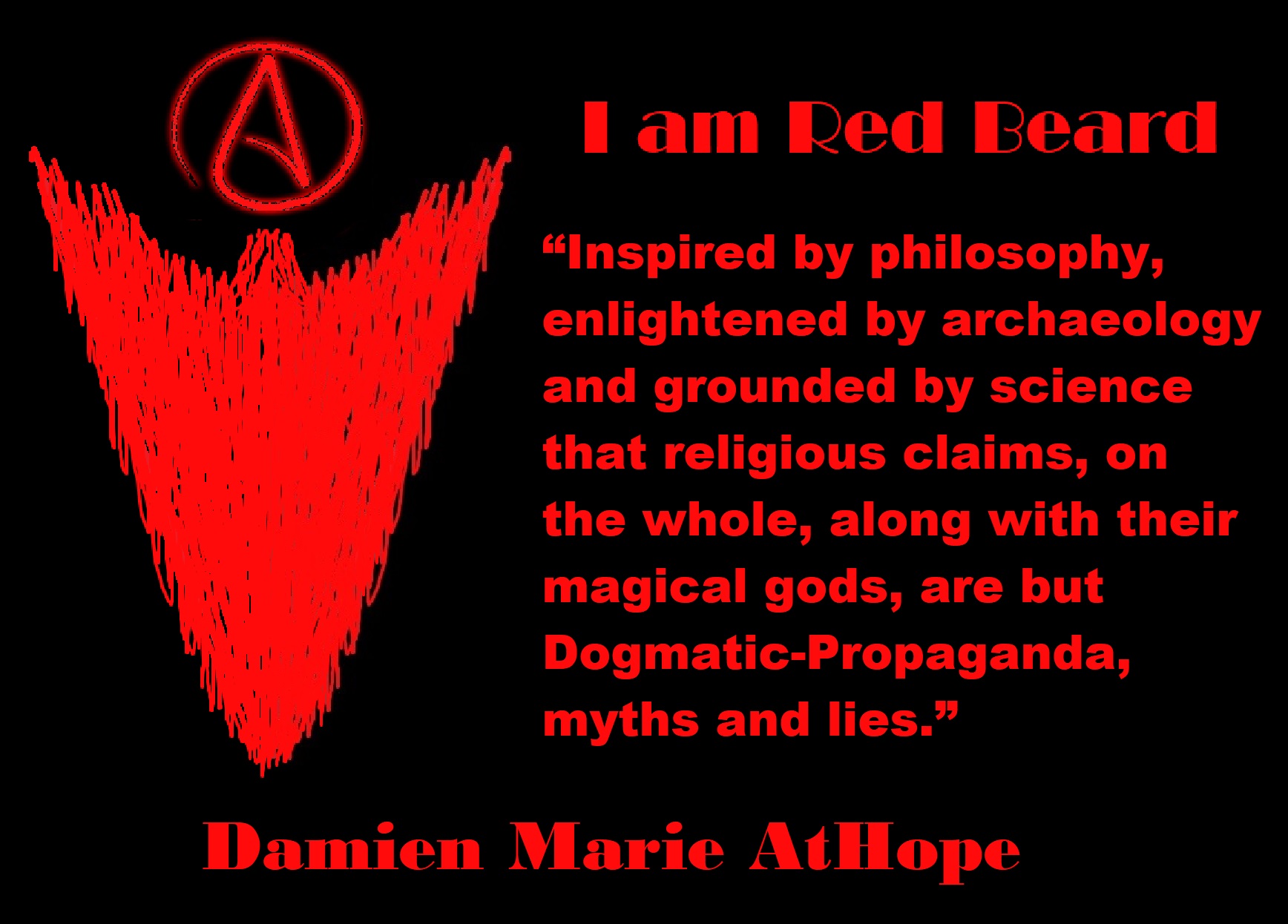
People don’t commonly teach religious history, even that of their own claimed religion. No, rather they teach a limited “pro their religion” history of their religion from a religious perspective favorable to the religion of choice.

Do you truly think “Religious Belief” is only a matter of some personal choice?
Do you not see how coercive one’s world of choice is limited to the obvious hereditary belief, in most religious choices available to the child of religious parents or caregivers? Religion is more commonly like a family, culture, society, etc. available belief that limits the belief choices of the child and that is when “Religious Belief” is not only a matter of some personal choice and when it becomes hereditary faith, not because of the quality of its alleged facts or proposed truths but because everyone else important to the child believes similarly so they do as well simply mimicking authority beliefs handed to them. Because children are raised in religion rather than being presented all possible choices but rather one limited dogmatic brand of “Religious Belief” where children only have a choice of following the belief as instructed, and then personally claim the faith hereditary belief seen in the confirming to the belief they have held themselves all their lives. This is obvious in statements asked and answered by children claiming a faith they barely understand but they do understand that their family believes “this or that” faith, so they feel obligated to believe it too. While I do agree that “Religious Belief” should only be a matter of some personal choice, it rarely is… End Hereditary Religion!
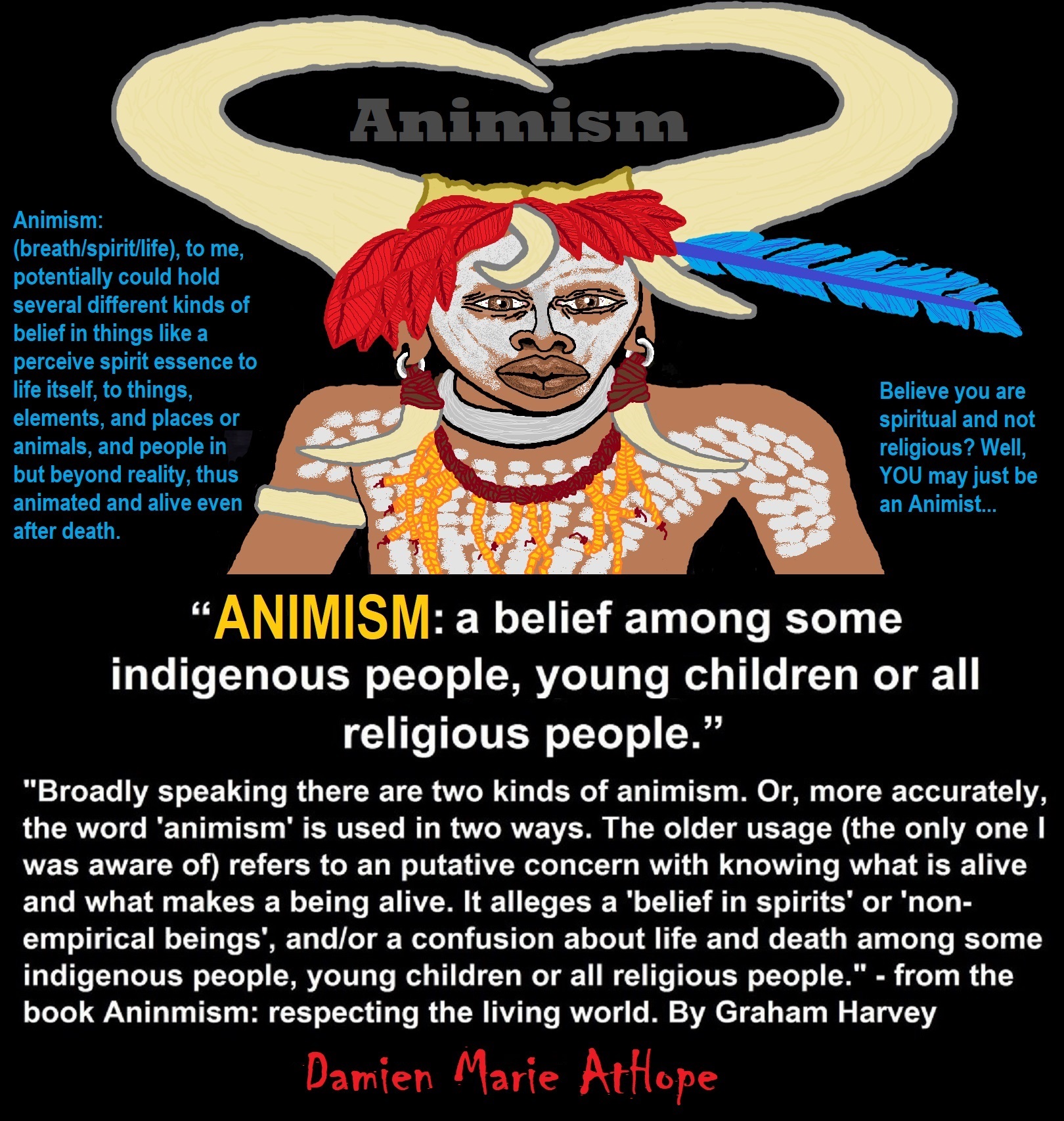
Animism: Respecting the Living World by Graham Harvey
“How have human cultures engaged with and thought about animals, plants, rocks, clouds, and other elements in their natural surroundings? Do animals and other natural objects have a spirit or soul? What is their relationship to humans? In this new study, Graham Harvey explores current and past animistic beliefs and practices of Native Americans, Maori, Aboriginal Australians, and eco-pagans. He considers the varieties of animism found in these cultures as well as their shared desire to live respectfully within larger natural communities. Drawing on his extensive casework, Harvey also considers the linguistic, performative, ecological, and activist implications of these different animisms.” ref
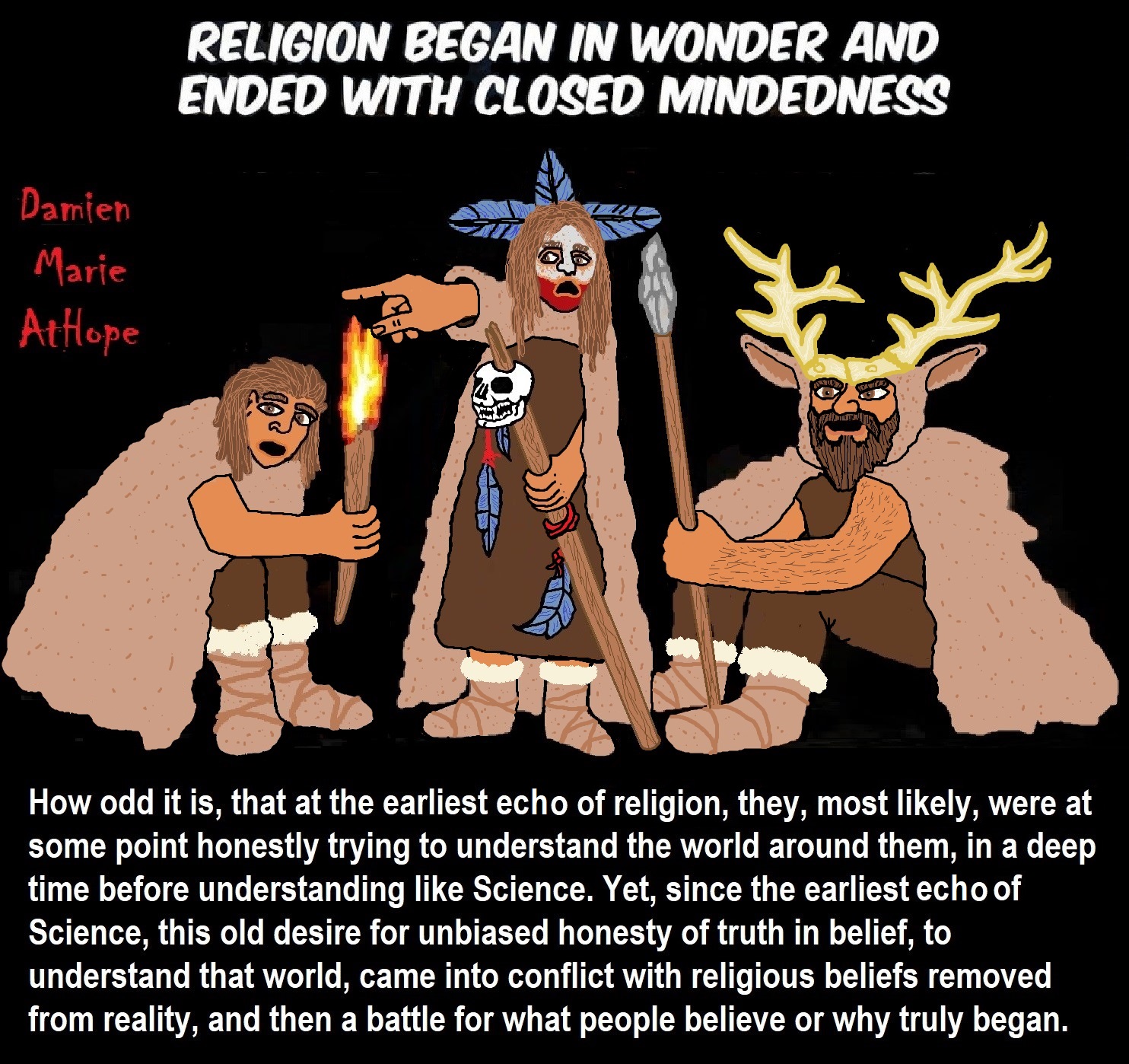
We are like believing machines we vacuum up ideas, like Velcro sticks to almost everything. We accumulate beliefs that we allow to negatively influence our lives, often without realizing it. Our willingness must be to alter skewed beliefs that impend our balance or reason, which allows us to achieve new positive thinking and accurate outcomes.
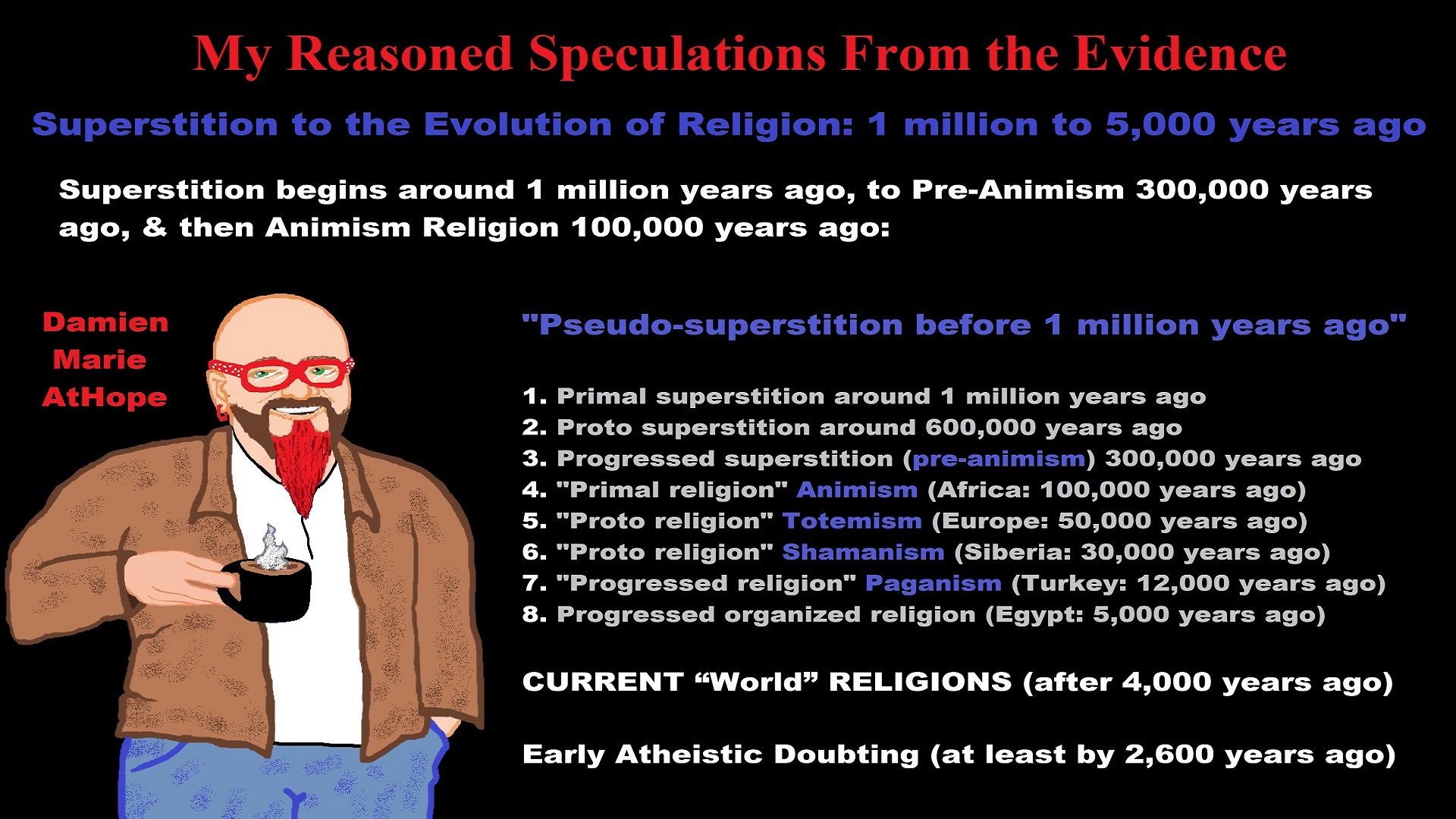
My thoughts on Religion Evolution with external links for more info:
- (Pre-Animism Africa mainly, but also Europe, and Asia at least 300,000 years ago), (Pre-Animism – Oxford Dictionaries)
- (Animism Africa around 100,000 years ago), (Animism – Britannica.com)
- (Totemism Europe around 50,000 years ago), (Totemism – Anthropology)
- (Shamanism Siberia around 30,000 years ago), (Shamanism – Britannica.com)
- (Paganism Turkey around 12,000 years ago), (Paganism – BBC Religion)
- (Progressed Organized Religion “Institutional Religion” Egypt around 5,000 years ago), (Ancient Egyptian Religion – Britannica.com)
- (CURRENT “World” RELIGIONS after 4,000 years ago) (Origin of Major Religions – Sacred Texts)
- (Early Atheistic Doubting at least by 2,600 years ago) (History of Atheism – Wikipedia)
“Religion is an Evolved Product” and Yes, Religion is Like Fear Given Wings…
Atheists talk about gods and religions for the same reason doctors talk about cancer, they are looking for a cure, or a firefighter talks about fires because they burn people and they care to stop them. We atheists too often feel a need to help the victims of mental slavery, held in the bondage that is the false beliefs of gods and the conspiracy theories of reality found in religions.
Understanding Religion Evolution:
- Pre-Animism (at least 300,000 years ago)
- Animism (Africa: 100,000 years ago)
- Totemism (Europe: 50,000 years ago)
- Shamanism (Siberia: 30,000 years ago)
- Paganism (Turkey: 12,000 years ago)
- Progressed organized religion (Egypt: 5,000 years ago), (Egypt, the First Dynasty 5,150 years ago)
- CURRENT “World” RELIGIONS (after 4,000 years ago)
- Early Atheistic Doubting (at least by 2,600 years ago)
“An Archaeological/Anthropological Understanding of Religion Evolution”
It seems ancient peoples had to survived amazing threats in a “dangerous universe (by superstition perceived as good and evil),” and human “immorality or imperfection of the soul” which was thought to affect the still living, leading to ancestor worship. This ancestor worship presumably led to the belief in supernatural beings, and then some of these were turned into the belief in gods. This feeble myth called gods were just a human conceived “made from nothing into something over and over, changing, again and again, taking on more as they evolve, all the while they are thought to be special,” but it is just supernatural animistic spirit-belief perceived as sacred.
Quick Evolution of Religion?
Pre-Animism (at least 300,000 years ago) pre-religion is a beginning that evolves into later Animism. So, Religion as we think of it, to me, all starts in a general way with Animism (Africa: 100,000 years ago) (theoretical belief in supernatural powers/spirits), then this is physically expressed in or with Totemism (Europe: 50,000 years ago) (theoretical belief in mythical relationship with powers/spirits through a totem item), which then enlists a full-time specific person to do this worship and believed interacting Shamanism (Siberia/Russia: 30,000 years ago) (theoretical belief in access and influence with spirits through ritual), and then there is the further employment of myths and gods added to all the above giving you Paganism (Turkey: 12,000 years ago) (often a lot more nature-based than most current top world religions, thus hinting to their close link to more ancient religious thinking it stems from). My hypothesis is expressed with an explanation of the building of a theatrical house (modern religions development). Progressed organized religion (Egypt: 5,000 years ago) with CURRENT “World” RELIGIONS (after 4,000 years ago).
Historically, in large city-state societies (such as Egypt or Iraq) starting around 5,000 years ago culminated to make religion something kind of new, a sociocultural-governmental-religious monarchy, where all or at least many of the people of such large city-state societies seem familiar with and committed to the existence of “religion” as the integrated life identity package of control dynamics with a fixed closed magical doctrine, but this juggernaut integrated religion identity package of Dogmatic-Propaganda certainly did not exist or if developed to an extent it was highly limited in most smaller prehistoric societies as they seem to lack most of the strong control dynamics with a fixed closed magical doctrine (magical beliefs could be at times be added or removed). Many people just want to see developed religious dynamics everywhere even if it is not. Instead, all that is found is largely fragments until the domestication of religion.
Religions, as we think of them today, are a new fad, even if they go back to around 6,000 years in the timeline of human existence, this amounts to almost nothing when seen in the long slow evolution of religion at least around 70,000 years ago with one of the oldest ritual worship. Stone Snake of South Africa: “first human worship” 70,000 years ago. This message of how religion and gods among them are clearly a man-made thing that was developed slowly as it was invented and then implemented peace by peace discrediting them all. Which seems to be a simple point some are just not grasping how devastating to any claims of truth when we can see the lie clearly in the archeological sites.
I wish people fought as hard for the actual values as they fight for the group/clan names political or otherwise they think support values. Every amount spent on war is theft to children in need of food or the homeless kept from shelter.
Here are several of my blog posts on history:
- To Find Truth You Must First Look
- (Magdalenian/Iberomaurusian) Connections to the First Paganists of the early Neolithic Near East Dating from around 17,000 to 12,000 Years Ago
- Natufians: an Ancient People at the Origins of Agriculture and Sedentary Life
- Possible Clan Leader/Special “MALE” Ancestor Totem Poles At Least 13,500 years ago?
- Jewish People with DNA at least 13,200 years old, Judaism, and the Origins of Some of its Ideas
- Baltic Reindeer Hunters: Swiderian, Lyngby, Ahrensburgian, and Krasnosillya cultures 12,020 to 11,020 years ago are evidence of powerful migratory waves during the last 13,000 years and a genetic link to Saami and the Finno-Ugric peoples.
- The Rise of Inequality: patriarchy and state hierarchy inequality
- Fertile Crescent 12,500 – 9,500 Years Ago: fertility and death cult belief system?
- 12,400 – 11,700 Years Ago – Kortik Tepe (Turkey) Pre/early-Agriculture Cultic Ritualism
- Ritualistic Bird Symbolism at Gobekli Tepe and its “Ancestor Cult”
- Male-Homosexual (female-like) / Trans-woman (female) Seated Figurine from Gobekli Tepe
- Could a 12,000-year-old Bull Geoglyph at Göbekli Tepe relate to older Bull and Female Art 25,000 years ago and Later Goddess and the Bull cults like Catal Huyuk?
- Sedentism and the Creation of goddesses around 12,000 years ago as well as male gods after 7,000 years ago.
- Alcohol, where Agriculture and Religion Become one? Such as Gobekli Tepe’s Ritualistic use of Grain as Food and Ritual Drink
- Neolithic Ritual Sites with T-Pillars and other Cultic Pillars
- Paganism: Goddesses around 12,000 years ago then Male Gods after 7,000 years ago
- First Patriarchy: Split of Women’s Status around 12,000 years ago & First Hierarchy: fall of Women’s Status around 5,000 years ago.
- Natufians: an Ancient People at the Origins of Agriculture and Sedentary Life
- J DNA and the Spread of Agricultural Religion (paganism)
- Paganism: an approximately 12,000-year-old belief system
- Paganism 12,000 years old: related to “Anarchism and Socialism” (Pre-Capitalism)
- Shaman burial in Israel 12,000 years ago and the Shamanism Phenomena
- Need to Mythicized: gods and goddesses
- 12,000 – 7,000 Years Ago – Paleo-Indian Culture (The Americas)
- 12,000 – 2,000 Years Ago – Indigenous-Scandinavians (Nordic)
- Norse did not wear helmets with horns?
- Pre-Pottery Neolithic Skull Cult around 11,500 to 8,400 Years Ago?
- 10,400 – 10,100 Years Ago, in Turkey the Nevail Cori Religious Settlement
- 9,000-6,500 Years Old Submerged Pre-Pottery/Pottery Neolithic Ritual Settlements off Israel’s Coast
- Catal Huyuk “first religious designed city” around 9,500 to 7,700 years ago (Turkey)
- Cultic Hunting at Catal Huyuk “first religious designed city”
- Special Items and Art as well as Special Elite Burials at Catal Huyuk
- New Rituals and Violence with the appearance of Pottery and People?
- Haplogroup N and its related Uralic Languages and Cultures
- Ainu people, Sámi people, Native Americans, the Ancient North Eurasians, and Paganistic-Shamanism with Totemism
- Ideas, Technology and People from Turkey, Europe, to China and Back again 9,000 to 5,000 years ago?
- First Pottery of Europe and the Related Cultures
- 9,000 years old Neolithic Artifacts Judean Desert and Hills Israel
- 9,000-7,000 years-old Sex and Death Rituals: Cult Sites in Israel, Jordan, and the Sinai
- 9,000-8500 year old Horned Female shaman Bad Dürrenberg Germany
- Neolithic Jewelry and the Spread of Farming in Europe Emerging out of West Turkey
- 8,600-year-old Tortoise Shells in Neolithic graves in central China have Early Writing and Shamanism
- Swing of the Mace: the rise of Elite, Forced Authority, and Inequality begin to Emerge 8,500 years ago?
- Migrations and Changing Europeans Beginning around 8,000 Years Ago
- My “Steppe-Anatolian-Kurgan hypothesis” 8,000/7,000 years ago
- Around 8,000-year-old Shared Idea of the Mistress of Animals, “Ritual” Motif
- Pre-Columbian Red-Paint (red ochre) Maritime Archaic Culture 8,000-3,000 years ago
- 7,522-6,522 years ago Linear Pottery culture which I think relates to Arcane Capitalism’s origins
- Arcane Capitalism: Primitive socialism, Primitive capital, Private ownership, Means of production, Market capitalism, Class discrimination, and Petite bourgeoisie (smaller capitalists)
- 7,500-4,750 years old Ritualistic Cucuteni-Trypillian culture of Moldova, Romania, and Ukraine
- Roots of a changing early society 7,200-6,700 years ago Jordan and Israel
- Agriculture religion (Paganism) with farming reached Britain between about 7,000 to 6,500 or so years ago and seemingly expressed in things like Western Europe’s Long Barrows
- My Thoughts on Possible Migrations of “R” DNA and Proto-Indo-European?
- “Millet” Spreading from China 7,022 years ago to Europe and related Language may have Spread with it leading to Proto-Indo-European
- Proto-Indo-European (PIE), ancestor of Indo-European languages: DNA, Society, Language, and Mythology
- The Dnieper–Donets culture and Asian varieties of Millet from China to the Black Sea region of Europe by 7,022 years ago
- Kurgan 6,000 years ago/dolmens 7,000 years ago: funeral, ritual, and other?
- 7,020 to 6,020-year-old Proto-Indo-European Homeland of Urheimat or proposed home of their Language and Religion
- Ancient Megaliths: Kurgan, Ziggurat, Pyramid, Menhir, Trilithon, Dolman, Kromlech, and Kromlech of Trilithons
- The Mytheme of Ancient North Eurasian Sacred-Dog belief and similar motifs are found in Indo-European, Native American, and Siberian comparative mythology
- Elite Power Accumulation: Ancient Trade, Tokens, Writing, Wealth, Merchants, and Priest-Kings
- Sacred Mounds, Mountains, Kurgans, and Pyramids may hold deep connections?
- Between 7,000-5,000 Years ago, rise of unequal hierarchy elite, leading to a “birth of the State” or worship of power, strong new sexism, oppression of non-elites, and the fall of Women’s equal status
- Paganism 7,000-5,000 years old: related to “Anarchism and Socialism” (Capitalism) (World War 0) Elite & their slaves
- Hell and Underworld mythologies starting maybe as far back as 7,000 to 5,000 years ago with the Proto-Indo-Europeans?
- The First Expression of the Male God around 7,000 years ago?
- White (light complexion skin) Bigotry and Sexism started 7,000 years ago?
- Around 7,000-year-old Shared Idea of the Divine Bird (Tutelary and/or Trickster spirit/deity), “Ritual” Motif
- Nekhbet an Ancient Egyptian Vulture Goddess and Tutelary Deity
- 6,720 to 4,920 years old Ritualistic Hongshan Culture of Inner Mongolia with 5,000-year-old Pyramid Mounds and Temples
- First proto-king in the Balkans, Varna culture around 6,500 years ago?
- 6,500–5,800 years ago in Israel Late Chalcolithic (Copper Age) Period in the Southern Levant Seems to Express Northern Levant Migrations, Cultural and Religious Transfer
- KING OF BEASTS: Master of Animals “Ritual” Motif, around 6,000 years old or older…
- Around 6000-year-old Shared Idea of the Solid Wheel & the Spoked Wheel-Shaped Ritual Motif
- “The Ghassulian Star,” a mysterious 6,000-year-old mural from Jordan; a Proto-Star of Ishtar, Star of Inanna or Star of Venus?
- Religious/Ritual Ideas, including goddesses and gods as well as ritual mounds or pyramids from Northeastern Asia at least 6,000 years old, seemingly filtering to Iran, Iraq, the Mediterranean, Europe, Egypt, and the Americas?
- Maykop (5,720–5,020 years ago) Caucasus region Bronze Age culture-related to Copper Age farmers from the south, influenced by the Ubaid period and Leyla-Tepe culture, as well as influencing the Kura-Araxes culture
- 5-600-year-old Tomb, Mummy, and First Bearded Male Figurine in a Grave
- Kura-Araxes Cultural 5,520 to 4,470 years old DNA traces to the Canaanites, Arabs, and Jews
- Minoan/Cretan (Keftiu) Civilization and Religion around 5,520 to 3,120 years ago
- Evolution Of Science at least by 5,500 years ago
- 5,500 Years old birth of the State, the rise of Hierarchy, and the fall of Women’s status
- “Jiroft culture” 5,100 – 4,200 years ago and the History of Iran
- Stonehenge: Paganistic Burial and Astrological Ritual Complex, England (5,100-3,600 years ago)
- Around 5,000-year-old Shared Idea of the “Tree of Life” Ritual Motif
- Complex rituals for elite, seen from China to Egypt, at least by 5,000 years ago
- Around 5,000 years ago: “Birth of the State” where Religion gets Military Power and Influence
- The Center of the World “Axis Mundi” and/or “Sacred Mountains” Mythology Could Relate to the Altai Mountains, Heart of the Steppe
- Progressed organized religion starts, an approximately 5,000-year-old belief system
- China’s Civilization between 5,000-3,000 years ago, was a time of war and class struggle, violent transition from free clans to a Slave or Elite society
- Origin of Logics is Naturalistic Observation at least by around 5,000 years ago.
- Paganism 5,000 years old: progressed organized religion and the state: related to “Anarchism and Socialism” (Kings and the Rise of the State)
- Ziggurats (multi-platform temples: 4,900 years old) to Pyramids (multi-platform tombs: 4,700 years old)
- Did a 4,520–4,420-year-old Volcano In Turkey Inspire the Bible God?
- Finland’s Horned Shaman and Pre-Horned-God at least 4,500 years ago?
- 4,000-year-Old Dolmens in Israel: A Connected Dolmen Religious Phenomenon?
- Creation myths: From chaos, Ex nihilo, Earth-diver, Emergence, World egg, and World parent
- Bronze Age “Ritual” connections of the Bell Beaker culture with the Corded Ware/Single Grave culture, which were related to the Yamnaya culture and Proto-Indo-European Languages/Religions
- Low Gods (Earth/ Tutelary deity), High Gods (Sky/Supreme deity), and Moralistic Gods (Deity enforcement/divine order)
- The exchange of people, ideas, and material-culture including, to me, the new god (Sky Father) and goddess (Earth Mother) religion between the Cucuteni-Trypillians and others which is then spread far and wide
- Koryaks: Indigenous People of the Russian Far East and Big Raven myths also found in Tlingit, Haida, Tsimshian, and other Indigenous People of North America
- 42 Principles Of Maat (Egyptian Goddess of the justice) around 4,400 years ago, 2000 Years Before Ten Commandments
- “Happy Easter” Well Happy Eostre/Ishter
- 4,320-3,820 years old “Shimao” (North China) site with Totemistic-Shamanistic Paganism and a Stepped Pyramid
- 4,250 to 3,400 Year old Stonehenge from Russia: Arkaim?
- 4,100-year-old beaker with medicinal & flowering plants in a grave of a woman in Scotland
- Early European Farmer ancestry, Kelif el Boroud people with the Cardial Ware culture, and the Bell Beaker culture Paganists too, spread into North Africa, then to the Canary Islands off West Africa
- Flood Accounts: Gilgamesh epic (4,100 years ago) Noah in Genesis (2,600 years ago)
- Paganism 4,000 years old: related to “Anarchism and Socialism” (First Moralistic gods, then the Origin time of Monotheism)
- When was the beginning: TIMELINE OF CURRENT RELIGIONS, which start around 4,000 years ago.
- Early Religions Thought to Express Proto-Monotheistic Systems around 4,000 years ago
- Kultepe? An archaeological site with a 4,000 years old women’s rights document.
- Single God Religions (Monotheism) = “Man-o-theism” started around 4,000 years ago with the Great Sky Spirit/God Tiān (天)?
- Confucianism’s Tiān (Shangdi god 4,000 years old): Supernaturalism, Pantheism or Theism?
- Yes, Your Male God is Ridiculous
- Mythology, a Lunar Deity is a Goddess or God of the Moon
- Sacred Land, Hills, and Mountains: Sami Mythology (Paganistic Shamanism)
- Horse Worship/Sacrifice: mythical union of Ruling Elite/Kingship and the Horse
- The Amorite/Amurru people’s God Amurru “Lord of the Steppe”, relates to the Origins of the Bible God?
- Bronze Age Exotic Trade Routes Spread Quite Far as well as Spread Religious Ideas with Them
- Sami and the Northern Indigenous Peoples Landscape, Language, and its Connection to Religion
- Prototype of Ancient Analemmatic Sundials around 3,900-3,150 years ago and a Possible Solar Connection to gods?
- Judaism is around 3,450 or 3,250 years old. (“Paleo-Hebrew” 3,000 years ago and Torah 2,500 years ago)
- The Weakening of Ancient Trade and the Strengthening of Religions around 3000 years ago?
- Are you aware that there are religions that worship women gods, explain now religion tears women down?
- Animistic, Totemistic, and Paganistic Superstition Origins of bible god and the bible’s Religion.
- Myths and Folklore: “Trickster gods and goddesses”
- Jews, Judaism, and the Origins of Some of its Ideas
- An Old Branch of Religion Still Giving Fruit: Sacred Trees
- Dating the BIBLE: naming names and telling times (written less than 3,000 years ago, provable to 2,200 years ago)
- Did a Volcano Inspire the bible god?
- Dené–Yeniseian language, Old Copper Complex, and Pre-Columbian Mound Builders?
- No “dinosaurs and humans didn’t exist together just because some think they are in the bible itself”
- Sacred Shit and Sacred Animals?
- Everyone Killed in the Bible Flood? “Nephilim” (giants)?
- Hey, Damien dude, I have a question for you regarding “the bible” Exodus.
- Archaeology Disproves the Bible
- Bible Battle, Just More, Bible Babble
- The Jericho Conquest lie?
- Canaanites and Israelites?
- Accurate Account on how did Christianity Began?
- Let’s talk about Christianity.
- So the 10 commandments isn’t anything to go by either right?
- Misinformed christian
- Debunking Jesus?
- Paulism vs Jesus
- Ok, you seem confused so let’s talk about Buddhism.
- Unacknowledged Buddhism: Gods, Savior, Demons, Rebirth, Heavens, Hells, and Terrorism
- His Foolishness The Dalai Lama
- Yin and Yang is sexist with an ORIGIN around 2,300 years ago?
- I Believe Archaeology, not Myths & Why Not, as the Religious Myths Already Violate Reason!
- Archaeological, Scientific, & Philosophic evidence shows the god myth is man-made nonsense.
- Aquatic Ape Theory/Hypothesis? As Always, Just Pseudoscience.
- Ancient Aliens Conspiracy Theorists are Pseudohistorians
- The Pseudohistoric and Pseudoscientific claims about “Bakoni Ruins” of South Africa
- Why do people think Religion is much more than supernaturalism and superstitionism?
- Religion is an Evolved Product
- Was the Value of Ancient Women Different?
- 1000 to 1100 CE, human sacrifice Cahokia Mounds a pre-Columbian Native American site
- Feminist atheists as far back as the 1800s?
- Promoting Religion as Real is Mentally Harmful to a Flourishing Humanity
- Screw All Religions and Their Toxic lies, they are all fraud
- Forget Religions’ Unfounded Myths, I Have Substantiated “Archaeology Facts.”
- Religion Dispersal throughout the World
- I Hate Religion Just as I Hate all Pseudoscience
- Exposing Scientology, Eckankar, Wicca and Other Nonsense?
- Main deity or religious belief systems
- Quit Trying to Invent Your God From the Scraps of Science.
- Archaeological, Scientific, & Philosophic evidence shows the god myth is man-made nonsense.
- Ancient Alien Conspiracy Theorists: Misunderstanding, Rhetoric, Misinformation, Fabrications, and Lies
- Misinformation, Distortion, and Pseudoscience in Talking with a Christian Creationist
- Judging the Lack of Goodness in Gods, Even the Norse God Odin
- Challenging the Belief in God-like Aliens and Gods in General
- A Challenge to Christian use of Torture Devices?
- Yes, Hinduism is a Religion
- Trump is One of the Most Reactionary Forces of Far-right Christian Extremism
- Was the Bull Head a Symbol of God? Yes!
- Primate Death Rituals
- Christian – “God and Christianity are objectively true”
- Australopithecus afarensis Death Ritual?
- You Claim Global Warming is a Hoax?
- Doubter of Science and Defamer of Atheists?
- I think that sounds like the Bible?
- History of the Antifa (“anti-fascist”) Movements
- Indianapolis Anti-Blasphemy Laws #Free Soheil Rally
- Damien, you repeat the golden rule in so many forms then you say religion is dogmatic?
- Science is a Trustable Methodology whereas Faith is not Trustable at all!
- Was I ever a believer, before I was an atheist?
- Atheists rise in reason
- Mistrust of science?
- Open to Talking About the Definition of ‘God’? But first, we address Faith.
- ‘United Monarchy’ full of splendor and power – Saul, David, and Solomon? Most likely not.
- Is there EXODUS ARCHAEOLOGY? The short answer is “no.”
- Lacking Proof of Bigfoots, Unicorns, and Gods is Just a Lack of Research?
- Religion and Politics: Faith Beliefs vs. Rational Thinking
- Hammer of Truth that lying pig RELIGION: challenged by an archaeologist
- “The Hammer of Truth” -ontology question- What do You Mean by That?
- Navigation of a bad argument: Ad Hominem vs. Attack
- Why is it Often Claimed that Gods have a Gender?
- Why are basically all monotheistic religions ones that have a male god?
- Shifting through the Claims in support of Faith
- Dear Mr. AtHope, The 20th Century is an Indictment of Secularism and a Failed Atheist Century
- An Understanding of the Worldwide Statistics and Dynamics of Terrorist Incidents and Suicide Attacks
- Intoxication and Evolution? Addressing and Assessing the “Stoned Ape” or “Drunken Monkey” Theories as Catalysts in Human Evolution
- Sacred Menstrual cloth? Inanna’s knot, Isis knot, and maybe Ma’at’s feather?
- Damien, why don’t the Hebrews accept the bible stories?
- Dealing with a Troll and Arguing Over Word Meaning
- Knowledge without Belief? Justified beliefs or disbeliefs worthy of Knowledge?
- Afrocentrism and African Religions
- Crecganford @crecganford offers history & stories of the people, places, gods, & culture
- Empiricism-Denier?
I am not an academic. I am a revolutionary that teaches in public, in places like social media, and in the streets. I am not a leader by some title given but from my commanding leadership style of simply to start teaching everywhere to everyone, all manner of positive education.
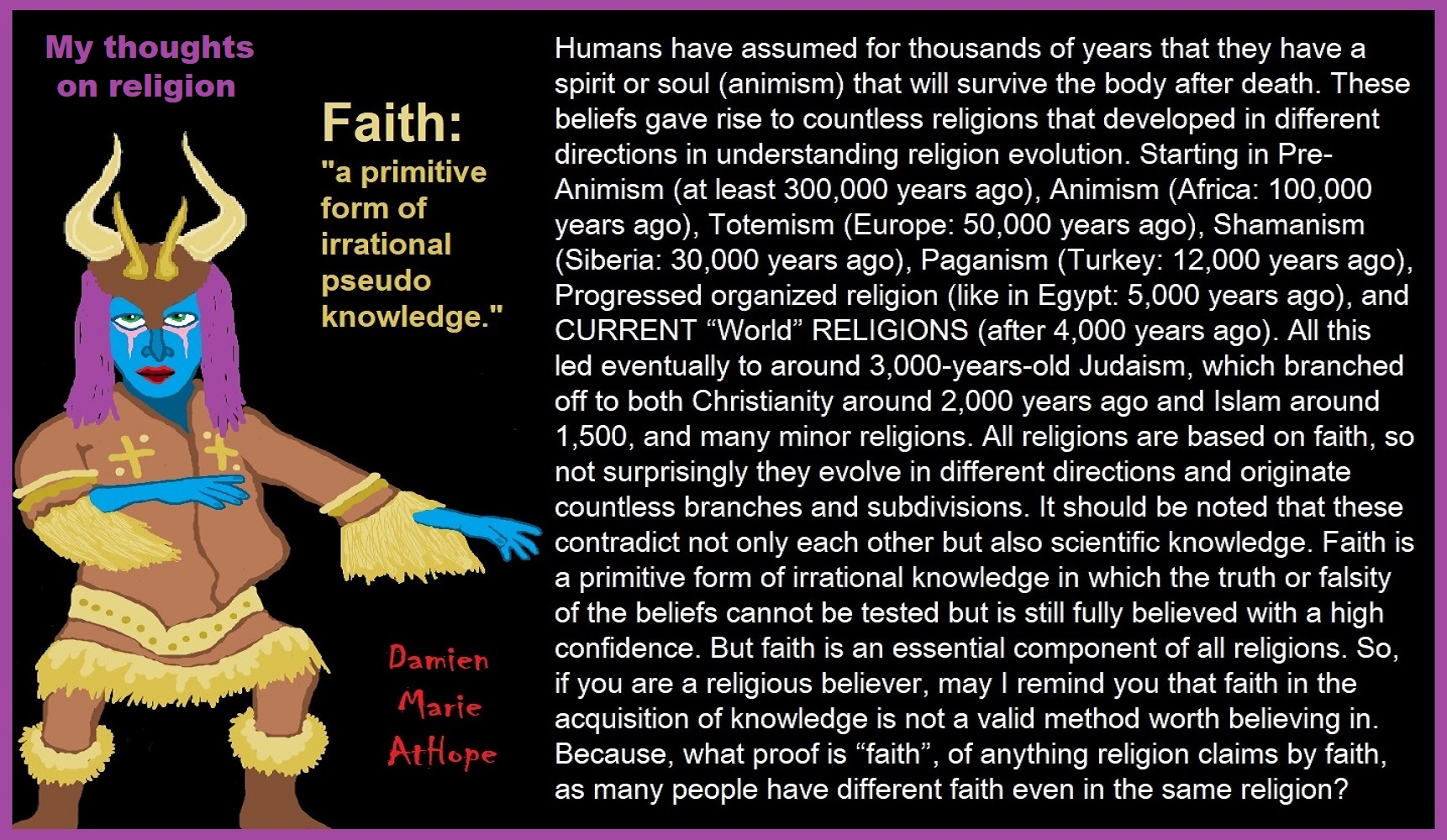
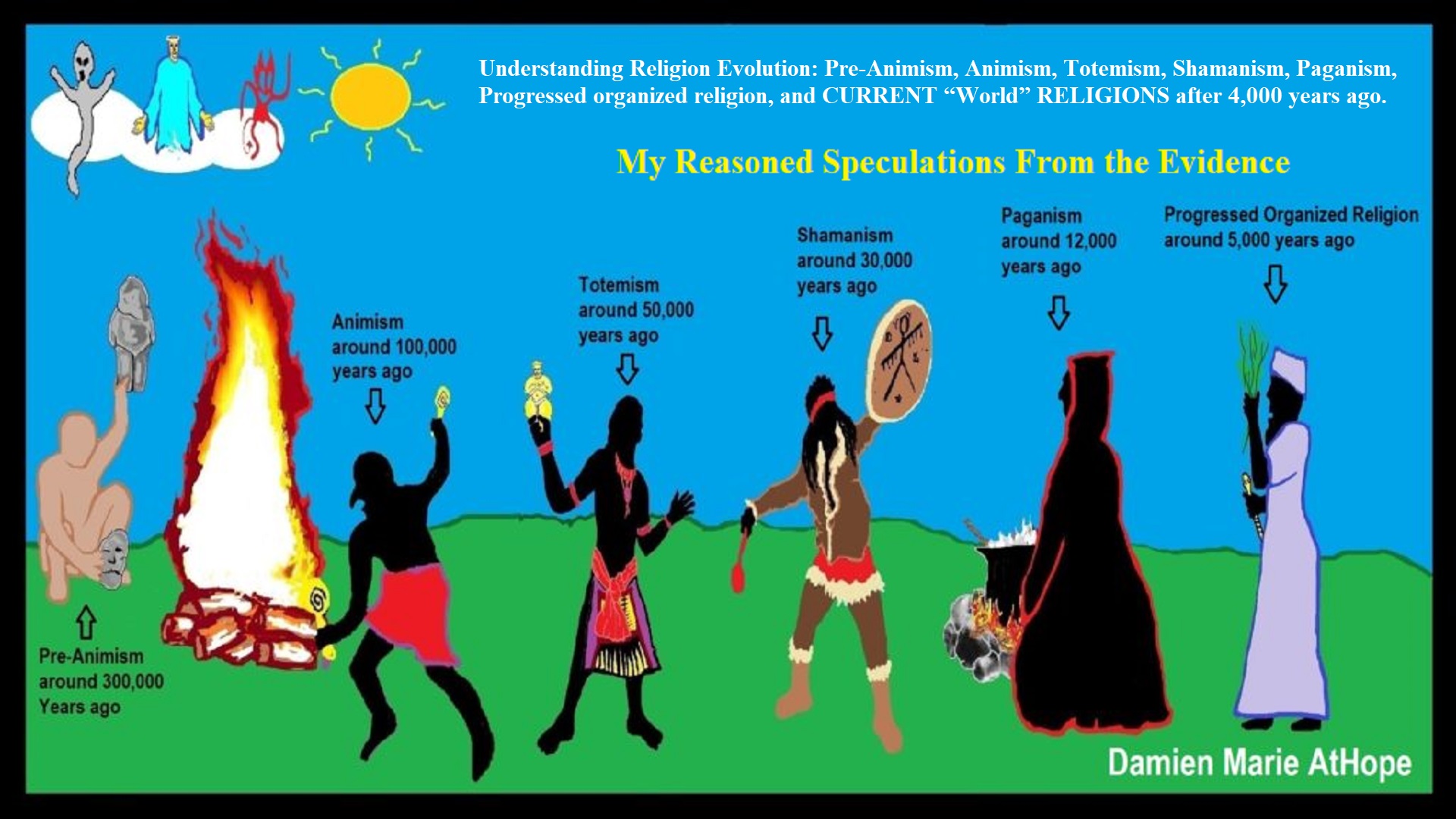
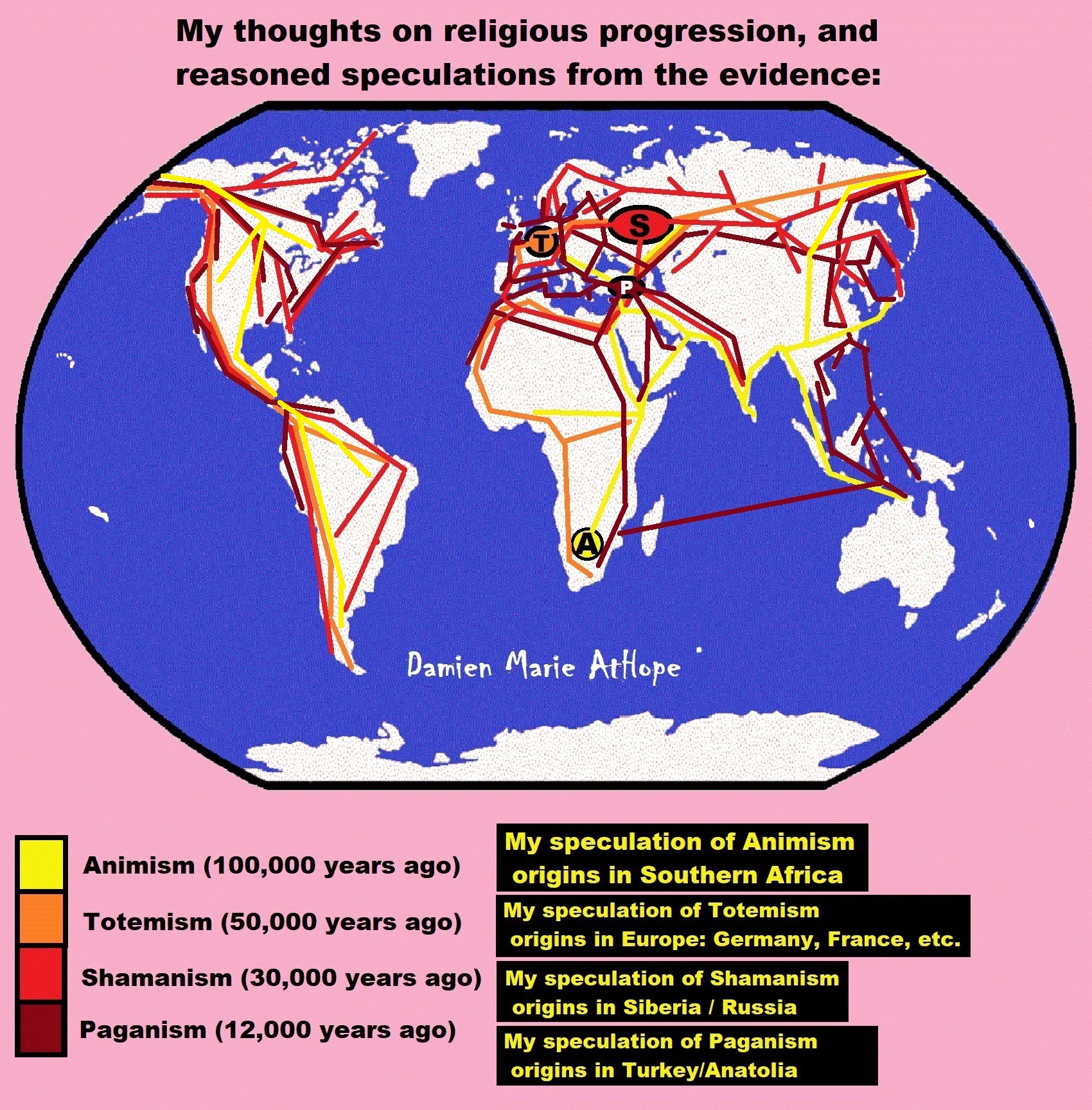
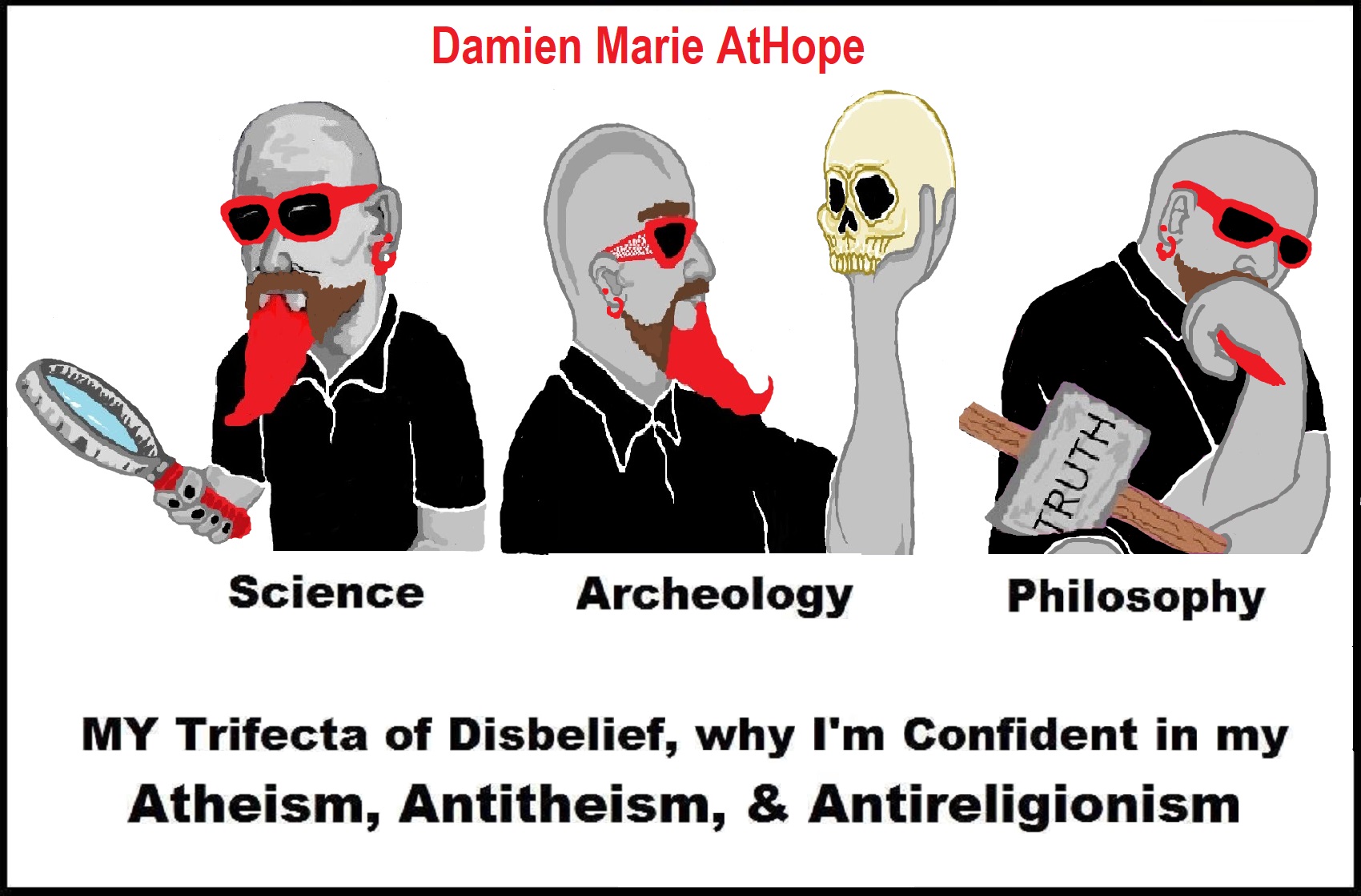
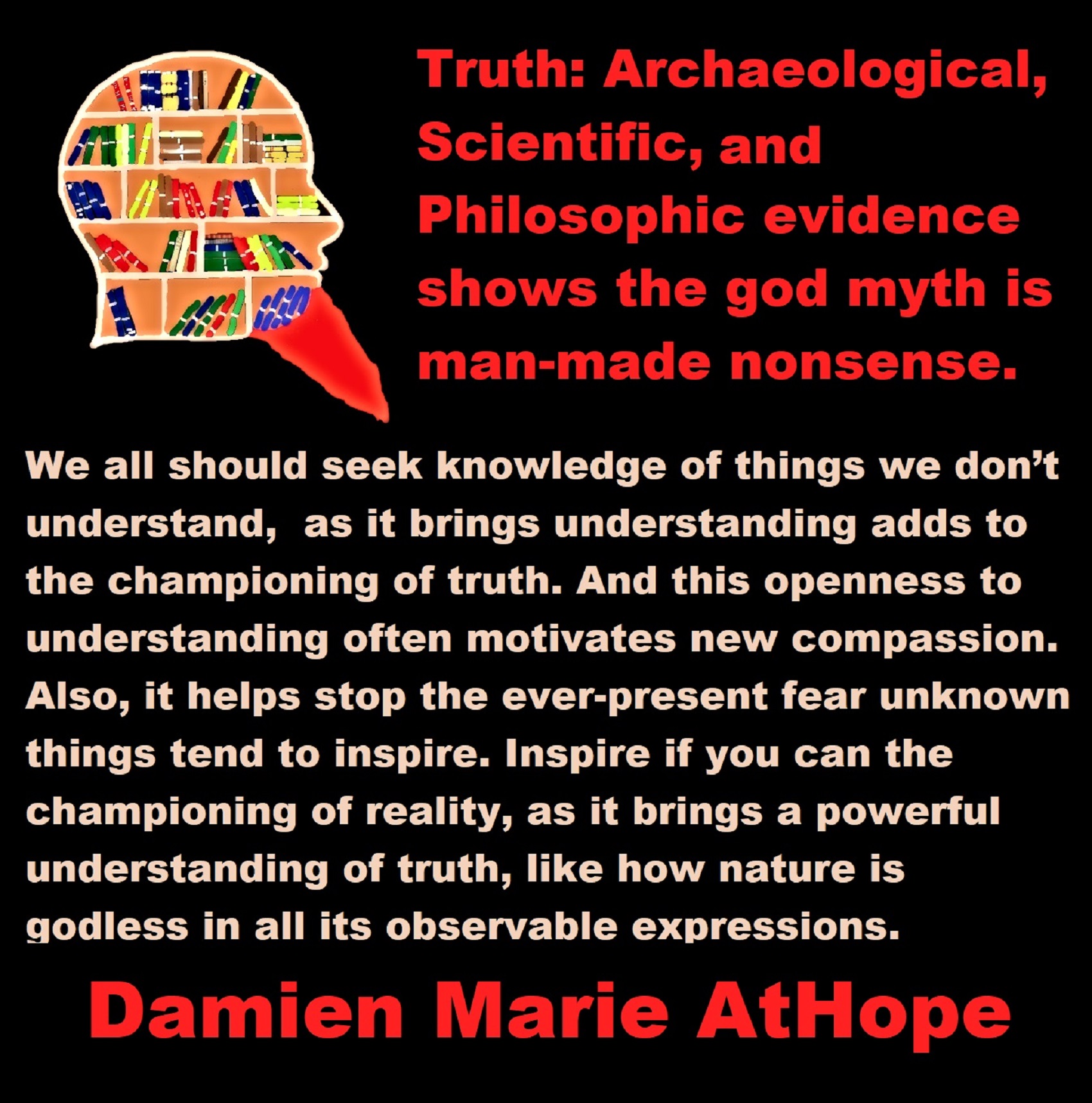
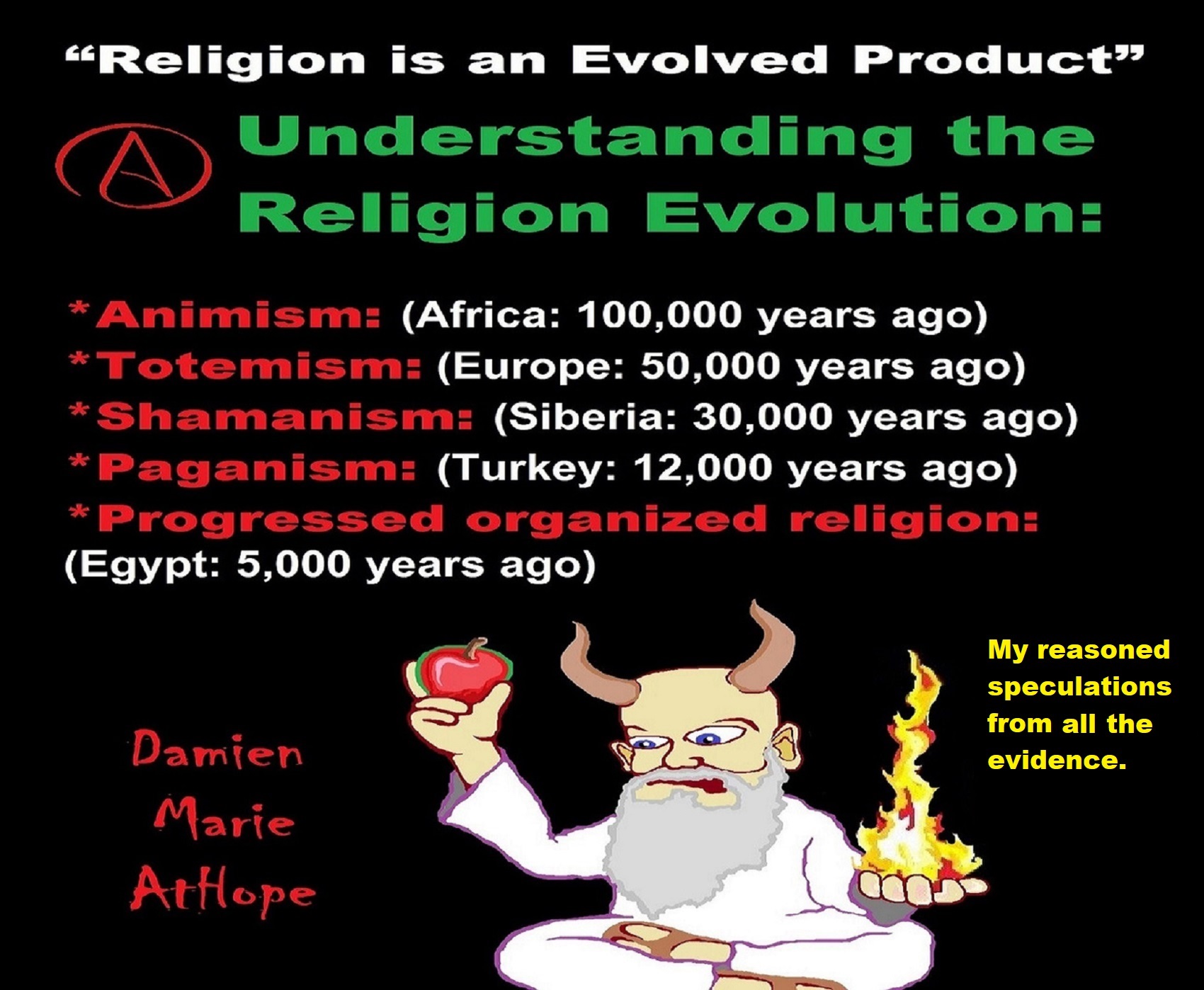
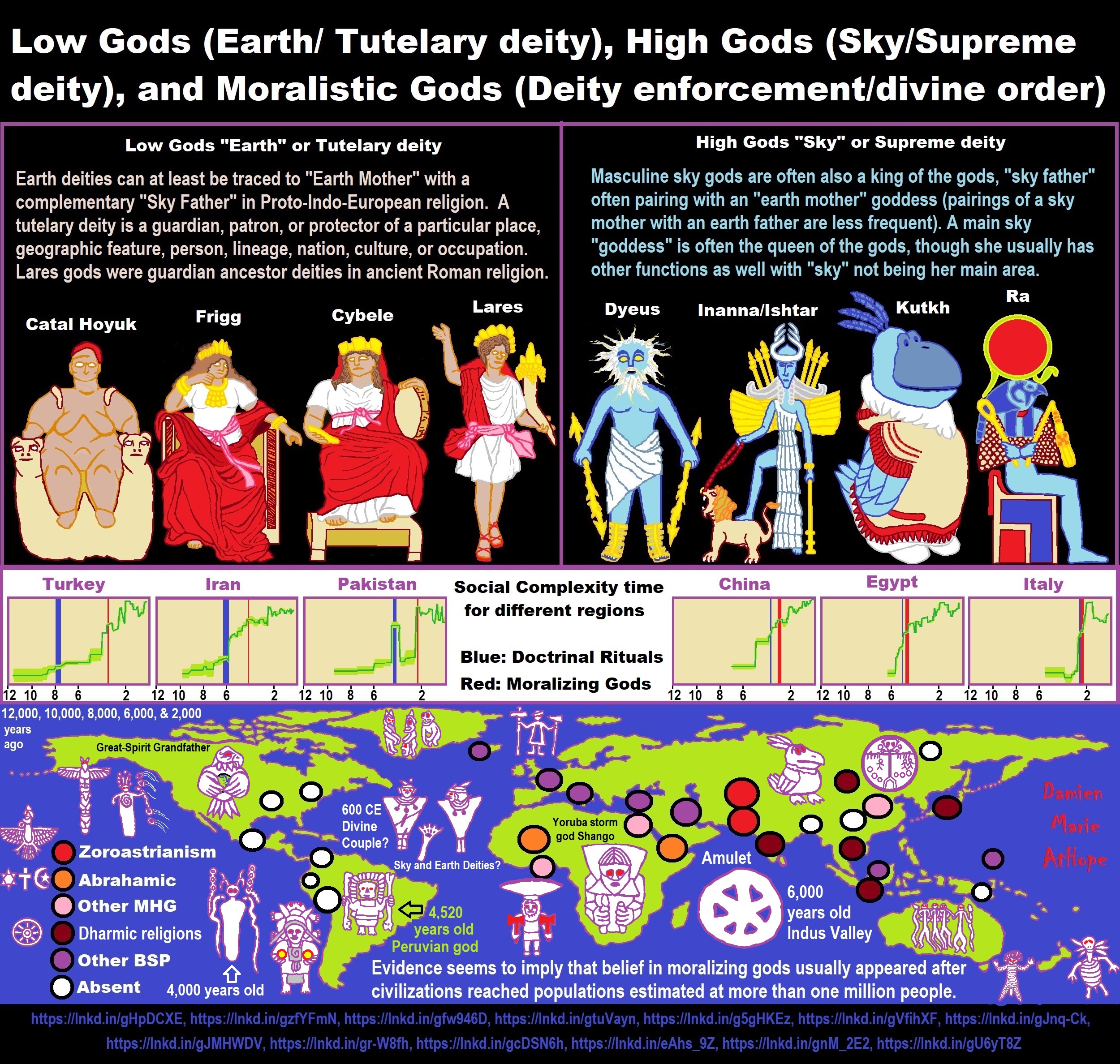
ref, ref, ref, ref, ref, ref, ref, ref, ref, ref, ref, ref, ref, ref, ref, ref, ref, ref, ref, ref, ref
Low Gods “Earth” or Tutelary deity and High Gods “Sky” or Supreme deity
“An Earth goddess is a deification of the Earth. Earth goddesses are often associated with the “chthonic” deities of the underworld. Ki and Ninhursag are Mesopotamian earth goddesses. In Greek mythology, the Earth is personified as Gaia, corresponding to Roman Terra, Indic Prithvi/Bhūmi, etc. traced to an “Earth Mother” complementary to the “Sky Father” in Proto-Indo-European religion. Egyptian mythology exceptionally has a sky goddess and an Earth god.” ref
“A mother goddess is a goddess who represents or is a personification of nature, motherhood, fertility, creation, destruction or who embodies the bounty of the Earth. When equated with the Earth or the natural world, such goddesses are sometimes referred to as Mother Earth or as the Earth Mother. In some religious traditions or movements, Heavenly Mother (also referred to as Mother in Heaven or Sky Mother) is the wife or feminine counterpart of the Sky father or God the Father.” ref
“Any masculine sky god is often also king of the gods, taking the position of patriarch within a pantheon. Such king gods are collectively categorized as “sky father” deities, with a polarity between sky and earth often being expressed by pairing a “sky father” god with an “earth mother” goddess (pairings of a sky mother with an earth father are less frequent). A main sky goddess is often the queen of the gods and may be an air/sky goddess in her own right, though she usually has other functions as well with “sky” not being her main. In antiquity, several sky goddesses in ancient Egypt, Mesopotamia, and the Near East were called Queen of Heaven. Neopagans often apply it with impunity to sky goddesses from other regions who were never associated with the term historically. The sky often has important religious significance. Many religions, both polytheistic and monotheistic, have deities associated with the sky.” ref
“In comparative mythology, sky father is a term for a recurring concept in polytheistic religions of a sky god who is addressed as a “father”, often the father of a pantheon and is often either a reigning or former King of the Gods. The concept of “sky father” may also be taken to include Sun gods with similar characteristics, such as Ra. The concept is complementary to an “earth mother“. “Sky Father” is a direct translation of the Vedic Dyaus Pita, etymologically descended from the same Proto-Indo-European deity name as the Greek Zeûs Pater and Roman Jupiter and Germanic Týr, Tir or Tiwaz, all of which are reflexes of the same Proto-Indo-European deity’s name, *Dyēus Ph₂tḗr. While there are numerous parallels adduced from outside of Indo-European mythology, there are exceptions (e.g. In Egyptian mythology, Nut is the sky mother and Geb is the earth father).” ref
Tutelary deity
“A tutelary (also tutelar) is a deity or spirit who is a guardian, patron, or protector of a particular place, geographic feature, person, lineage, nation, culture, or occupation. The etymology of “tutelary” expresses the concept of safety and thus of guardianship. In late Greek and Roman religion, one type of tutelary deity, the genius, functions as the personal deity or daimon of an individual from birth to death. Another form of personal tutelary spirit is the familiar spirit of European folklore.” ref
“A tutelary (also tutelar) in Korean shamanism, jangseung and sotdae were placed at the edge of villages to frighten off demons. They were also worshiped as deities. Seonangshin is the patron deity of the village in Korean tradition and was believed to embody the Seonangdang. In Philippine animism, Diwata or Lambana are deities or spirits that inhabit sacred places like mountains and mounds and serve as guardians. Such as: Maria Makiling is the deity who guards Mt. Makiling and Maria Cacao and Maria Sinukuan. In Shinto, the spirits, or kami, which give life to human bodies come from nature and return to it after death. Ancestors are therefore themselves tutelaries to be worshiped. And similarly, Native American beliefs such as Tonás, tutelary animal spirit among the Zapotec and Totems, familial or clan spirits among the Ojibwe, can be animals.” ref
“A tutelary (also tutelar) in Austronesian beliefs such as: Atua (gods and spirits of the Polynesian peoples such as the Māori or the Hawaiians), Hanitu (Bunun of Taiwan‘s term for spirit), Hyang (Kawi, Sundanese, Javanese, and Balinese Supreme Being, in ancient Java and Bali mythology and this spiritual entity, can be either divine or ancestral), Kaitiaki (New Zealand Māori term used for the concept of guardianship, for the sky, the sea, and the land), Kawas (mythology) (divided into 6 groups: gods, ancestors, souls of the living, spirits of living things, spirits of lifeless objects, and ghosts), Tiki (Māori mythology, Tiki is the first man created by either Tūmatauenga or Tāne and represents deified ancestors found in most Polynesian cultures). ” ref, ref, ref, ref, ref, ref, ref
Mesopotamian Tutelary Deities can be seen as ones related to City-States
“Historical city-states included Sumerian cities such as Uruk and Ur; Ancient Egyptian city-states, such as Thebes and Memphis; the Phoenician cities (such as Tyre and Sidon); the five Philistine city-states; the Berber city-states of the Garamantes; the city-states of ancient Greece (the poleis such as Athens, Sparta, Thebes, and Corinth); the Roman Republic (which grew from a city-state into a vast empire); the Italian city-states from the Middle Ages to the early modern period, such as Florence, Siena, Ferrara, Milan (which as they grew in power began to dominate neighboring cities) and Genoa and Venice, which became powerful thalassocracies; the Mayan and other cultures of pre-Columbian Mesoamerica (including cities such as Chichen Itza, Tikal, Copán and Monte Albán); the central Asian cities along the Silk Road; the city-states of the Swahili coast; Ragusa; states of the medieval Russian lands such as Novgorod and Pskov; and many others.” ref
“The Uruk period (ca. 4000 to 3100 BCE; also known as Protoliterate period) of Mesopotamia, named after the Sumerian city of Uruk, this period saw the emergence of urban life in Mesopotamia and the Sumerian civilization. City-States like Uruk and others had a patron tutelary City Deity along with a Priest-King.” ref
“Chinese folk religion, both past, and present, includes myriad tutelary deities. Exceptional individuals, highly cultivated sages, and prominent ancestors can be deified and honored after death. Lord Guan is the patron of military personnel and police, while Mazu is the patron of fishermen and sailors. Such as Tu Di Gong (Earth Deity) is the tutelary deity of a locality, and each individual locality has its own Earth Deity and Cheng Huang Gong (City God) is the guardian deity of an individual city, worshipped by local officials and locals since imperial times.” ref
“A tutelary (also tutelar) in Hinduism, personal tutelary deities are known as ishta-devata, while family tutelary deities are known as Kuladevata. Gramadevata are guardian deities of villages. Devas can also be seen as tutelary. Shiva is the patron of yogis and renunciants. City goddesses include: Mumbadevi (Mumbai), Sachchika (Osian); Kuladevis include: Ambika (Porwad), and Mahalakshmi. In NorthEast India Meitei mythology and religion (Sanamahism) of Manipur, there are various types of tutelary deities, among which Lam Lais are the most predominant ones. Tibetan Buddhism has Yidam as a tutelary deity. Dakini is the patron of those who seek knowledge.” ref
“A tutelary (also tutelar) The Greeks also thought deities guarded specific places: for instance, Athena was the patron goddess of the city of Athens. Socrates spoke of hearing the voice of his personal spirit or daimonion:
You have often heard me speak of an oracle or sign which comes to me … . This sign I have had ever since I was a child. The sign is a voice which comes to me and always forbids me to do something which I am going to do, but never commands me to do anything, and this is what stands in the way of my being a politician.” ref
“Tutelary deities who guard and preserve a place or a person are fundamental to ancient Roman religion. The tutelary deity of a man was his Genius, that of a woman her Juno. In the Imperial era, the Genius of the Emperor was a focus of Imperial cult. An emperor might also adopt a major deity as his personal patron or tutelary, as Augustus did Apollo. Precedents for claiming the personal protection of a deity were established in the Republican era, when for instance the Roman dictator Sulla advertised the goddess Victory as his tutelary by holding public games (ludi) in her honor.” ref
“Each town or city had one or more tutelary deities, whose protection was considered particularly vital in time of war and siege. Rome itself was protected by a goddess whose name was to be kept ritually secret on pain of death (for a supposed case, see Quintus Valerius Soranus). The Capitoline Triad of Juno, Jupiter, and Minerva were also tutelaries of Rome. The Italic towns had their own tutelary deities. Juno often had this function, as at the Latin town of Lanuvium and the Etruscan city of Veii, and was often housed in an especially grand temple on the arx (citadel) or other prominent or central location. The tutelary deity of Praeneste was Fortuna, whose oracle was renowned.” ref
“The Roman ritual of evocatio was premised on the belief that a town could be made vulnerable to military defeat if the power of its tutelary deity were diverted outside the city, perhaps by the offer of superior cult at Rome. The depiction of some goddesses such as the Magna Mater (Great Mother, or Cybele) as “tower-crowned” represents their capacity to preserve the city. A town in the provinces might adopt a deity from within the Roman religious sphere to serve as its guardian, or syncretize its own tutelary with such; for instance, a community within the civitas of the Remi in Gaul adopted Apollo as its tutelary, and at the capital of the Remi (present-day Rheims), the tutelary was Mars Camulus.” ref
Household deity (a kind of or related to a Tutelary deity)
“A household deity is a deity or spirit that protects the home, looking after the entire household or certain key members. It has been a common belief in paganism as well as in folklore across many parts of the world. Household deities fit into two types; firstly, a specific deity – typically a goddess – often referred to as a hearth goddess or domestic goddess who is associated with the home and hearth, such as the ancient Greek Hestia.” ref
“The second type of household deities are those that are not one singular deity, but a type, or species of animistic deity, who usually have lesser powers than major deities. This type was common in the religions of antiquity, such as the Lares of ancient Roman religion, the Gashin of Korean shamanism, and Cofgodas of Anglo-Saxon paganism. These survived Christianisation as fairy-like creatures existing in folklore, such as the Anglo-Scottish Brownie and Slavic Domovoy.” ref
“Household deities were usually worshipped not in temples but in the home, where they would be represented by small idols (such as the teraphim of the Bible, often translated as “household gods” in Genesis 31:19 for example), amulets, paintings, or reliefs. They could also be found on domestic objects, such as cosmetic articles in the case of Tawaret. The more prosperous houses might have a small shrine to the household god(s); the lararium served this purpose in the case of the Romans. The gods would be treated as members of the family and invited to join in meals, or be given offerings of food and drink.” ref
“In many religions, both ancient and modern, a god would preside over the home. Certain species, or types, of household deities, existed. An example of this was the Roman Lares. Many European cultures retained house spirits into the modern period. Some examples of these include:
- Brownie (Scotland and England) or Hob (England) / Kobold (Germany) / Goblin / Hobgoblin
- Domovoy (Slavic)
- Nisse (Norwegian or Danish) / Tomte (Swedish) / Tonttu (Finnish)
- Húsvættir (Norse)” ref
“Although the cosmic status of household deities was not as lofty as that of the Twelve Olympians or the Aesir, they were also jealous of their dignity and also had to be appeased with shrines and offerings, however humble. Because of their immediacy they had arguably more influence on the day-to-day affairs of men than the remote gods did. Vestiges of their worship persisted long after Christianity and other major religions extirpated nearly every trace of the major pagan pantheons. Elements of the practice can be seen even today, with Christian accretions, where statues to various saints (such as St. Francis) protect gardens and grottos. Even the gargoyles found on older churches, could be viewed as guardians partitioning a sacred space.” ref
“For centuries, Christianity fought a mop-up war against these lingering minor pagan deities, but they proved tenacious. For example, Martin Luther‘s Tischreden have numerous – quite serious – references to dealing with kobolds. Eventually, rationalism and the Industrial Revolution threatened to erase most of these minor deities, until the advent of romantic nationalism rehabilitated them and embellished them into objects of literary curiosity in the 19th century. Since the 20th century this literature has been mined for characters for role-playing games, video games, and other fantasy personae, not infrequently invested with invented traits and hierarchies somewhat different from their mythological and folkloric roots.” ref
“In contradistinction to both Herbert Spencer and Edward Burnett Tylor, who defended theories of animistic origins of ancestor worship, Émile Durkheim saw its origin in totemism. In reality, this distinction is somewhat academic, since totemism may be regarded as a particularized manifestation of animism, and something of a synthesis of the two positions was attempted by Sigmund Freud. In Freud’s Totem and Taboo, both totem and taboo are outward expressions or manifestations of the same psychological tendency, a concept which is complementary to, or which rather reconciles, the apparent conflict. Freud preferred to emphasize the psychoanalytic implications of the reification of metaphysical forces, but with particular emphasis on its familial nature. This emphasis underscores, rather than weakens, the ancestral component.” ref
“William Edward Hearn, a noted classicist, and jurist, traced the origin of domestic deities from the earliest stages as an expression of animism, a belief system thought to have existed also in the neolithic, and the forerunner of Indo-European religion. In his analysis of the Indo-European household, in Chapter II “The House Spirit”, Section 1, he states:
The belief which guided the conduct of our forefathers was … the spirit rule of dead ancestors.” ref
“In Section 2 he proceeds to elaborate:
It is thus certain that the worship of deceased ancestors is a vera causa, and not a mere hypothesis. …
In the other European nations, the Slavs, the Teutons, and the Kelts, the House Spirit appears with no less distinctness. … [T]he existence of that worship does not admit of doubt. … The House Spirits had a multitude of other names which it is needless here to enumerate, but all of which are more or less expressive of their friendly relations with man. … In [England] … [h]e is the Brownie. … In Scotland this same Brownie is well known. He is usually described as attached to particular families, with whom he has been known to reside for centuries, threshing the corn, cleaning the house, and performing similar household tasks. His favorite gratification was milk and honey.” ref
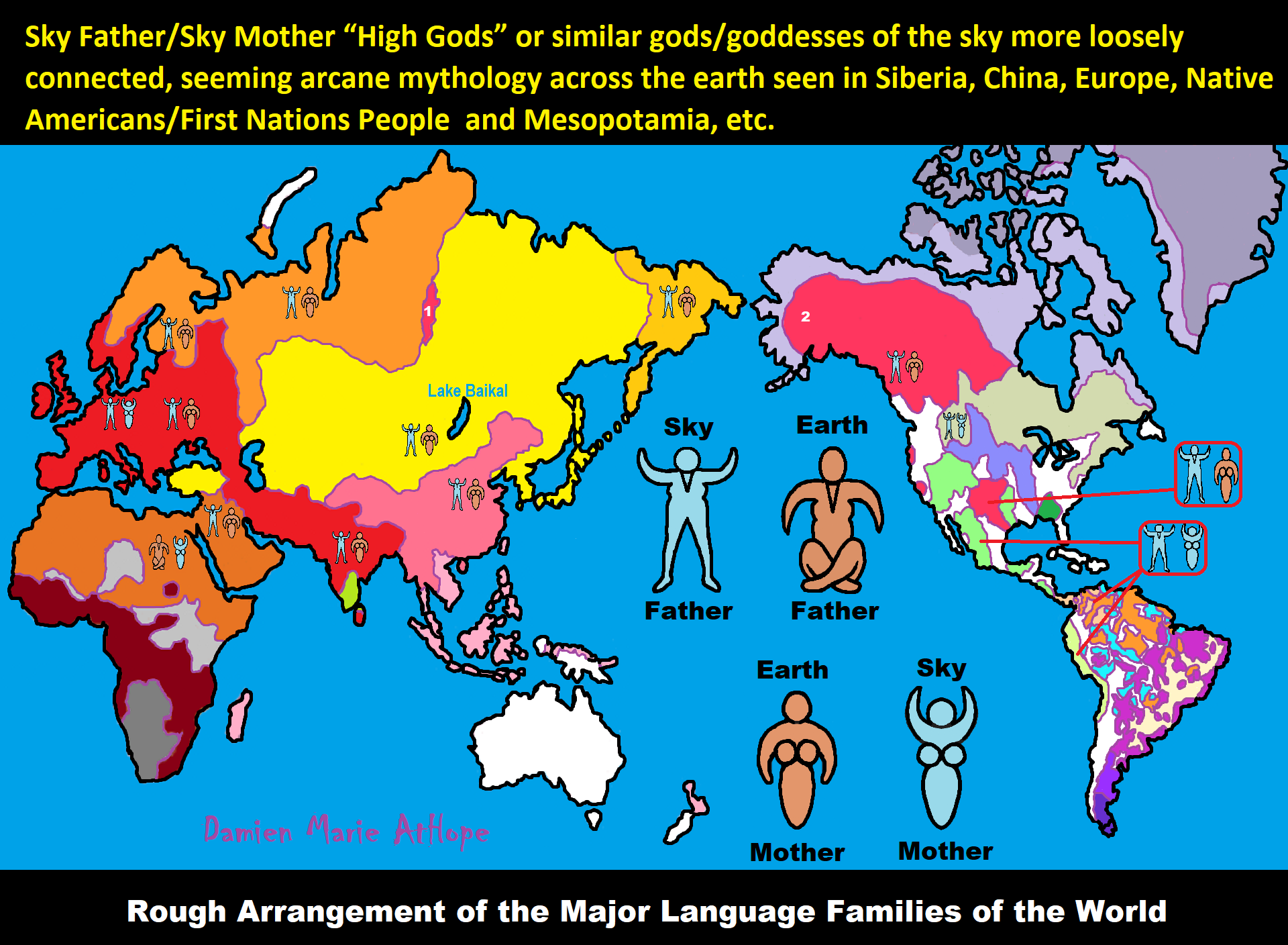
ref, ref, ref, ref, ref, ref, ref, ref, ref, ref, ref, ref, ref, ref, ref, ref, ref
“These ideas are my speculations from the evidence.”
I am still researching the “god‘s origins” all over the world. So you know, it is very complicated but I am smart and willing to look, DEEP, if necessary, which going very deep does seem to be needed here, when trying to actually understand the evolution of gods and goddesses. I am sure of a few things and less sure of others, but even in stuff I am not fully grasping I still am slowly figuring it out, to explain it to others. But as I research more I am understanding things a little better, though I am still working on understanding it all or something close and thus always figuring out more.
Sky Father/Sky God?
“Egyptian: (Nut) Sky Mother and (Geb) Earth Father” (Egypt is different but similar)
Turkic/Mongolic: (Tengri/Tenger Etseg) Sky Father and (Eje/Gazar Eej) Earth Mother *Transeurasian*
Hawaiian: (Wākea) Sky Father and (Papahānaumoku) Earth Mother *Austronesian*
New Zealand/ Māori: (Ranginui) Sky Father and (Papatūānuku) Earth Mother *Austronesian*
Proto-Indo-European: (Dyḗus/Dyḗus ph₂tḗr) Sky Father and (Dʰéǵʰōm/Pleth₂wih₁) Earth Mother
Indo-Aryan: (Dyaus Pita) Sky Father and (Prithvi Mata) Earth Mother *Indo-European*
Italic: (Jupiter) Sky Father and (Juno) Sky Mother *Indo-European*
Etruscan: (Tinia) Sky Father and (Uni) Sky Mother *Tyrsenian/Italy Pre–Indo-European*
Hellenic/Greek: (Zeus) Sky Father and (Hera) Sky Mother who started as an “Earth Goddess” *Indo-European*
Nordic: (Dagr) Sky Father and (Nótt) Sky Mother *Indo-European*
Slavic: (Perun) Sky Father and (Mokosh) Earth Mother *Indo-European*
Illyrian: (Deipaturos) Sky Father and (Messapic Damatura’s “earth-mother” maybe) Earth Mother *Indo-European*
Albanian: (Zojz) Sky Father and (?) *Indo-European*
Baltic: (Perkūnas) Sky Father and (Saulė) Sky Mother *Indo-European*
Germanic: (Týr) Sky Father and (?) *Indo-European*
Colombian-Muisca: (Bochica) Sky Father and (Huythaca) Sky Mother *Chibchan*
Aztec: (Quetzalcoatl) Sky Father and (Xochiquetzal) Sky Mother *Uto-Aztecan*
Incan: (Viracocha) Sky Father and (Mama Runtucaya) Sky Mother *Quechuan*
China: (Tian/Shangdi) Sky Father and (Dì) Earth Mother *Sino-Tibetan*
Sumerian, Assyrian and Babylonian: (An/Anu) Sky Father and (Ki) Earth Mother
Finnish: (Ukko) Sky Father and (Akka) Earth Mother *Finno-Ugric*
Sami: (Horagalles) Sky Father and (Ravdna) Earth Mother *Finno-Ugric*
Puebloan-Zuni: (Ápoyan Ta’chu) Sky Father and (Áwitelin Tsíta) Earth Mother
Puebloan-Hopi: (Tawa) Sky Father and (Kokyangwuti/Spider Woman/Grandmother) Earth Mother *Uto-Aztecan*
Puebloan-Navajo: (Tsohanoai) Sky Father and (Estsanatlehi) Earth Mother *Na-Dene*
ref, ref, ref, ref, ref, ref, ref, ref, ref, ref, ref, ref, ref, ref, ref, ref, ref, ref, ref, ref, ref, ref, ref, ref, ref, ref, ref
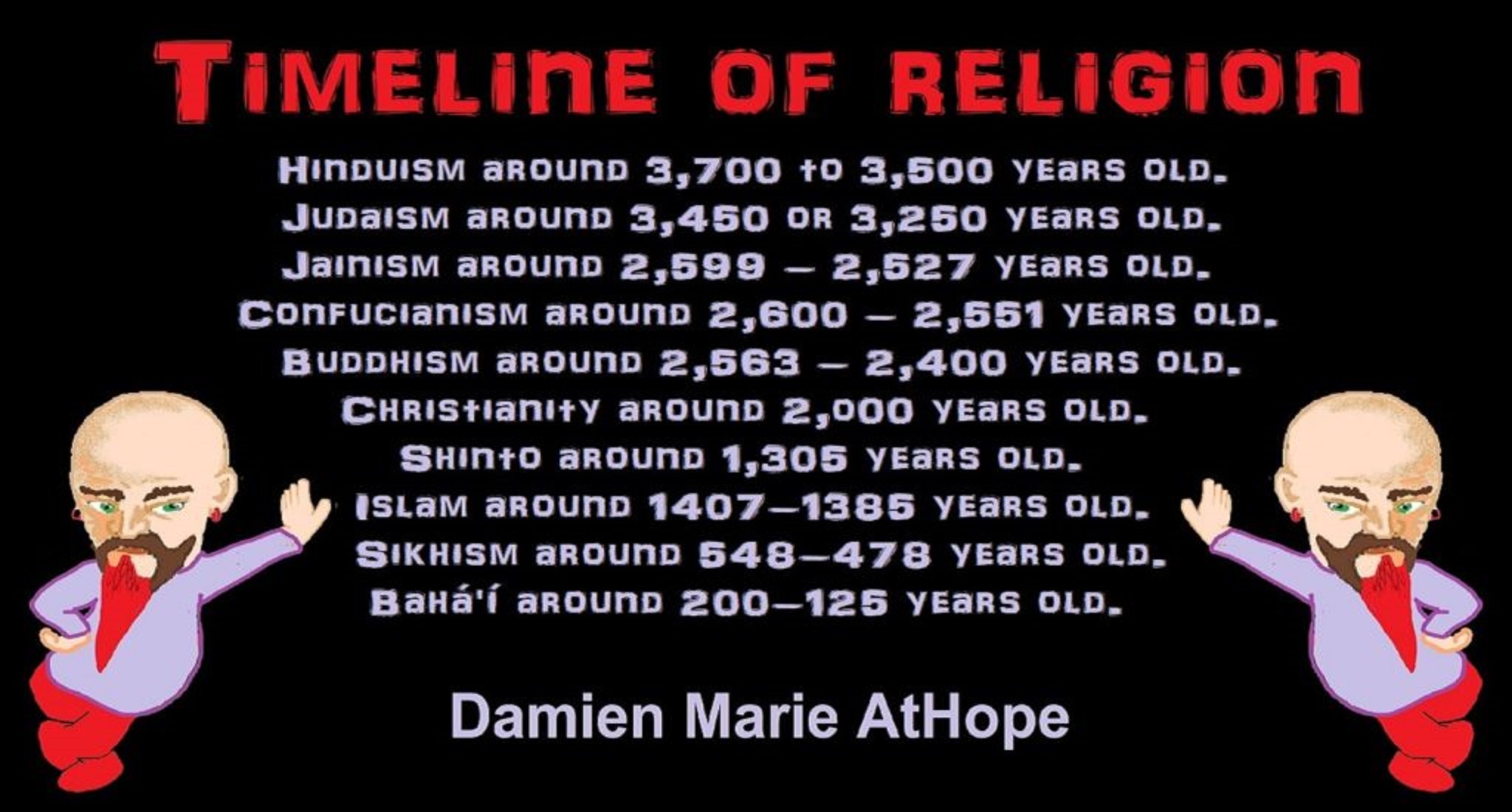
Hinduism around 3,700 to 3,500 years old. ref
Judaism around 3,450 or 3,250 years old. (The first writing in the bible was “Paleo-Hebrew” dated to around 3,000 years ago Khirbet Qeiyafa is the site of an ancient fortress city overlooking the Elah Valley. And many believe the religious Jewish texts were completed around 2,500) ref, ref
Judaism is around 3,450 or 3,250 years old. (“Paleo-Hebrew” 3,000 years ago and Torah 2,500 years ago)
“Judaism is an Abrahamic, its roots as an organized religion in the Middle East during the Bronze Age. Some scholars argue that modern Judaism evolved from Yahwism, the religion of ancient Israel and Judah, by the late 6th century BCE, and is thus considered to be one of the oldest monotheistic religions.” ref
“Yahwism is the name given by modern scholars to the religion of ancient Israel, essentially polytheistic, with a plethora of gods and goddesses. Heading the pantheon was Yahweh, the national god of the Israelite kingdoms of Israel and Judah, with his consort, the goddess Asherah; below them were second-tier gods and goddesses such as Baal, Shamash, Yarikh, Mot, and Astarte, all of whom had their own priests and prophets and numbered royalty among their devotees, and a third and fourth tier of minor divine beings, including the mal’ak, the messengers of the higher gods, who in later times became the angels of Judaism, Christianity and Islam. Yahweh, however, was not the ‘original’ god of Israel “Isra-El”; it is El, the head of the Canaanite pantheon, whose name forms the basis of the name “Israel”, and none of the Old Testament patriarchs, the tribes of Israel, the Judges, or the earliest monarchs, have a Yahwistic theophoric name (i.e., one incorporating the name of Yahweh).” ref
“El is a Northwest Semitic word meaning “god” or “deity“, or referring (as a proper name) to any one of multiple major ancient Near Eastern deities. A rarer form, ‘ila, represents the predicate form in Old Akkadian and in Amorite. The word is derived from the Proto-Semitic *ʔil-, meaning “god”. Specific deities known as ‘El or ‘Il include the supreme god of the ancient Canaanite religion and the supreme god of East Semitic speakers in Mesopotamia’s Early Dynastic Period. ʼĒl is listed at the head of many pantheons. In some Canaanite and Ugaritic sources, ʼĒl played a role as father of the gods, of creation, or both. For example, in the Ugaritic texts, ʾil mlk is understood to mean “ʼĒl the King” but ʾil hd as “the god Hadad“. The Semitic root ʾlh (Arabic ʾilāh, Aramaic ʾAlāh, ʾElāh, Hebrew ʾelōah) may be ʾl with a parasitic h, and ʾl may be an abbreviated form of ʾlh. In Ugaritic the plural form meaning “gods” is ʾilhm, equivalent to Hebrew ʾelōhîm “powers”. In the Hebrew texts this word is interpreted as being semantically singular for “god” by biblical commentators. However the documentary hypothesis for the Old Testament (corresponds to the Jewish Torah) developed originally in the 1870s, identifies these that different authors – the Jahwist, Elohist, Deuteronomist, and the Priestly source – were responsible for editing stories from a polytheistic religion into those of a monotheistic religion. Inconsistencies that arise between monotheism and polytheism in the texts are reflective of this hypothesis.” ref
Jainism around 2,599 – 2,527 years old. ref
Confucianism around 2,600 – 2,551 years old. ref
Buddhism around 2,563/2,480 – 2,483/2,400 years old. ref
Christianity around 2,o00 years old. ref
Shinto around 1,305 years old. ref
Islam around 1407–1385 years old. ref

Knowledge to Ponder:
Stars/Astrology:
- Possibly, around 30,000 years ago (in simpler form) to 6,000 years ago, Stars/Astrology are connected to Ancestors, Spirit Animals, and Deities.
- The star also seems to be a possible proto-star for Star of Ishtar, Star of Inanna, or Star of Venus.
- Around 7,000 to 6,000 years ago, Star Constellations/Astrology have connections to the “Kurgan phenomenon” of below-ground “mound” stone/wood burial structures and “Dolmen phenomenon” of above-ground stone burial structures.
- Around 6,500–5,800 years ago, The Northern Levant migrations into Jordon and Israel in the Southern Levant brought new cultural and religious transfer from Turkey and Iran.
- “The Ghassulian Star,” a mysterious 6,000-year-old mural from Jordan may have connections to the European paganstic kurgan/dolmens phenomenon.
“Astrology is a range of divinatory practices, recognized as pseudoscientific since the 18th century, that claim to discern information about human affairs and terrestrial events by studying the apparent positions of celestial objects. Different cultures have employed forms of astrology since at least the 2nd millennium BCE, these practices having originated in calendrical systems used to predict seasonal shifts and to interpret celestial cycles as signs of divine communications. Most, if not all, cultures have attached importance to what they observed in the sky, and some—such as the Hindus, Chinese, and the Maya—developed elaborate systems for predicting terrestrial events from celestial observations. Western astrology, one of the oldest astrological systems still in use, can trace its roots to 19th–17th century BCE Mesopotamia, from where it spread to Ancient Greece, Rome, the Islamicate world and eventually Central and Western Europe. Contemporary Western astrology is often associated with systems of horoscopes that purport to explain aspects of a person’s personality and predict significant events in their lives based on the positions of celestial objects; the majority of professional astrologers rely on such systems.” ref
Around 5,500 years ago, Science evolves, The first evidence of science was 5,500 years ago and was demonstrated by a body of empirical, theoretical, and practical knowledge about the natural world. ref
Around 5,000 years ago, Origin of Logics is a Naturalistic Observation (principles of valid reasoning, inference, & demonstration) ref
Around 4,150 to 4,000 years ago: The earliest surviving versions of the Sumerian Epic of Gilgamesh, which was originally titled “He who Saw the Deep” (Sha naqba īmuru) or “Surpassing All Other Kings” (Shūtur eli sharrī) were written. ref
Hinduism:
- 3,700 years ago or so, the oldest of the Hindu Vedas (scriptures), the Rig Veda was composed.
- 3,500 years ago or so, the Vedic Age began in India after the collapse of the Indus Valley Civilization.
Judaism:
- around 3,000 years ago, the first writing in the bible was “Paleo-Hebrew”
- around 2,500 years ago, many believe the religious Jewish texts were completed
Myths: The bible inspired religion is not just one religion or one myth but a grouping of several religions and myths
- Around 3,450 or 3,250 years ago, according to legend, is the traditionally accepted period in which the Israelite lawgiver, Moses, provided the Ten Commandments.
- Around 2,500 to 2,400 years ago, a collection of ancient religious writings by the Israelites based primarily upon the Hebrew Bible, Tanakh, or Old Testament is the first part of Christianity’s bible.
- Around 2,400 years ago, the most accepted hypothesis is that the canon was formed in stages, first the Pentateuch (Torah).
- Around 2,140 to 2,116 years ago, the Prophets was written during the Hasmonean dynasty, and finally the remaining books.
- Christians traditionally divide the Old Testament into four sections:
- The first five books or Pentateuch (Torah).
- The proposed history books telling the history of the Israelites from their conquest of Canaan to their defeat and exile in Babylon.
- The poetic and proposed “Wisdom books” dealing, in various forms, with questions of good and evil in the world.
- The books of the biblical prophets, warning of the consequences of turning away from God:
- Henotheism:
- Exodus 20:23 “You shall not make other gods besides Me (not saying there are no other gods just not to worship them); gods of silver or gods of gold, you shall not make for yourselves.”
- Polytheism:
- Judges 10:6 “Then the sons of Israel again did evil in the sight of the LORD, served the Baals and the Ashtaroth, the gods of Aram, the gods of Sidon, the gods of Moab, the gods of the sons of Ammon, and the gods of the Philistines; thus they forsook the LORD and did not serve Him.”
- 1 Corinthians 8:5 “For even if there are so-called gods whether in heaven or on earth, as indeed there are many gods and many lords.”
- Monotheism:
- Isaiah 43:10 “You are my witnesses,” declares the LORD, “and my servant whom I have chosen, so that you may know and believe me and understand that I am he. Before me no god was formed, nor will there be one after me.
Around 2,570 to 2,270 Years Ago, there is a confirmation of atheistic doubting as well as atheistic thinking, mainly by Greek philosophers. However, doubting gods is likely as old as the invention of gods and should destroy the thinking that belief in god(s) is the “default belief”. The Greek word is apistos (a “not” and pistos “faithful,”), thus not faithful or faithless because one is unpersuaded and unconvinced by a god(s) claim. Short Definition: unbelieving, unbeliever, or unbelief.

Expressions of Atheistic Thinking:
- Around 2,600 years ago, Ajita Kesakambali, ancient Indian philosopher, who is the first known proponent of Indian materialism. ref
- Around 2,535 to 2,475 years ago, Heraclitus, Greek pre-Socratic philosopher, a native of the Greek city Ephesus, Ionia, on the coast of Anatolia, also known as Asia Minor or modern Turkey. ref
- Around 2,500 to 2,400 years ago, according to The Story of Civilization book series certain African pygmy tribes have no identifiable gods, spirits, or religious beliefs or rituals, and even what burials accrue are without ceremony. ref
- Around 2,490 to 2,430 years ago, Empedocles, Greek pre-Socratic philosopher and a citizen of Agrigentum, a Greek city in Sicily. ref
- Around 2,460 to 2,370 years ago, Democritus, Greek pre-Socratic philosopher considered to be the “father of modern science” possibly had some disbelief amounting to atheism. ref
- Around 2,399 years ago or so, Socrates, a famous Greek philosopher was tried for sinfulness by teaching doubt of state gods. ref
- Around 2,341 to 2,270 years ago, Epicurus, a Greek philosopher known for composing atheistic critics and famously stated, “Is God willing to prevent evil, but not able? Then he is not omnipotent. Is he able, but not willing? Then he is malevolent. Is he both able and willing? Then whence cometh evil? Is he neither able nor willing? Then why call him god?” ref
This last expression by Epicurus, seems to be an expression of Axiological Atheism. To understand and utilize value or actually possess “Value Conscious/Consciousness” to both give a strong moral “axiological” argument (the problem of evil) as well as use it to fortify humanism and positive ethical persuasion of human helping and care responsibilities. Because value-blindness gives rise to sociopathic/psychopathic evil.
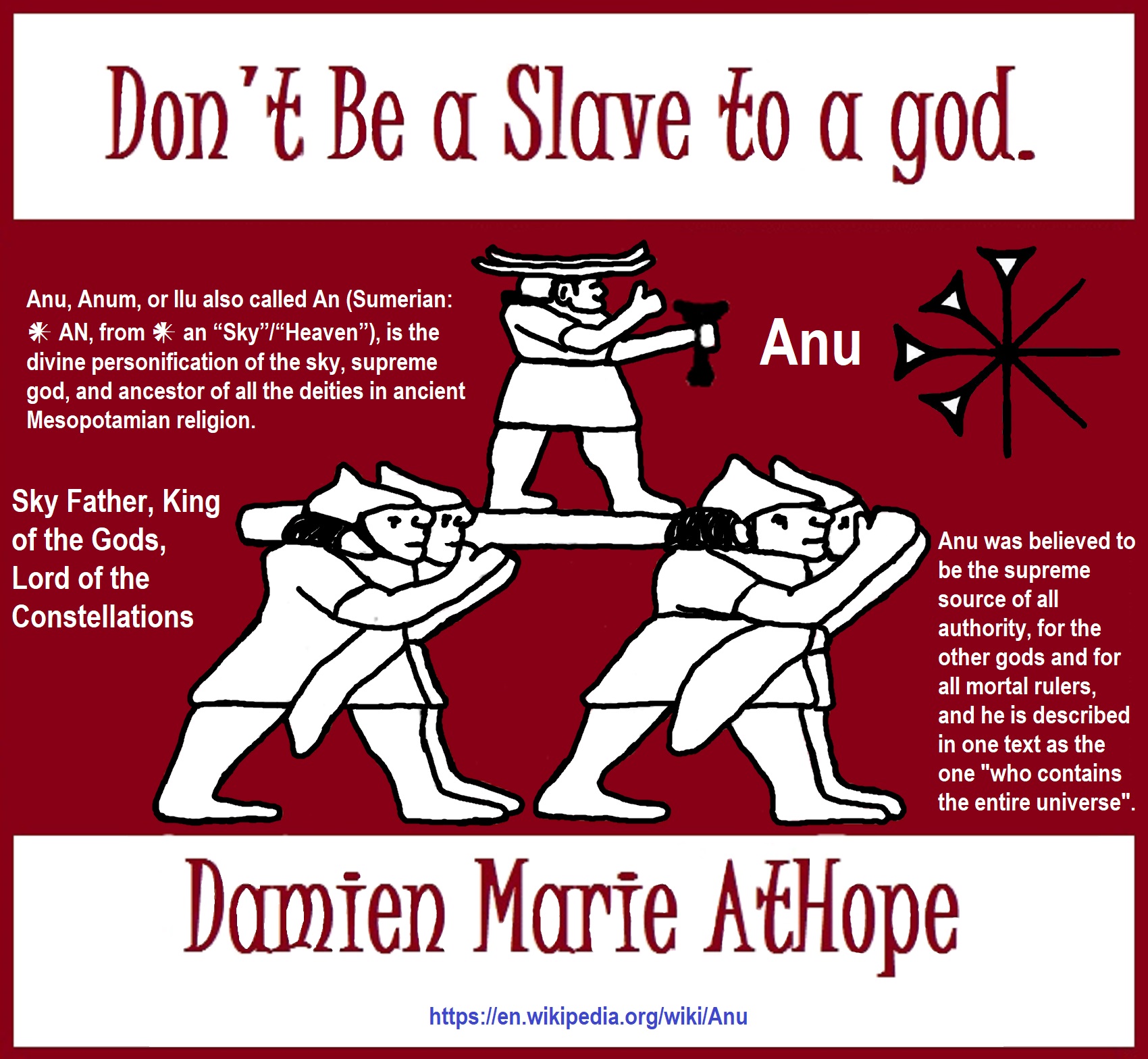
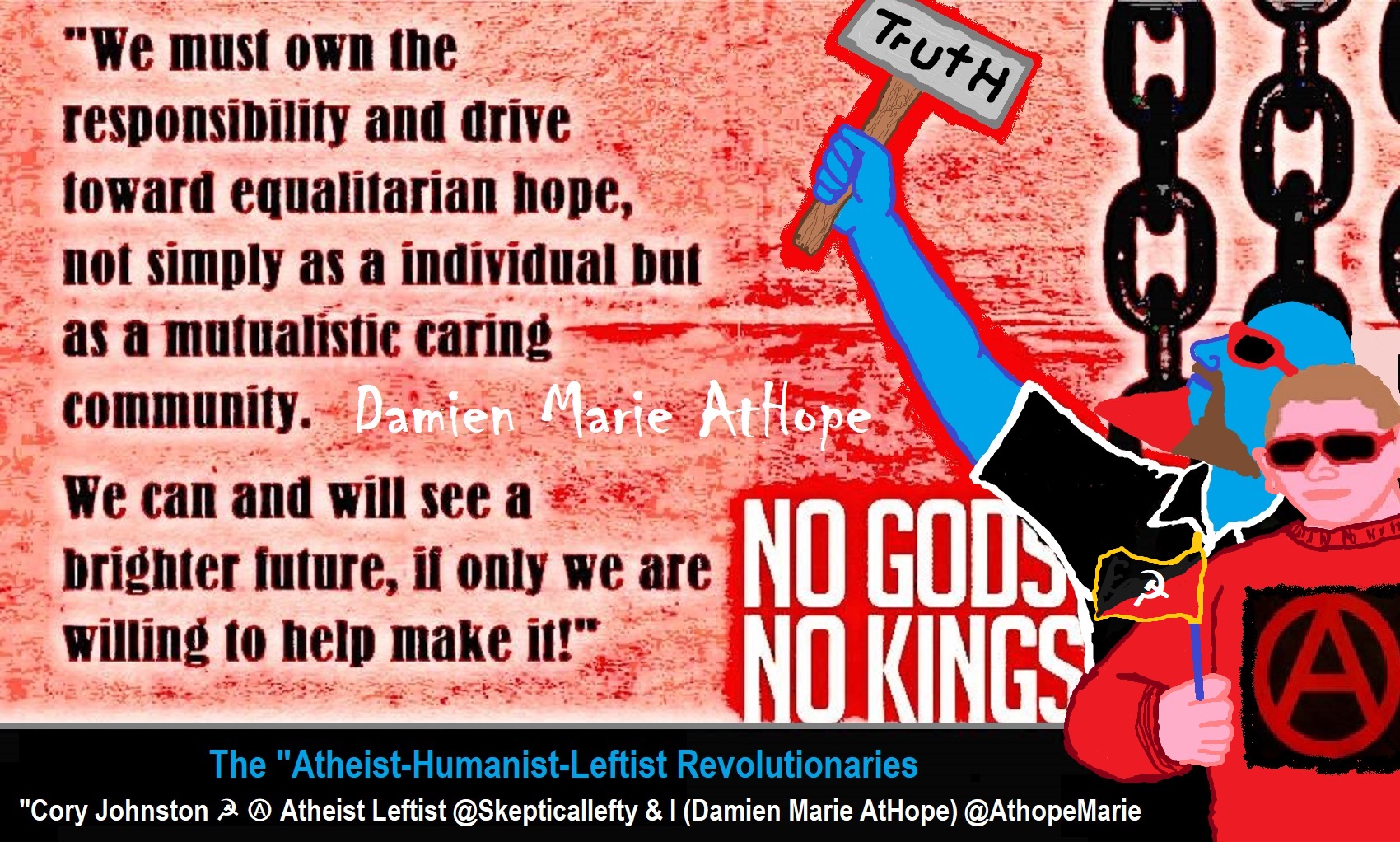
While hallucinogens are associated with shamanism, it is alcohol that is associated with paganism.
The Atheist-Humanist-Leftist Revolutionaries Shows in the prehistory series:
Show two: Pre-animism 300,000 years old and animism 100,000 years old: related to “Anarchism and Socialism”
Show tree: Totemism 50,000 years old: related to “Anarchism and Socialism”
Show four: Shamanism 30,000 years old: related to “Anarchism and Socialism”
Show five: Paganism 12,000 years old: related to “Anarchism and Socialism”
Show six: Emergence of hierarchy, sexism, slavery, and the new male god dominance: Paganism 7,000-5,000 years old: related to “Anarchism and Socialism” (Capitalism) (World War 0) Elite and their slaves!
Prehistory: related to “Anarchism and Socialism” the division of labor, power, rights, and recourses: VIDEO
Pre-animism 300,000 years old and animism 100,000 years old: related to “Anarchism and Socialism”: VIDEO
Totemism 50,000 years old: related to “Anarchism and Socialism”: VIDEO
Shamanism 30,000 years old: related to “Anarchism and Socialism”: VIDEO
Paganism 12,000 years old: related to “Anarchism and Socialism” (Pre-Capitalism): VIDEO
Paganism 7,000-5,000 years old: related to “Anarchism and Socialism” (Capitalism) (World War 0) Elite and their slaves: VIEDO
Paganism 5,000 years old: progressed organized religion and the state: related to “Anarchism and Socialism” (Kings and the Rise of the State): VIEDO
Paganism 4,000 years old: related to “Anarchism and Socialism” (First Moralistic gods, then the Origin time of Monotheism): VIEDO
I do not hate simply because I challenge and expose myths or lies any more than others being thought of as loving simply because of the protection and hiding from challenge their favored myths or lies.
The truth is best championed in the sunlight of challenge.
An archaeologist once said to me “Damien religion and culture are very different”
My response, So are you saying that was always that way, such as would you say Native Americans’ cultures are separate from their religions? And do you think it always was the way you believe?
I had said that religion was a cultural product. That is still how I see it and there are other archaeologists that think close to me as well. Gods too are the myths of cultures that did not understand science or the world around them, seeing magic/supernatural everywhere.
I personally think there is a goddess and not enough evidence to support a male god at Çatalhöyük but if there was both a male and female god and goddess then I know the kind of gods they were like Proto-Indo-European mythology.
This series idea was addressed in, Anarchist Teaching as Free Public Education or Free Education in the Public: VIDEO
Our 12 video series: Organized Oppression: Mesopotamian State Force and the Politics of power (9,000-4,000 years ago), is adapted from: The Complete and Concise History of the Sumerians and Early Bronze Age Mesopotamia (7000-2000 BC): https://www.youtube.com/watch?v=szFjxmY7jQA by “History with Cy“
Show #1: Mesopotamian State Force and the Politics of Power (Samarra, Halaf, Ubaid)
Show #2: Mesopotamian State Force and the Politics of Power
Show #3: Mesopotamian State Force and the Politics of Power (Uruk and the First Cities)
Show #4: Mesopotamian State Force and the Politics of Power (First Kings)
Show #5: Mesopotamian State Force and the Politics of Power (Early Dynastic Period)
Show #6: Mesopotamian State Force and the Politics of Power
Show #7: Mesopotamian State Force and the Politics of Power (Sargon and Akkadian Rule)
Show #9: Mesopotamian State Force and the Politics of Power (Gudea of Lagash and Utu-hegal)
Show #12: Mesopotamian State Force and the Politics of Power (Aftermath and Legacy of Sumer)
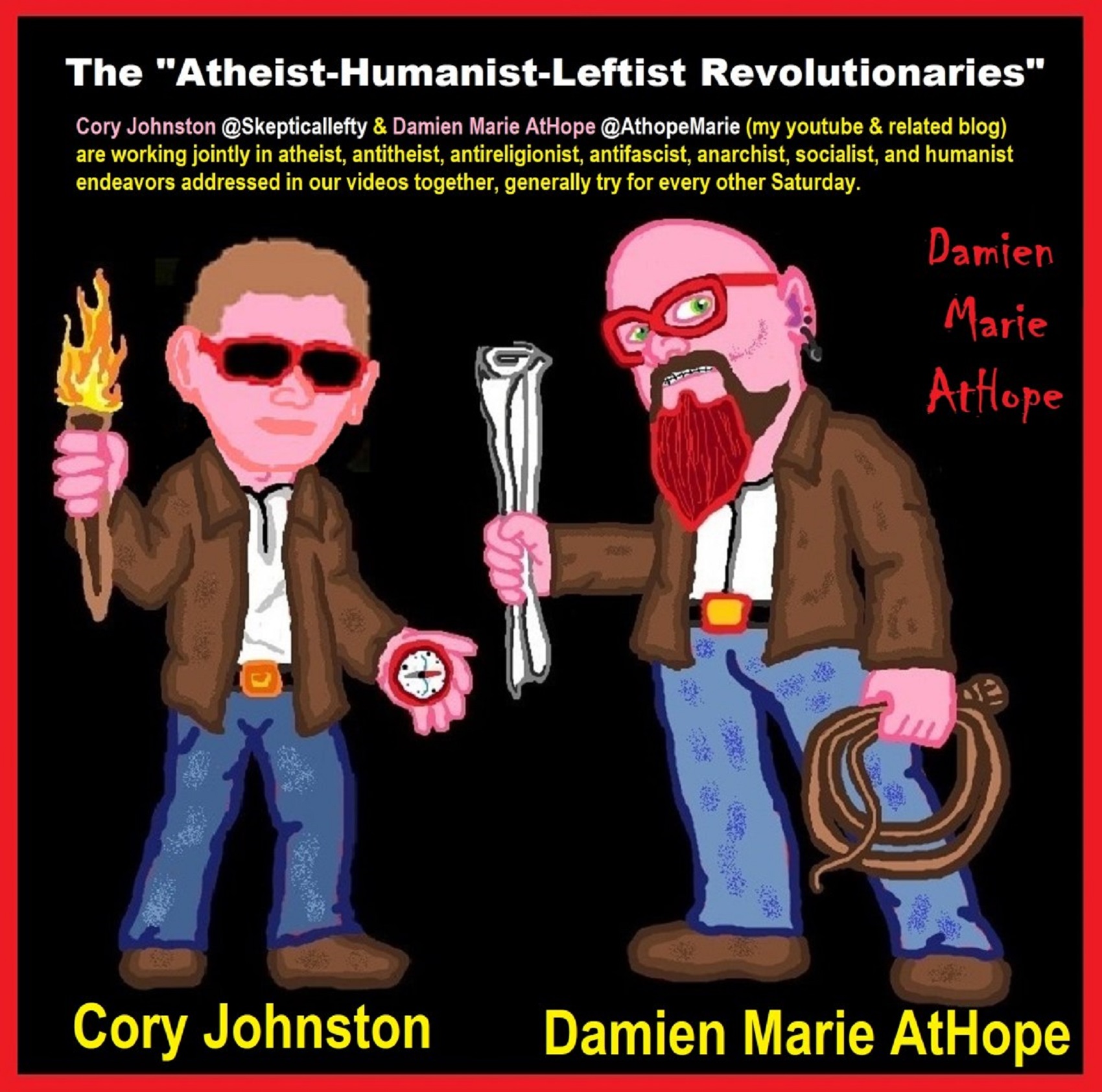
The “Atheist-Humanist-Leftist Revolutionaries”
Cory Johnston ☭ Ⓐ Atheist Leftist @Skepticallefty & I (Damien Marie AtHope) @AthopeMarie (my YouTube & related blog) are working jointly in atheist, antitheist, antireligionist, antifascist, anarchist, socialist, and humanist endeavors in our videos together, generally, every other Saturday.
Why Does Power Bring Responsibility?
Think, how often is it the powerless that start wars, oppress others, or commit genocide? So, I guess the question is to us all, to ask, how can power not carry responsibility in a humanity concept? I know I see the deep ethical responsibility that if there is power their must be a humanistic responsibility of ethical and empathic stewardship of that power. Will I be brave enough to be kind? Will I possess enough courage to be compassionate? Will my valor reach its height of empathy? I as everyone, earns our justified respect by our actions, that are good, ethical, just, protecting, and kind. Do I have enough self-respect to put my love for humanity’s flushing, over being brought down by some of its bad actors? May we all be the ones doing good actions in the world, to help human flourishing.
I create the world I want to live in, striving for flourishing. Which is not a place but a positive potential involvement and promotion; a life of humanist goal precision. To master oneself, also means mastering positive prosocial behaviors needed for human flourishing. I may have lost a god myth as an atheist, but I am happy to tell you, my friend, it is exactly because of that, leaving the mental terrorizer, god belief, that I truly regained my connected ethical as well as kind humanity.
Cory and I will talk about prehistory and theism, addressing the relevance to atheism, anarchism, and socialism.
At the same time as the rise of the male god, 7,000 years ago, there was also the very time there was the rise of violence, war, and clans to kingdoms, then empires, then states. It is all connected back to 7,000 years ago, and it moved across the world.
Cory Johnston: https://damienmarieathope.com/2021/04/cory-johnston-mind-of-a-skeptical-leftist/?v=32aec8db952d
The Mind of a Skeptical Leftist (YouTube)
Cory Johnston: Mind of a Skeptical Leftist @Skepticallefty
The Mind of a Skeptical Leftist By Cory Johnston: “Promoting critical thinking, social justice, and left-wing politics by covering current events and talking to a variety of people. Cory Johnston has been thoughtfully talking to people and attempting to promote critical thinking, social justice, and left-wing politics.” http://anchor.fm/skepticalleft
Cory needs our support. We rise by helping each other.
Cory Johnston ☭ Ⓐ @Skepticallefty Evidence-based atheist leftist (he/him) Producer, host, and co-host of 4 podcasts @skeptarchy @skpoliticspod and @AthopeMarie
Damien Marie AtHope (“At Hope”) Axiological Atheist, Anti-theist, Anti-religionist, Secular Humanist. Rationalist, Writer, Artist, Poet, Philosopher, Advocate, Activist, Psychology, and Armchair Archaeology/Anthropology/Historian.
Damien is interested in: Freedom, Liberty, Justice, Equality, Ethics, Humanism, Science, Atheism, Antiteism, Antireligionism, Ignosticism, Left-Libertarianism, Anarchism, Socialism, Mutualism, Axiology, Metaphysics, LGBTQI, Philosophy, Advocacy, Activism, Mental Health, Psychology, Archaeology, Social Work, Sexual Rights, Marriage Rights, Woman’s Rights, Gender Rights, Child Rights, Secular Rights, Race Equality, Ageism/Disability Equality, Etc. And a far-leftist, “Anarcho-Humanist.”
I am not a good fit in the atheist movement that is mostly pro-capitalist, I am anti-capitalist. Mostly pro-skeptic, I am a rationalist not valuing skepticism. Mostly pro-agnostic, I am anti-agnostic. Mostly limited to anti-Abrahamic religions, I am an anti-religionist.
To me, the “male god” seems to have either emerged or become prominent around 7,000 years ago, whereas the now favored monotheism “male god” is more like 4,000 years ago or so. To me, the “female goddess” seems to have either emerged or become prominent around 11,000-10,000 years ago or so, losing the majority of its once prominence around 2,000 years ago due largely to the now favored monotheism “male god” that grow in prominence after 4,000 years ago or so.
My Thought on the Evolution of Gods?
Animal protector deities from old totems/spirit animal beliefs come first to me, 13,000/12,000 years ago, then women as deities 11,000/10,000 years ago, then male gods around 7,000/8,000 years ago. Moralistic gods around 5,000/4,000 years ago, and monotheistic gods around 4,000/3,000 years ago.

Damien Marie AtHope (Said as “At” “Hope”)/(Autodidact Polymath but not good at math):
Axiological Atheist, Anti-theist, Anti-religionist, Secular Humanist, Rationalist, Writer, Artist, Jeweler, Poet, “autodidact” Philosopher, schooled in Psychology, and “autodidact” Armchair Archaeology/Anthropology/Pre-Historian (Knowledgeable in the range of: 1 million to 5,000/4,000 years ago). I am an anarchist socialist politically. Reasons for or Types of Atheism
My Website, My Blog, & Short-writing or Quotes, My YouTube, Twitter: @AthopeMarie, and My Email: damien.marie.athope@gmail.com

